Q



Quebec, North Shore & Labrador Railroad
Item: 1-Q Price: $125.00
Remarks: ca. post 1930
Forged by the Fraim Co.
Nice stamp marks and two-tone patina.
Different style bit than key below.
80 year+ octogenarian!
History
The Quebec North Shore & Labrador Railway (QNSX) is a private Canadian regional railway that stretches 414 kilometres (257 mi) through the wilderness of northeastern Quebec and western Labrador. It connects Labrador City, Labrador, with the port of Sept- les, Quebec, on the north shore of the St. Lawrence River. QNSX is owned by Rail Enterprises Incorporated, an agent and unit of Iron Ore Company of Canada (IOC), and is no longer a common carrier.
Click on image to view larger picture
R
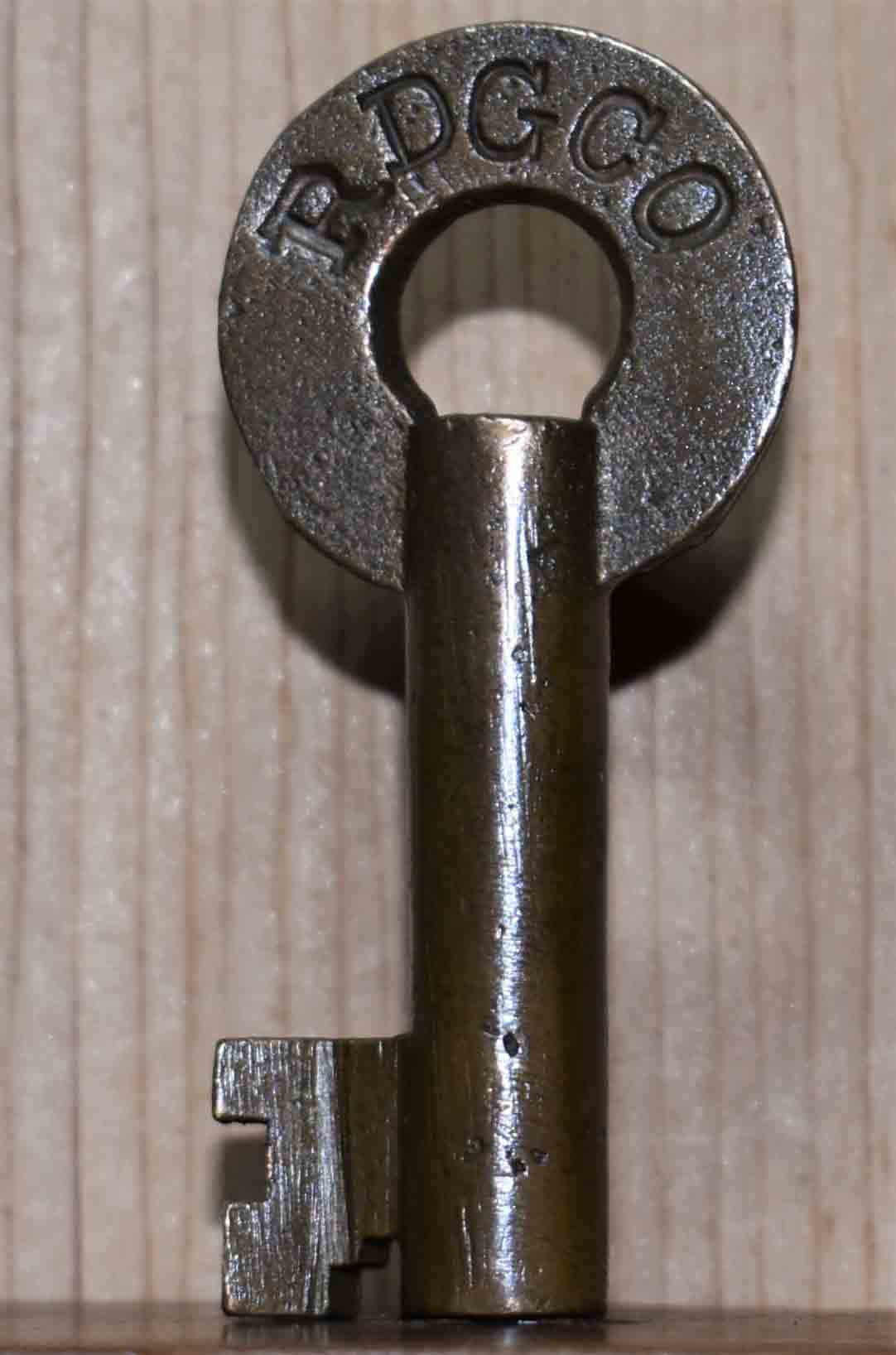


Reading Co.
Item: 3-R Price: $65.00
Remarks: ca. post 1930
Forged by the Fraim Co.
Nice stamp marks and copper patina.
Different style bit than key below.
80 year+ octogenarian!
History
The Reading Company, usually called the Reading Railroad, operated in southeast Pennsylvania and neighboring states. Until the decline in anthracite loadings in the Coal Region after World War II, it was one of the most prosperous corporations in the United States. Reduced coal traffic coupled with highway competition and short hauls forced it into bankruptcy in the 1970s. The railroad was merged into Conrail in 1976, but the corporation lasted into 2000, disposing of real estate holdings.
Click on image to view larger picture




Reading Co.
Item: 4-R Price: $75.00
Remarks: ca. 1904-21
Forged by the S.R. Slaymaker Co.
Superb serif stamp marks and patina.
Different style bit than key above.
100 year+ centenarian!
History - continued from above
Commonly called the Reading Railroad and logotyped as Reading Lines, the Reading Company was a railroad holding company for the majority of its existence and was a (single) railroad during its later years. It was a successor to the Philadelphia and Reading Railway Company founded in 1833. Until the decline in anthracite loadings in the Coal Region after World War II, it was one of the most prosperous corporations in the United States.
Click on image to view larger picture



Reading Co.
Item: 5-R Price: $75.00
Remarks: ca. 1904-21
Forged by the S.R. Slaymaker Co.
Superb stamp marks and bronze patina.
100 year+ centenarian!
History - continued from above
Competition with the modern trucking industry that used the Interstate highway system for short distance transportation of goods, also known as short hauls, compounded the company's problems, forcing it into bankruptcy in the 1970s.
Click on image to view larger picture
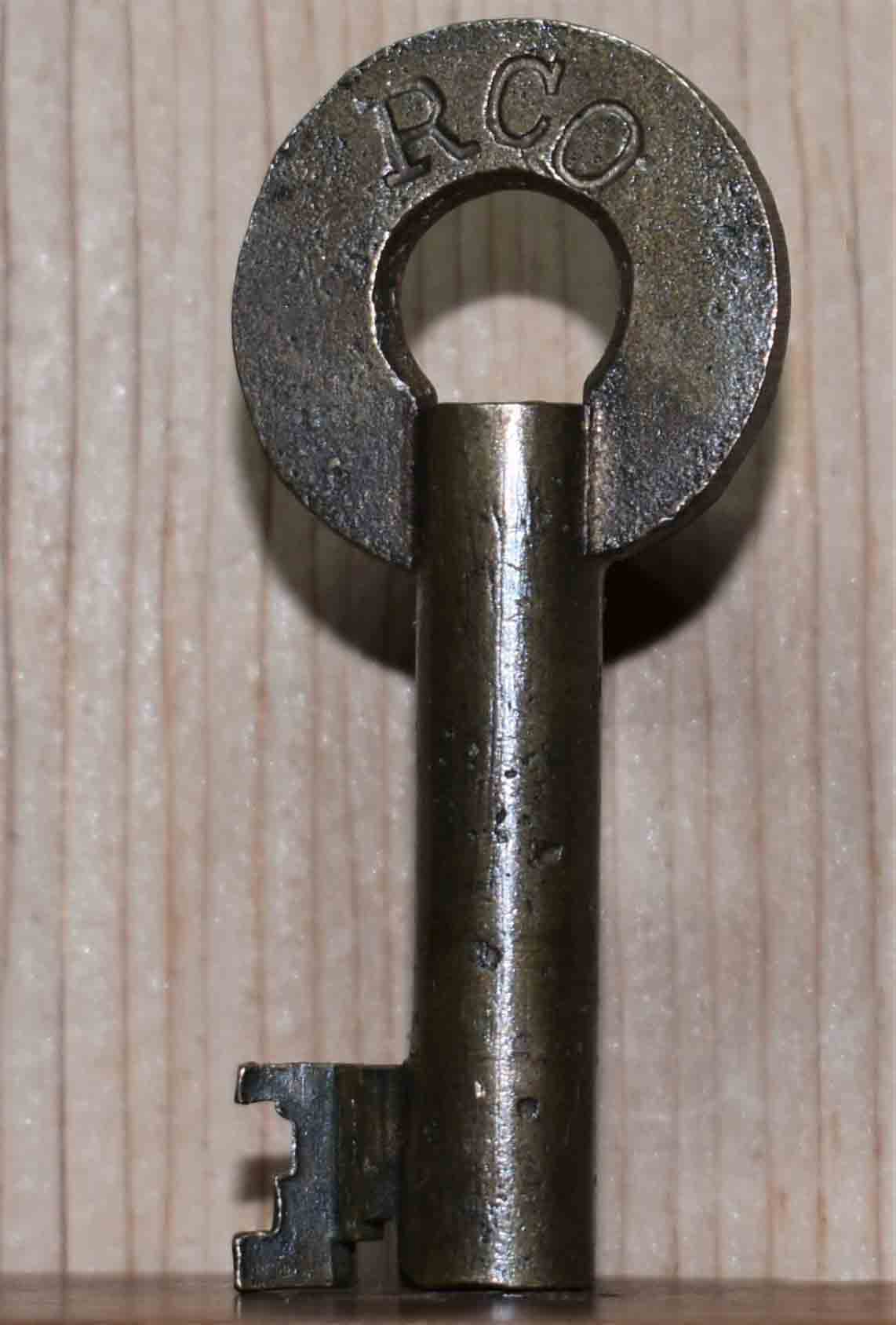


Reading Co.
Item: 6-R F series Price: $65.00
Remarks: ca. post 1930
Forged by the Fraim Co.
Superb stamp marks and copper patina.
"G" and "H" series keys listed below.
80 year+ octogenarian!
History - continued from above
The Reading Company did not operate extensive long distance passenger train service, but it did field a number of named trains, most famous of which was the streamlined Crusader, which connected Philadelphia and Jersey City.
Click on image to view larger picture
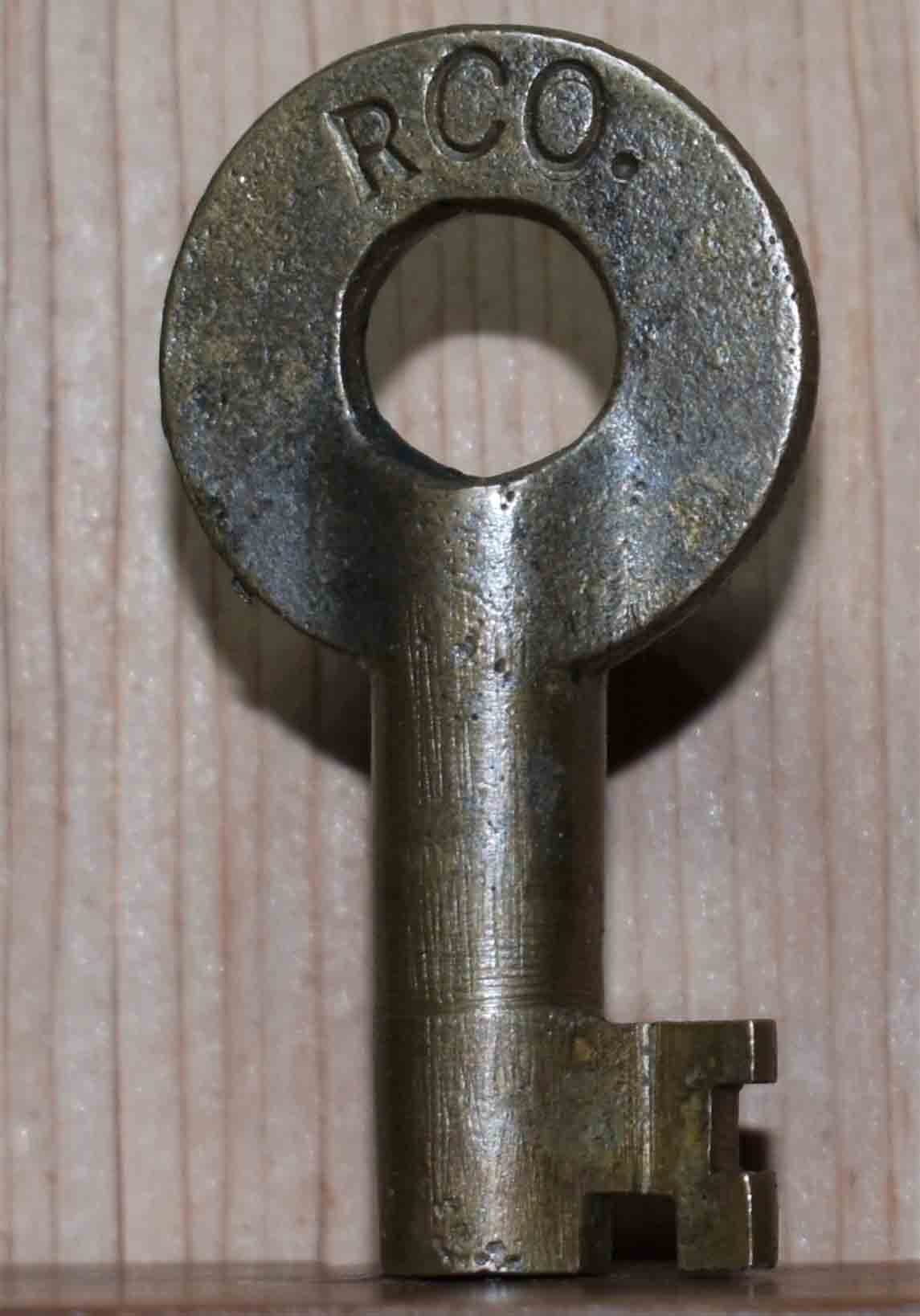
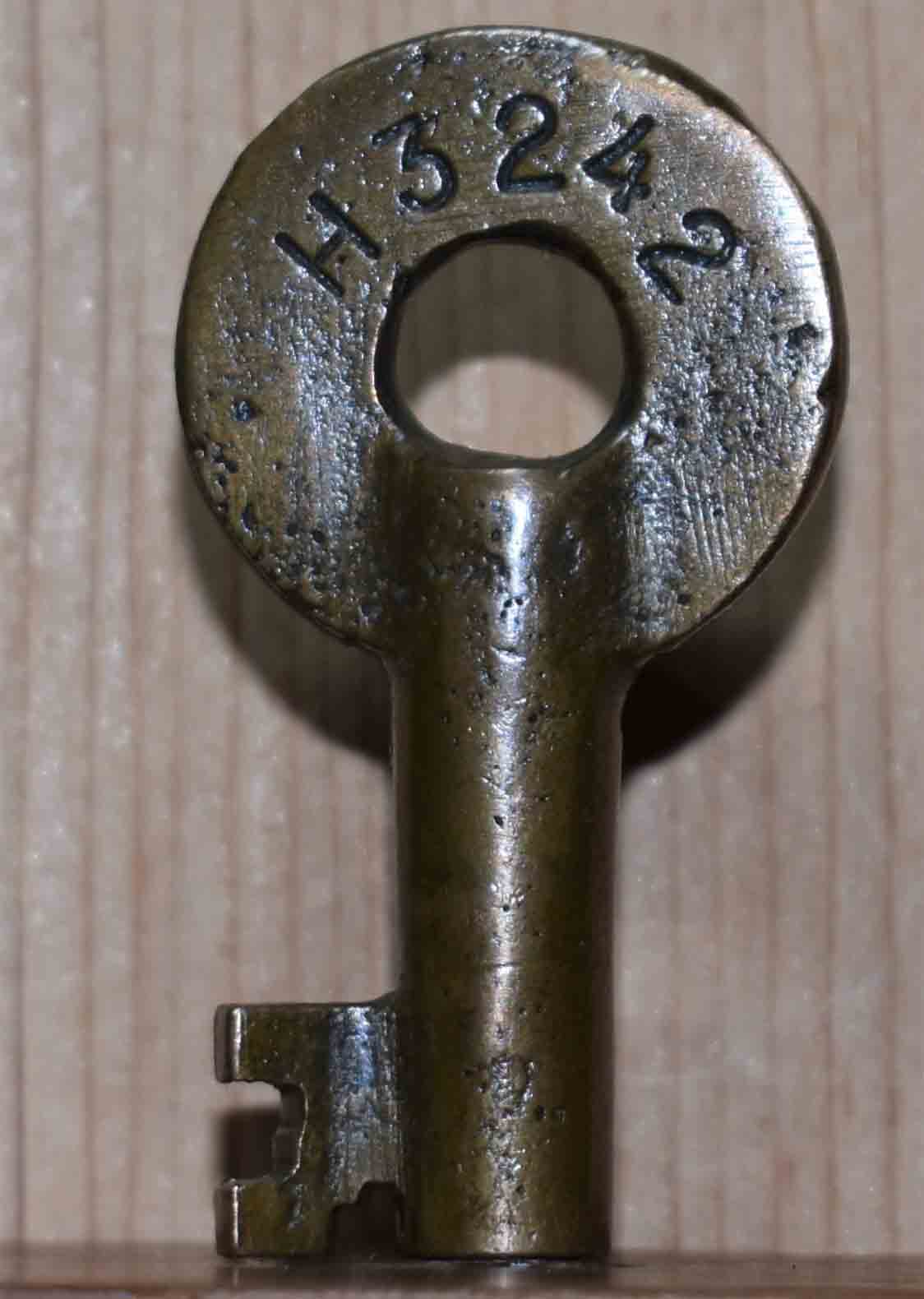

Reading Co.
Item: 7-R G series Price: $65.00
Remarks: ca. early/mid-1900s
Superb stamp marks and gold patina.
A Fraim-no doubt about it!
Click on image to view larger picture


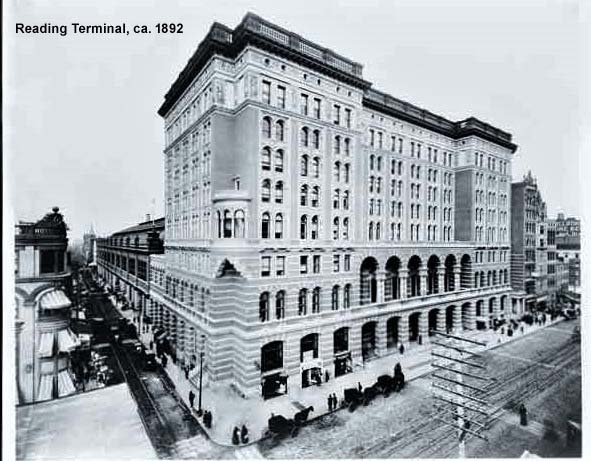
Reading Co.
Item: 8-R H series Price: $65.00
Remarks: ca. early/mid-1900s
Nice stamp marks and patina.
A Fraim-no doubt about it!
"G" and "F" series keys listed above.
Buy all 3 in Alpha Series = $10 off & free Priority Shipping.
Click on image to view larger picture
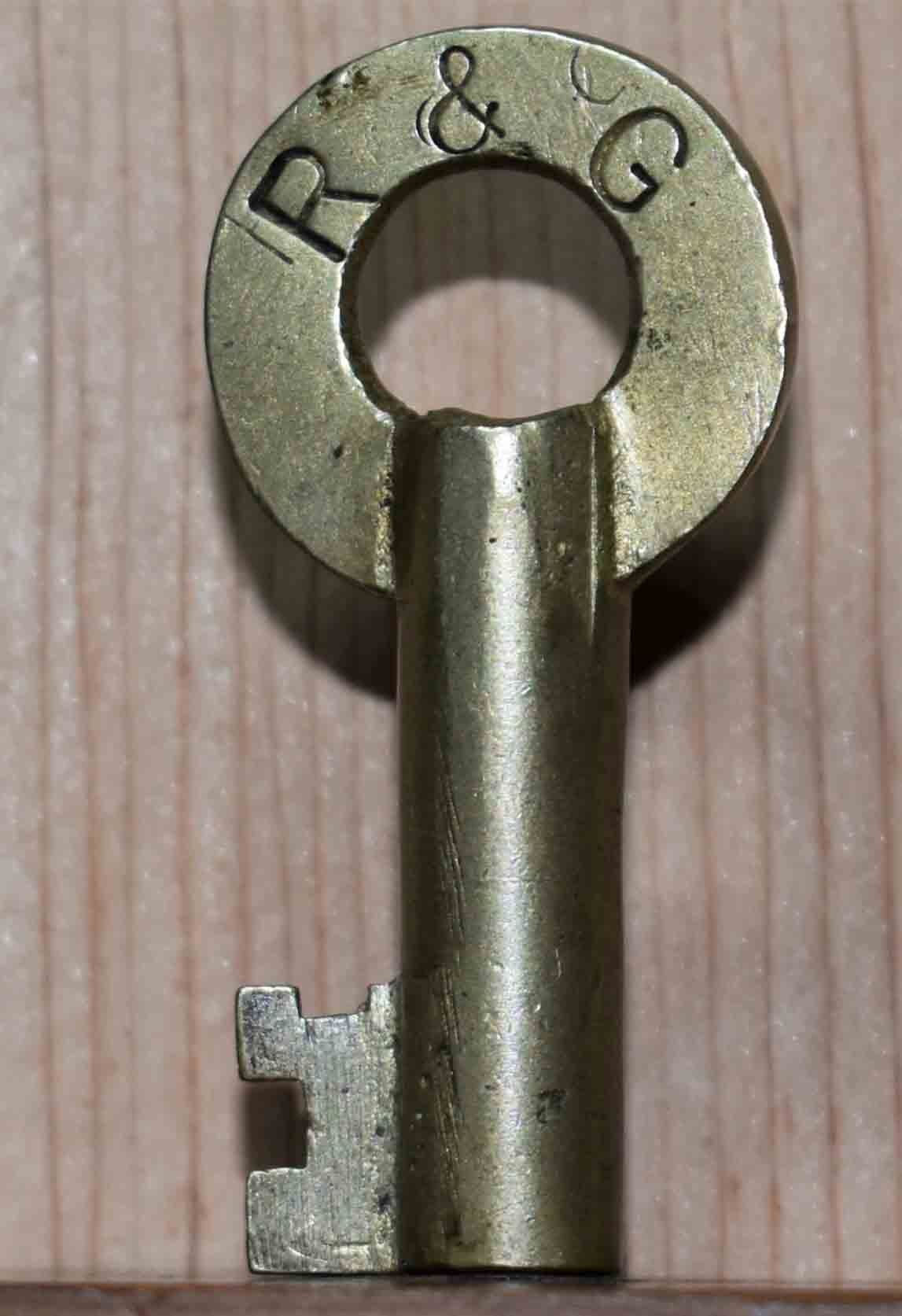


Raleigh & Gaston Railroad
Item: 12-R Price: $195.00 $180.00
Remarks: ca. mid-late 1800s
North Carolina line.
Excellent stamp marks and gold patina.
150 year+ centenarian!
History
The Raleigh & Gaston Railroad was a Raleigh, North Carolina-based railroad opened in April 1840 between Raleigh and the town of Gaston, North Carolina, on the Roanoke River. It was North Carolina's second railroad (the Wilmington & Raleigh Railroad opened one month earlier). The length was 100 miles (160 km) and built with 4 ft 8 in (1,422 mm) gauge.
The Raleigh & Gaston Railroad merged with the Seaboard Air Line Railroad in 1900, eventually becoming part of CSX Transportation. The Raleigh & Gaston's tracks now make up part of CSX's - S Line; the Norlina Subdivision of CSX's Florence Division.
Click on image to view larger picture

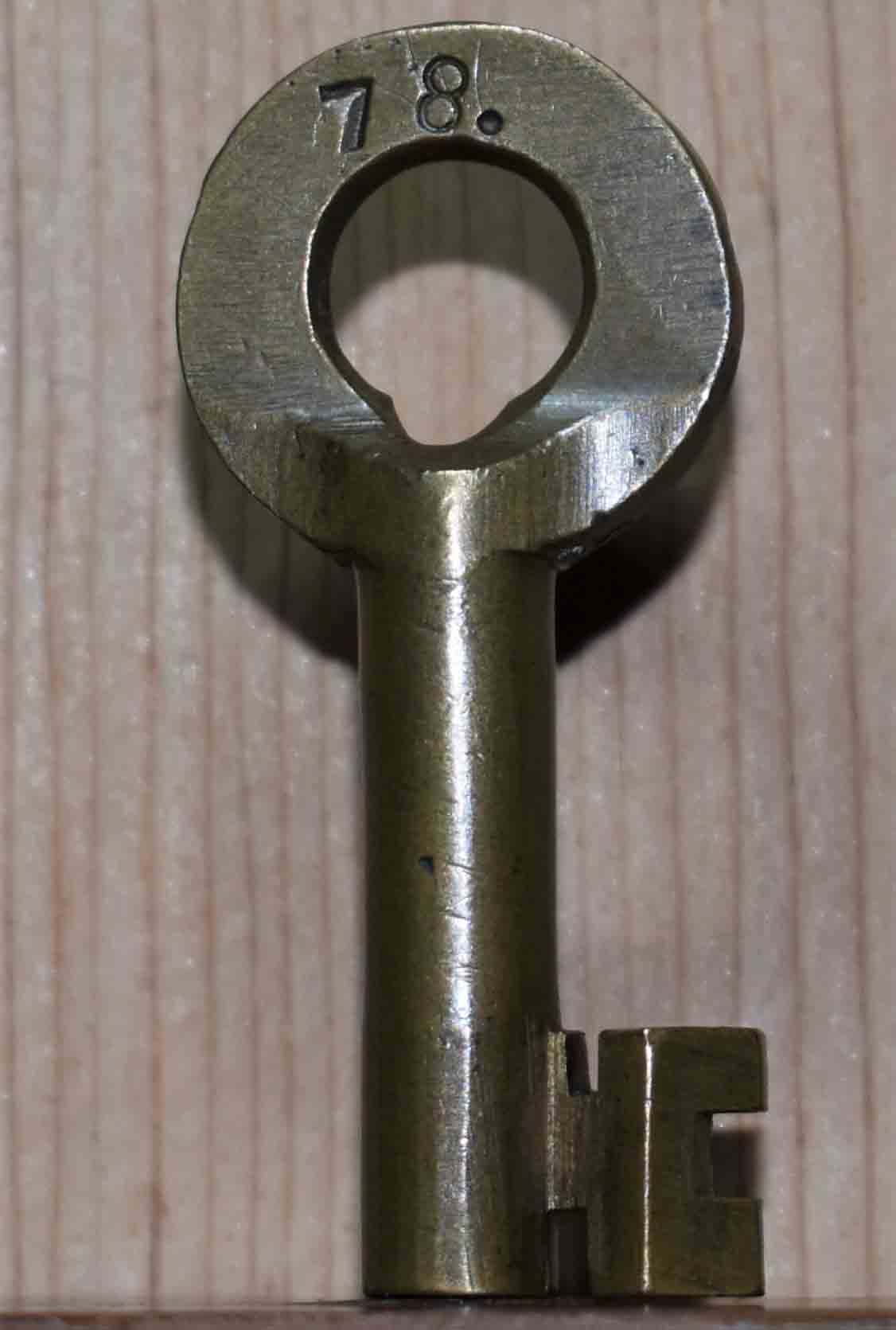
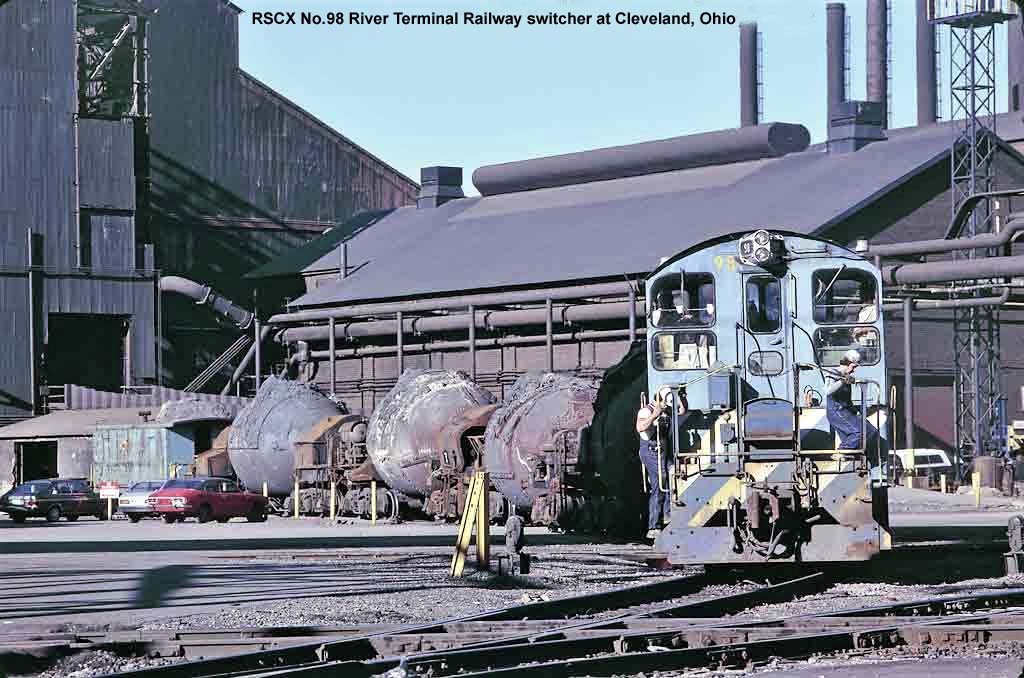
River Terminal Railway
Item: 14-R Price: $55.00
Remarks: ca. early 1900s
Nice stamp marks and caramel patina.
This Cleveland "Belt Line" was Chartered in 1909.
History
The River Terminal Railway Co., a class I "switching" or "Belt line," has been a vital link between Cuyahoga River Valley industries and the main-line railroads into Cleveland. The railway was incorporated in 1909 as a subsidiary of the Corrigan-McKinney Steel Co. to service 2 small blast furnaces on the west side of the Cuyahoga river. When Corrigan-McKinney became part of Republic Steel Corp. in 1935, the River Terminal Railway became a subsidiary of that company, with 1.5 mi. of main track connecting Republic's 2 open hearth blast furnaces on east side of the river. It continued to add sidings, locomotives, and freight cars to pick up iron ore from Republic's docks and move it to interchange points with other railroads, which then delivered it to plants in Warren and Youngstown. From these interchange points the railway would transport coal back to the mills. By 1972 it was moving 120 carloads of coal a day and 1.5 million tons of iron ore, as well as molten steel and finished products from one section of Republic's plant to another. The belt line also served chemical plants and other industries along the Cuyahoga River.
Click on image to view larger picture
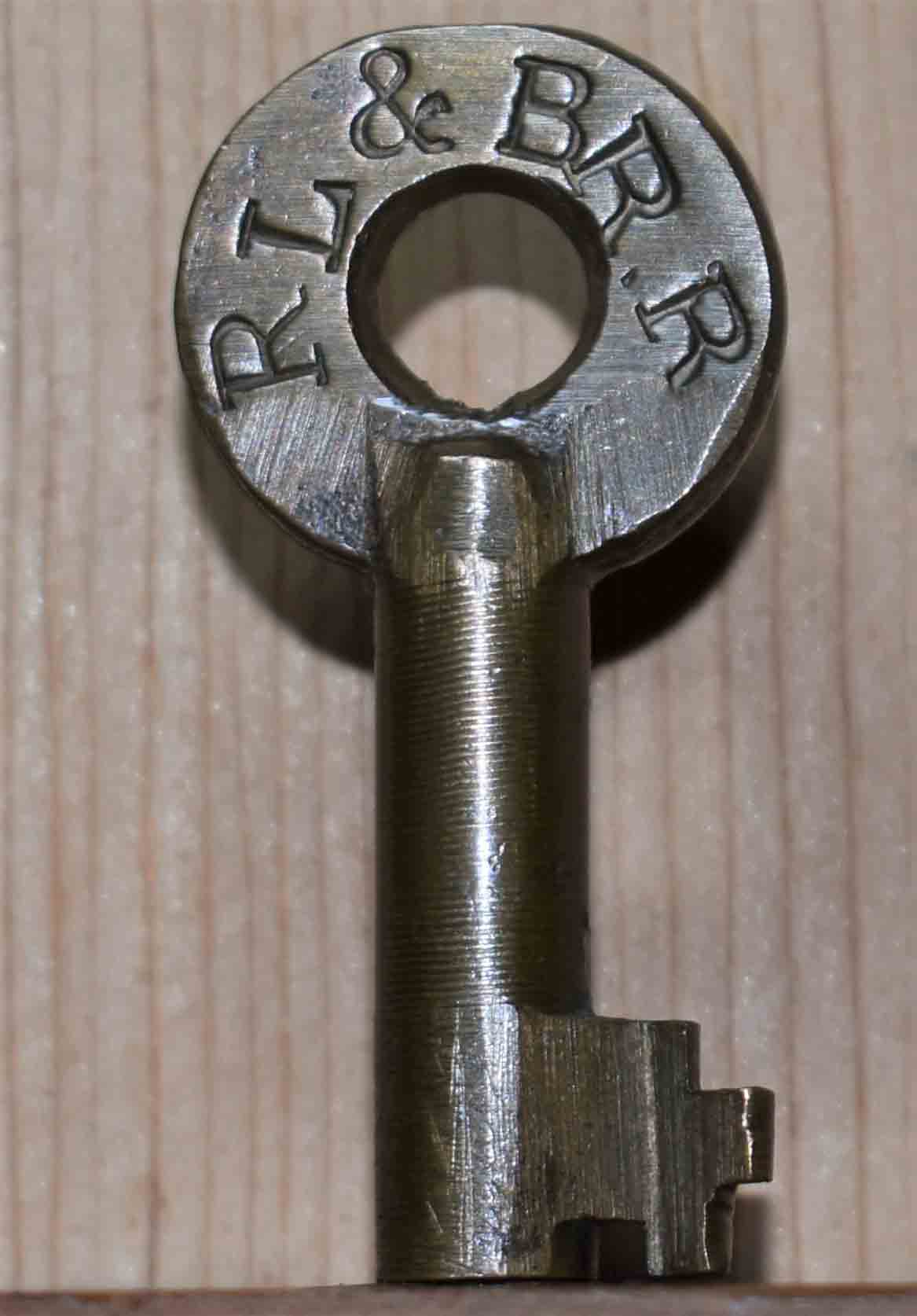
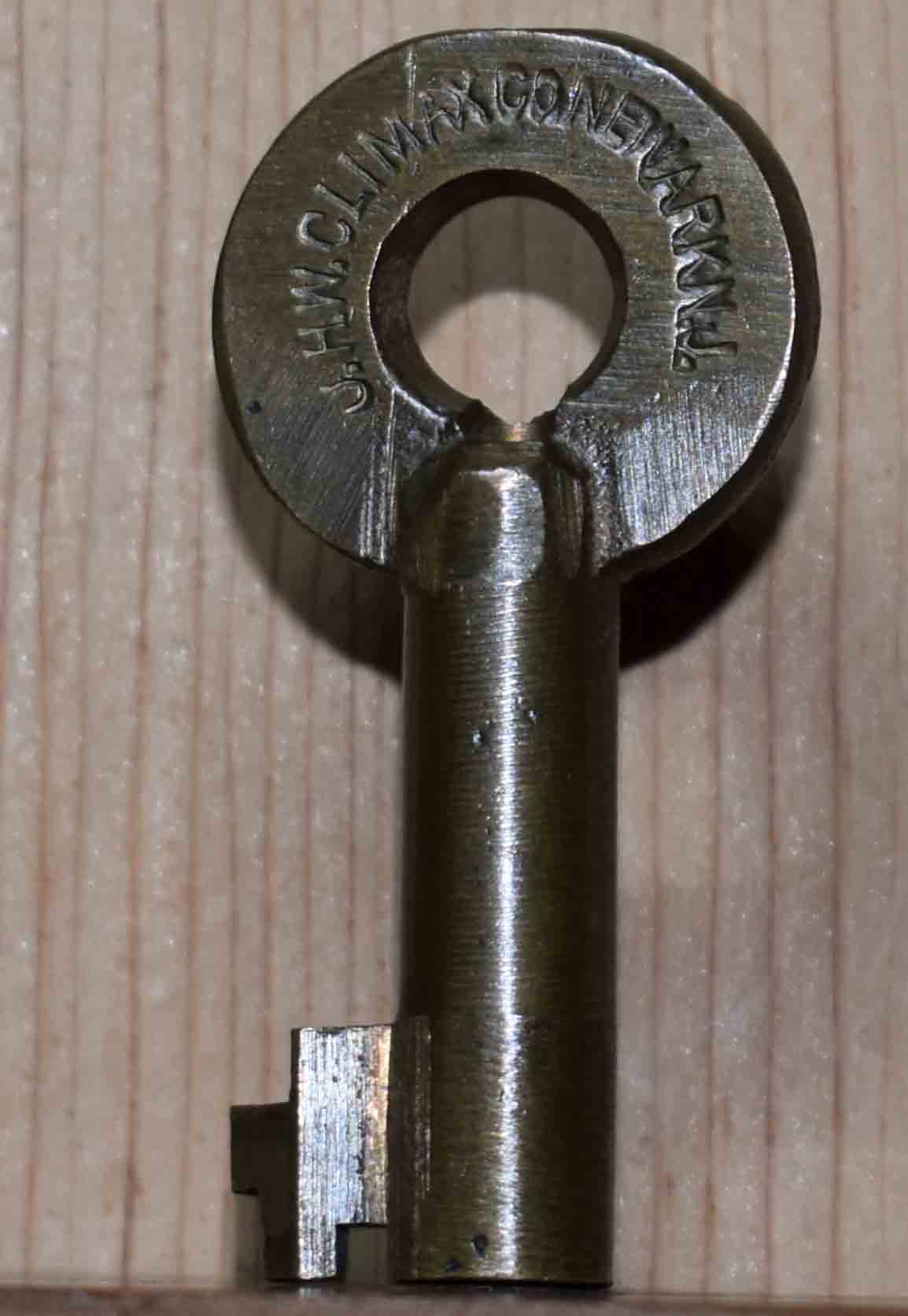

Rochester-Lockport & Buffalo Railroad
Item: 16-R NYC trolley line Price: $165.00 $150.00
Remarks: operated 1909-31
Forged by the J.W. Climax Co.
Superb stamp marks and patina.
80 year+ octogenarian!
History
The Rochester, Lockport and Buffalo Railroad was an electric interurban railway that was constructed between Rochester, New York, and Lockport, New York, connecting to the International Railway Co. at Lockport for service into Buffalo. Opened in 1909 as the Buffalo, Lockport and Rochester Railway, the route followed the Erie Canal and the New York Central Railroad's Falls Road branch for most of its length. For a brief period of time, the railway was part of the Beebe Syndicate of affiliated interurban railways stretching from Syracuse to Buffalo. Entering receivership in 1917, it was reorganized as the Rochester, Lockport and Buffalo Railroad in 1919. After years of struggling with declining revenue during the Depression years, the railway's last day of service was April 30, 1931.
Click on image to view larger picture

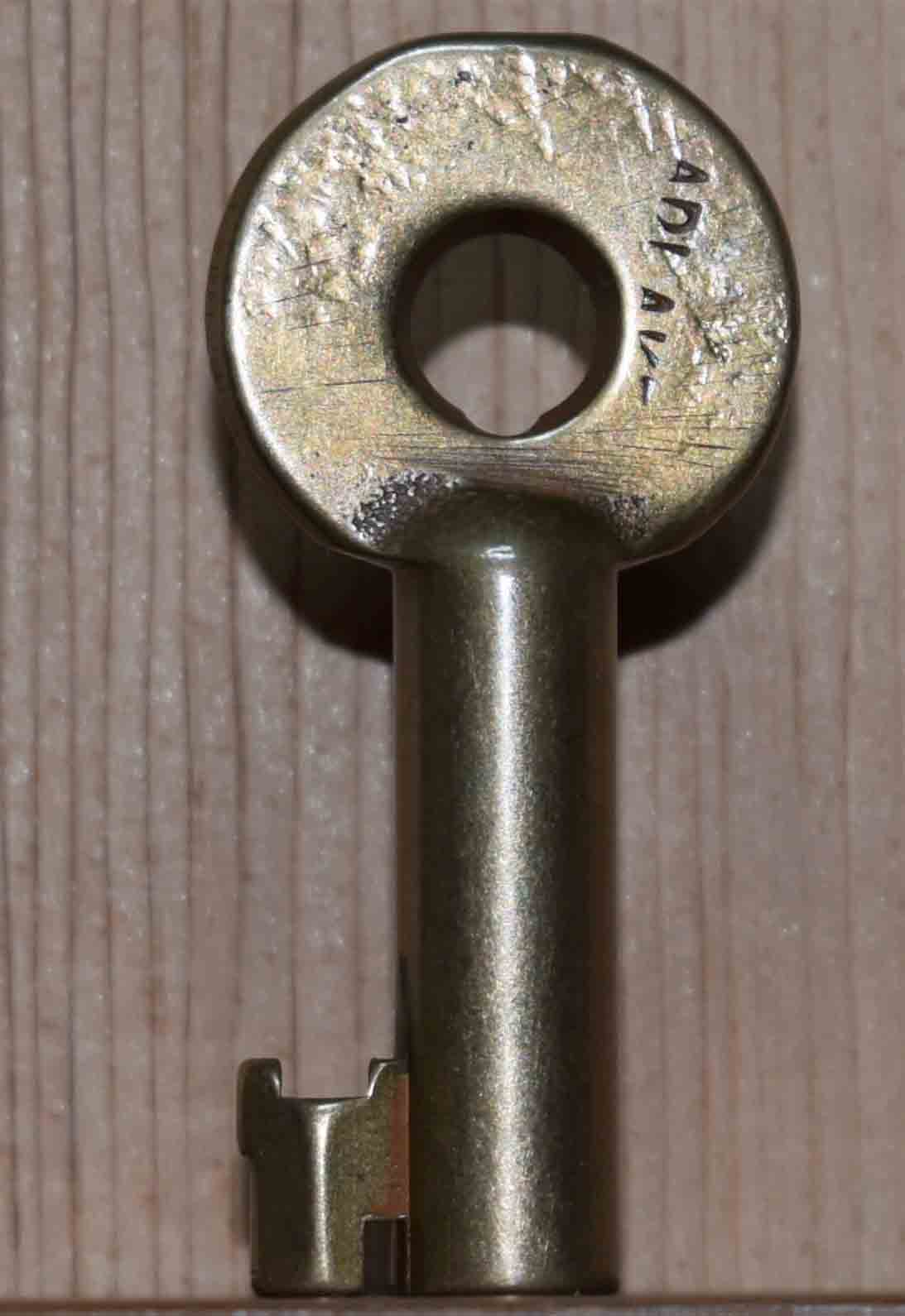



Rutland Railroad
Item: 20-R Price: $145.00 $130.00
Remarks: ca. early 1900s
Forged by the Adlake Co.
Superb stamp marks and gold patina.
80 year+ octogenarian!
History
The Rutland Railroad (reporting mark RUT) was a railroad in the northeastern United States, located primarily in the state of Vermont but extending into the state of New York at both its northernmost and southernmost ends. After its closure in 1963 parts of the railroad were taken over by the State of Vermont and are now operated by the Vermont Railway.
The earliest ancestor of the Rutland, the Rutland & Burlington Railroad, was chartered in 1843 by the state of Vermont to build between Rutland and Burlington. When the Vermont legislature created the state railroad commission in 1855 to oversee railway construction, maintenance, and operations, the first person appointed to the position was Charles Linsley, the Rutland and Burlington's counsel, and a member of its board of directors. A number of other railroads were formed in the region, and by 1867 the Rutland & Burlington Railroad had changed its name to simply the Rutland Railroad.
Click on image to view larger picture





Rutland Railroad
Item: 23-R Price: $145.00 $130.00
Remarks: ca. early 1900s
Forged by the Adlake Co.
Nice deep stamp marks and gold patina.
80 year+ octogenarian!
History - continued from above
After World War II the decline continued; many branches were closed down. In 1950 the company was reorganized as the Rutland Railway. The year 1953 brought three weeks of employee strike action, which killed off the remaining passenger service on the line.
In 1961 after further strikes the railroad apparently decided it was no longer viable and applied to the Interstate Commerce Commission for complete abandonment. This was approved, and the railroad closed down on May 20, 1963. The strike was brought on by the employees' unwillingness to accept changes that would have moved the center of operations from Rutland to Burlington, requiring them to relocate from Rutland to Burlington. A few years later the national unions agreed to nationwide job changes that allowed this type of change.
Click on image to view larger picture
S



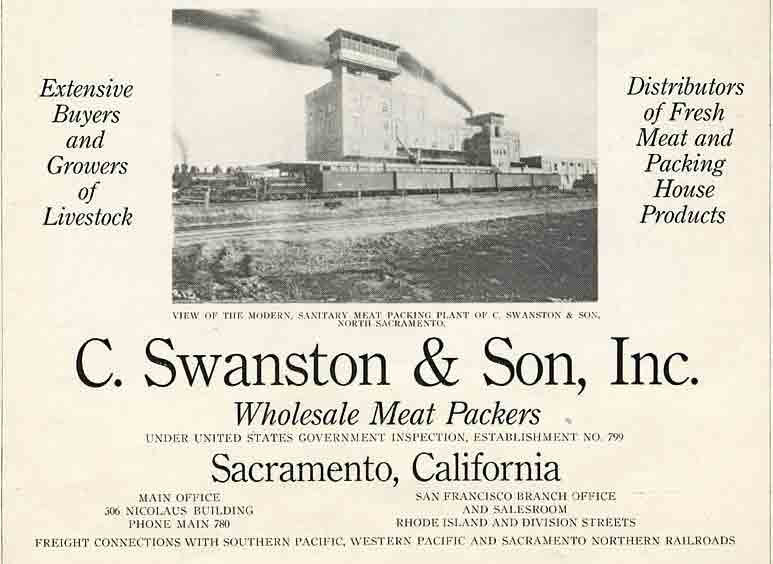
Sacramento Northern Stockyards
Item: 4-S Price: $275.00 $250.00
Remarks: ca. 1879-1917
Forged by the E.T. Fraim Co.
Superb stamp marks and gold patina.
Electric interurban trolley and freight line.
125 year+ centenarian and a very rare key!
History
In 1886 Mr. Charles Swanston, a visionary, established a large meat packing plant south of the city of Sacramento and along the river. Swanston traveled west from Ohio as part of the California Gold Rush and quickly realized he'd make more money as a butcher, according to Sacramento City Historian Marcia Eymann. From the opening, business was booming. With more and more settlers heading west, a new plant was built in 1915 to accommodate the growing population. The Swanston Meat Packing Plant boasted "Sacramento has the most modern and sanitary meat packing plant west of Chicago." To move his meat product, the plant had rail connections with the Southern Pacific Railroad, Western Pacific Railroad and the Sacramento Northern Railway. Lets not forget, from the stinky sloughs to the rancid reek of rendered creatures, Sacramento suffered the smells taken for granted in those primitive, pre-smog days.
Note: I can relate to that last sentence. As a child growing up in Chicago's "Back of the Yards," (the name given to the stockyards neighborhood), you never forget the putrid smell that lingered in the air 24/7. When I was 5 years old, we moved a couple miles south of the Yards. The air was a lot better, but on a windy day, you could still get a good whiff of the stank! You never forget the smell.
Click on image to view larger picture



San Diego Electric Railway
SOLD New Listing Price: $175.00
Remarks: ca. 1882-1949
Forged by the Adlake Co.
Very nice stamp marks and patina.
80 year+ octogenarian!
History
The San Diego Electric Railway (SDERy) was a mass transit system in San Diego County, California, United States. The system utilized 600 volt direct current streetcars and (in later years) buses.
The SDERy was established by sugar heir and land developer John D. Spreckels in 1892. The railroad's original network consisted of five routes: the Fifth Street and Logan Heights Lines, the First and "D" Streets Lines, the Depot Line, the Ferry Line, and the "K" Street Shuttle. The company would establish additional operating divisions as traffic demands led to the formation of new lines. The company also engaged in limited freight handling primarily as an interchange with Spreckels' San Diego and Arizona Railway (SD&A) from 1923 to 1929.
At its peak, the SDERy's routes would operate throughout the greater San Diego area over some 165 miles (266 km) of track. Declining ridership, due in large part to the growing usage of the automobile, ultimately led the company to discontinue all streetcar service in favor of bus routes in 1949.
Click on image to view larger picture


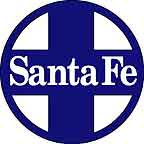
Santa Fe Railroad
Item: 14-S Price: $275.00
Remarks: ca. 1800s
Forged by the Adams & Westlake Co.
Superb deep stamp marks!
Different style bit than SF key below.
125 year + centenarian!
Note
This is the only Santa Fe key I've come across that has "Adams and Westlake" completely spelled out and not abbreviated. The key has a larger than usual foundry stamp that reads, "Adams & Westlake-Chicago, Philadelphia, USA." The Philadelphia, USA stamp mark is omitted on later 1800 circa keys.There is little doubt in my mind, this key is one of the very earliest keys made in the Adams and Westlake foundry for the Santa Fe Railroad.
History
The Atchison, Topeka and Santa Fe Railway (reporting mark ATSF), often referred to as the Santa Fe or AT&SF, was one of the larger railroads in the United States. The railroad was chartered in February, 1859 to serve the cities of Atchison and Topeka, Kansas, and Santa Fe, New Mexico. The railroad reached the Kansas-Colorado border in 1873 and Pueblo, Colorado in 1876. To create a demand for its services, the railroad set-up real estate offices and sold farmland from the land grants that it was awarded by Congress.
Click on image to view larger picture
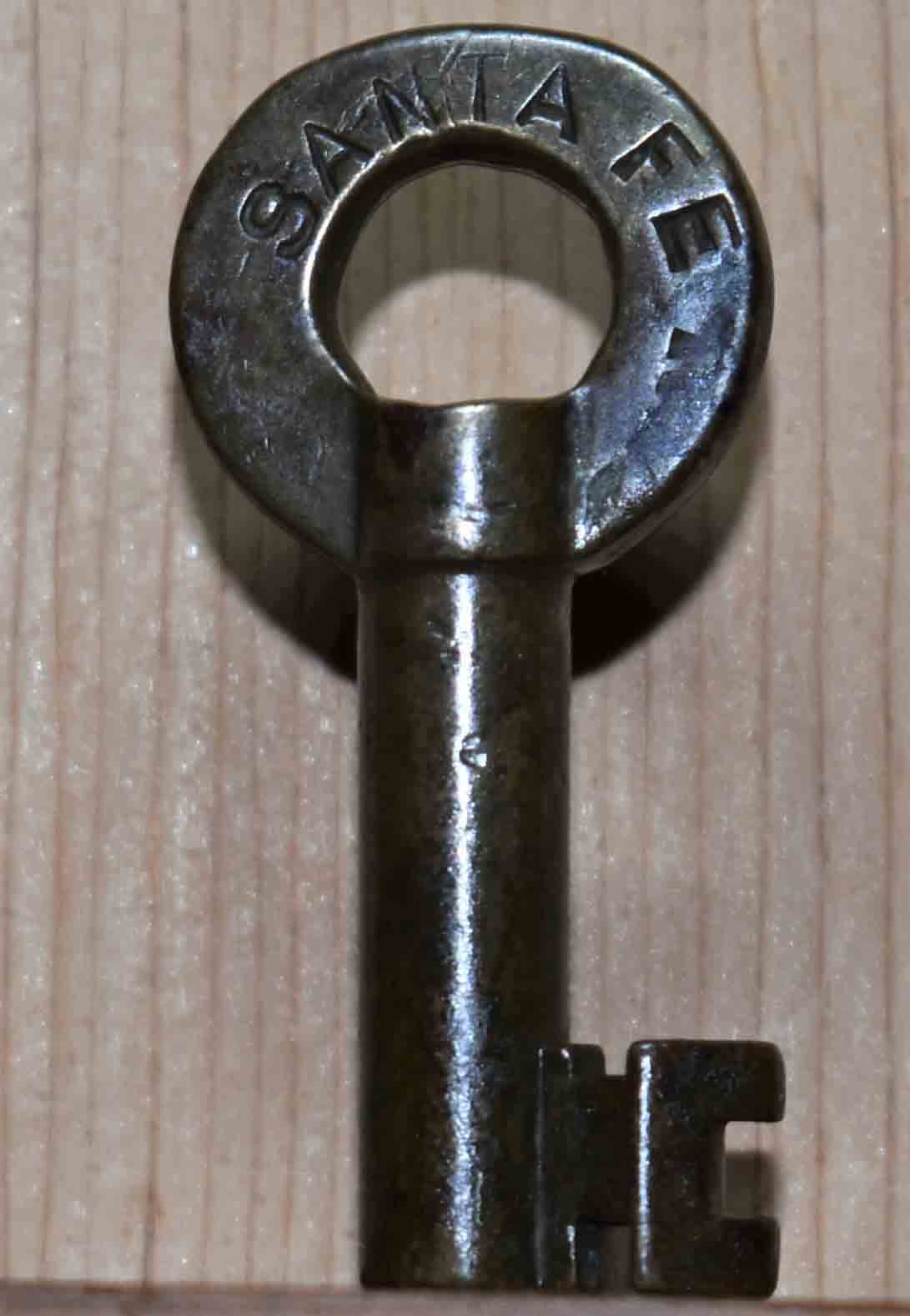
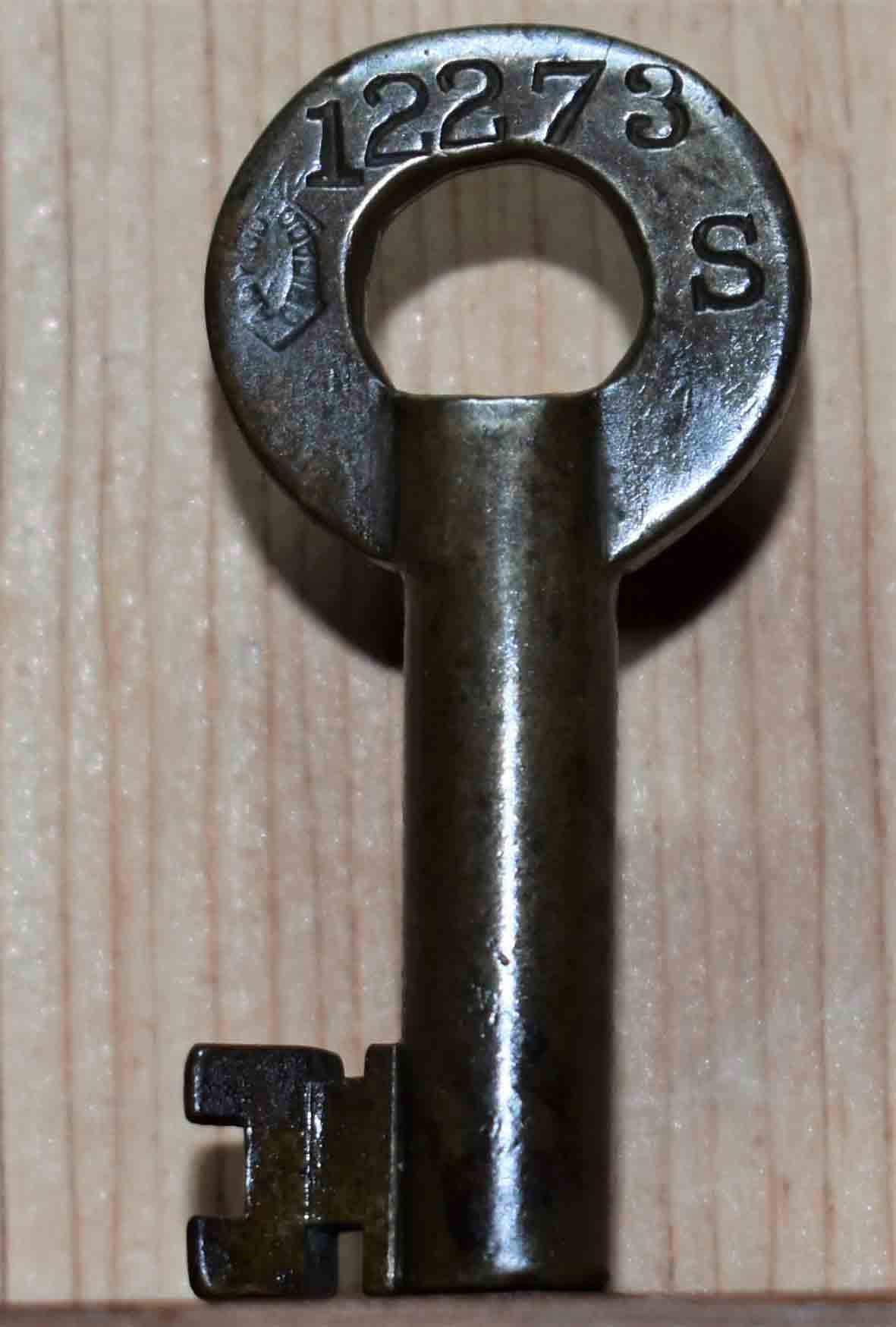

Santa Fe Railroad
Item: 15-S Price: $100.00
Remarks: ca. late 1800s
Forged by the Adams & Westlake Co.
Early A&W hex stamp = 1st series.
Nice stamp marks and dark patina.
125 year+ centenarian!
History - continued from above
Despite being chartered to serve the city, the railroad chose to bypass Santa Fe, due to the engineering challenges of the mountainous terrain. Eventually a branch line from Lamy, New Mexico brought the Santa Fe railroad to its namesake city.
Click on image to view larger picture



Santa Fe Railroad
Item: 16-S New Listing Price: $100.00
Remarks: ca. early 1900s
Forged by the Adams & Westlake Co.
Superb stamp marks and caramel patina.
100 year+ centenarian!
History - continued from above
AT&SF was widely known for its passenger train service in the first half of the 20th century. AT&SF introduced many innovations in passenger rail travel, among these the "Pleasure Domes" of the Super Chief (billed as the "...only dome car[s] between Chicago and Los Angeles" when they were introduced in 1951) and the "Big Dome" Lounge cars and double-decker Hi-Level cars of the El Capitan, which entered revenue service in 1954.
Click on image to view larger picture



Santa Fe Route
Item: 18-S New Listing Price: $150.00
Remarks: ca. late 1800s
Forged by the Adams & Westlake Co
Early A&W hex stamp = 1st series.
Superb stamp marks and gold patina.
125 year+ centenarian!
History - continued from above
The Santa Fe was a pioneer in intermodal freight service, an enterprise that (at one time or another) included a tugboat fleet and an airline (the short-lived Santa Fe Skyway). Its bus line extended passenger transportation to areas not accessible by rail, and ferryboats on the San Francisco Bay allowed travelers to complete their westward journeys to the Pacific Ocean.
Click on image to view larger picture
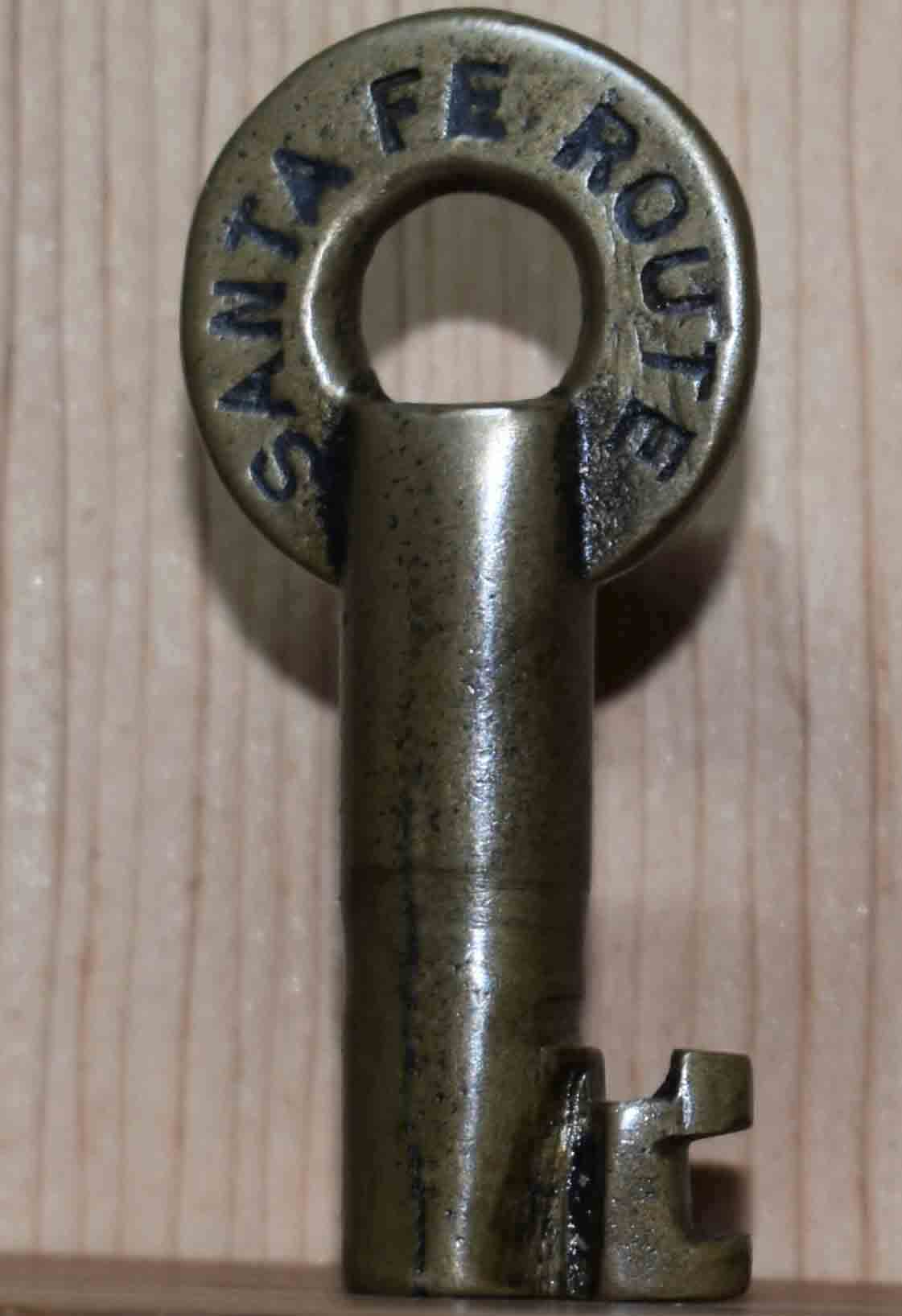
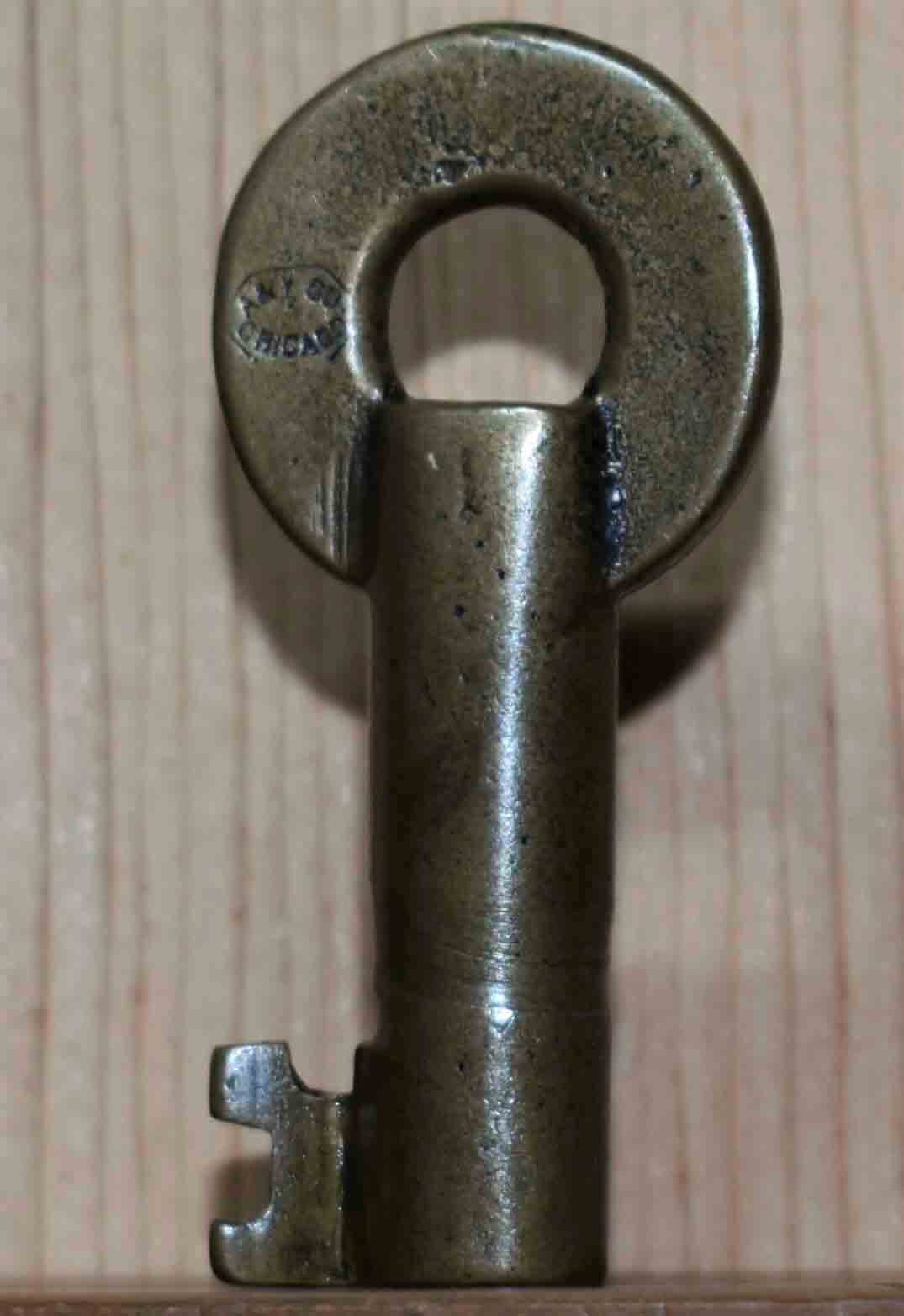

Santa Fe Route
Item: 19-S Price: $165.00
Remarks: ca. late 1800s
Forged by the Adams & Westlake Co
Early A&W hex stamp = 1st series.
Great stamp marks and two-tone gold patina.
125 year+ centenarian!
History - continued from above
The Santa Fe was the only railroad to run trains from Chicago to California on its own tracks. The railway's extensive network was also home to a number of regional services. These generally couldn't boast of the size or panache of the transcontinental trains, but built up enviable reputations of their own nonetheless. Of these, the Chicago-Texas trains were the most famous and impressive.
Click on image to view larger picture



Santa Fe Route
Item: 20-S Price: $165.00
Remarks: ca. late 1800s
Forged by the Adams & Westlake Co
Early A&W hex stamp = 1st series.
Very nice pocket-worn stamp marks and gold patina.
125 year+ centenarian!
Click on image to view larger picture
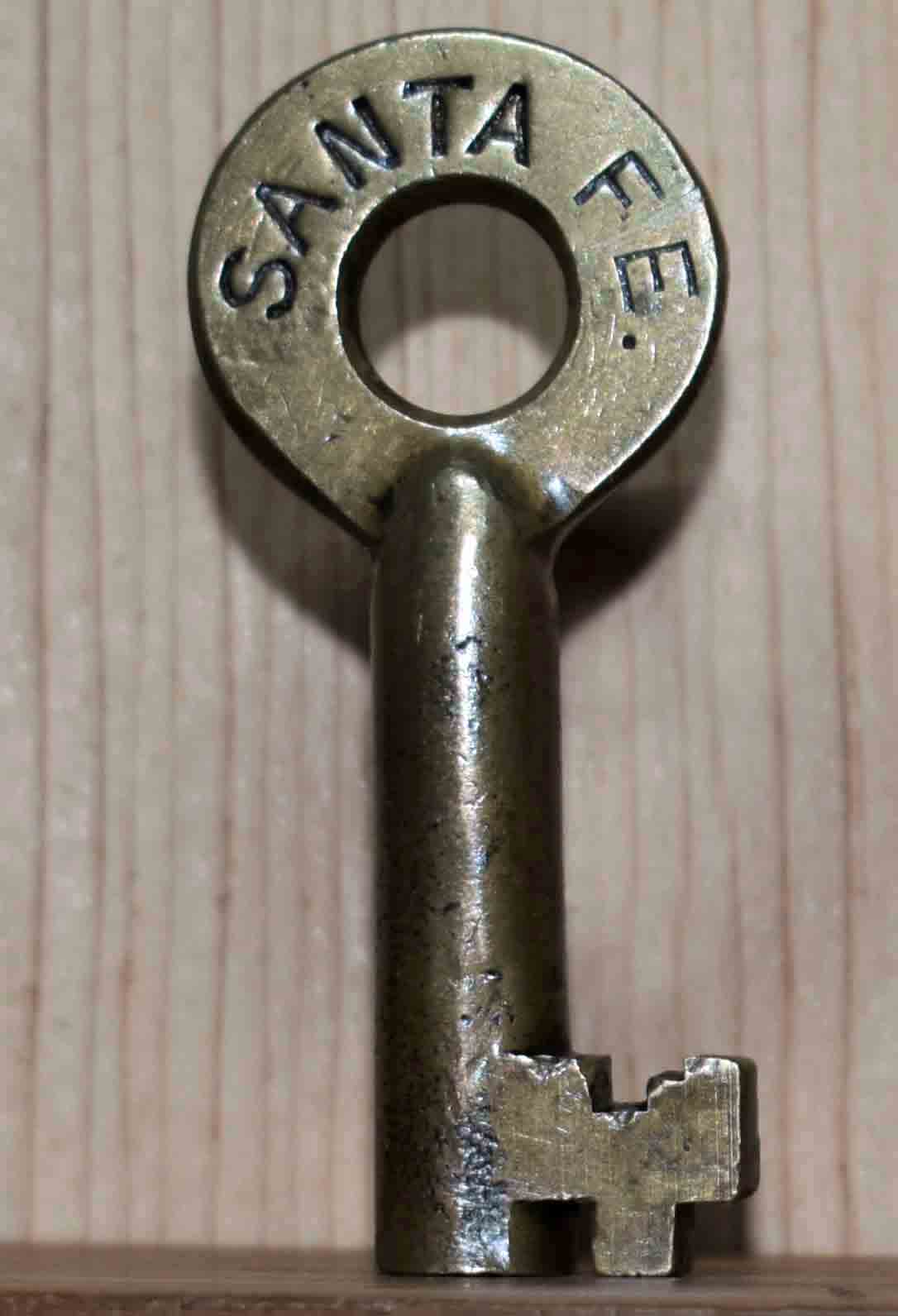
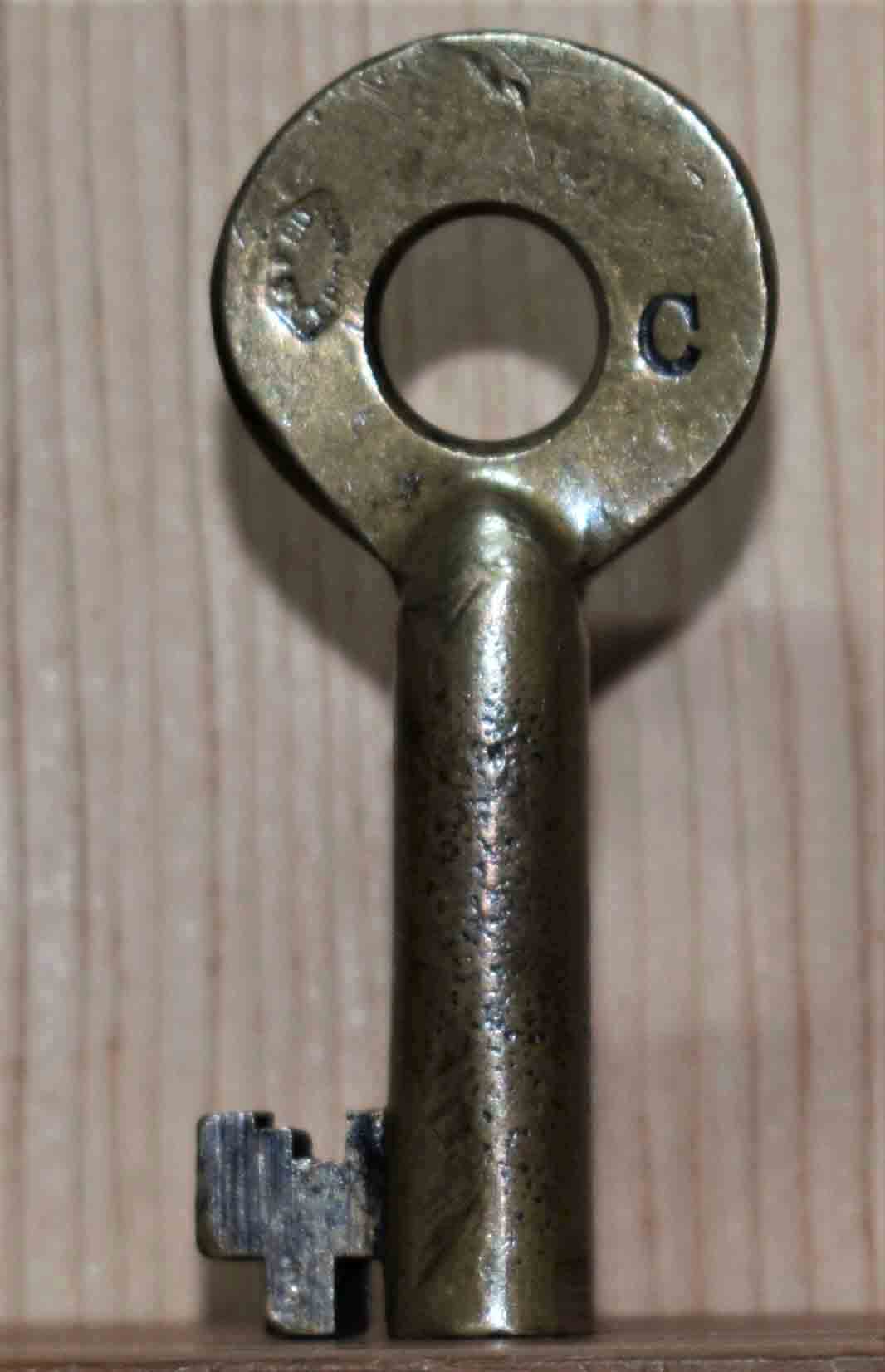
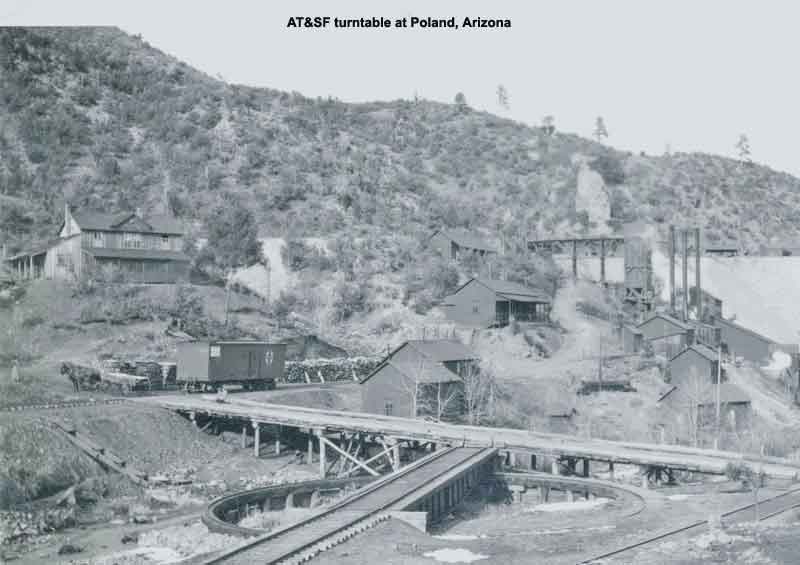

Santa Fe Railroad
Item: 24-S New car key Listing Price: $175.00
Remarks: ca. early 1900s
Forged by the Adams & Westlake Co.
Superb stamp marks and dark patina.
100 year+ centenarian!
Click on image to view larger picture
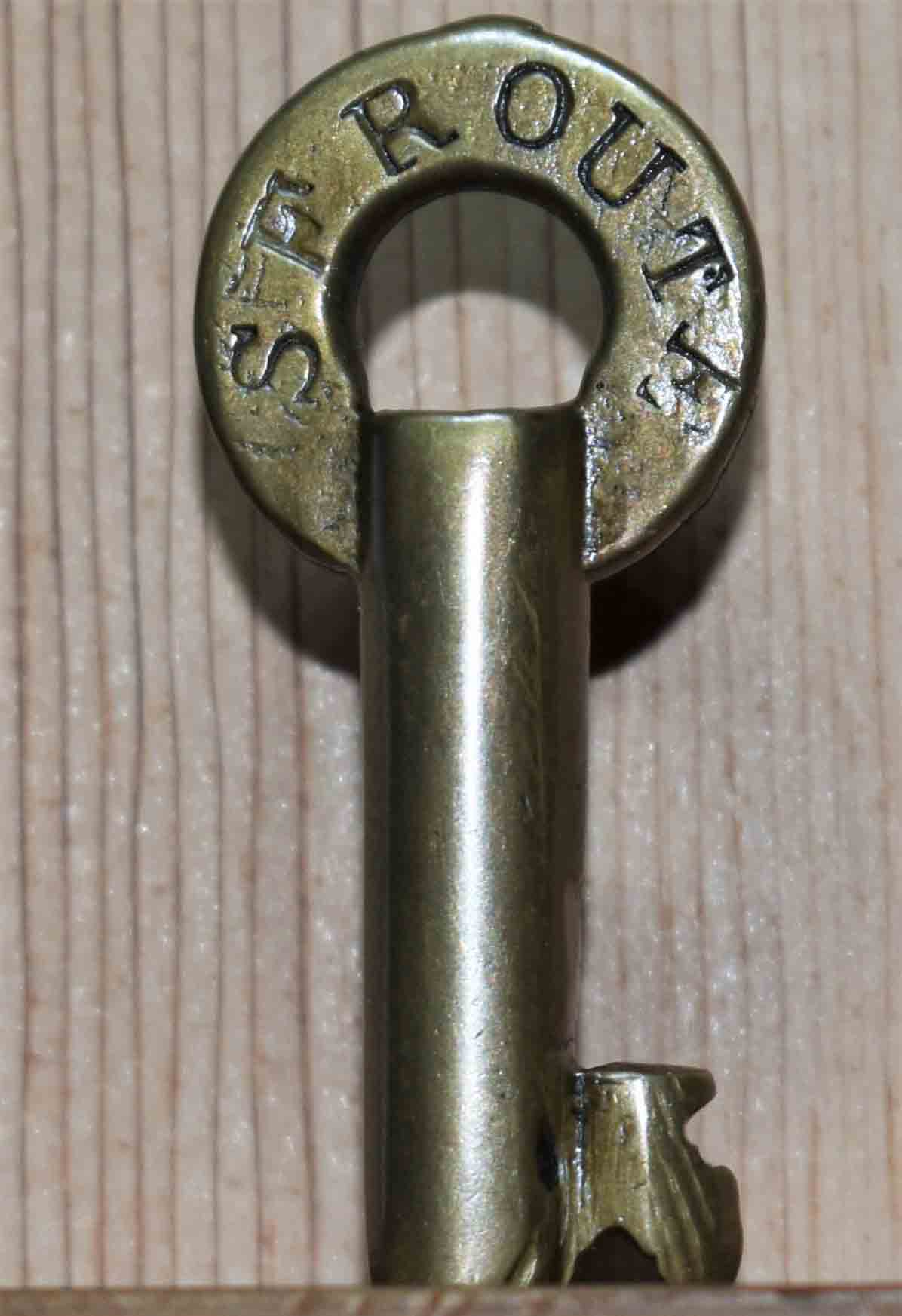

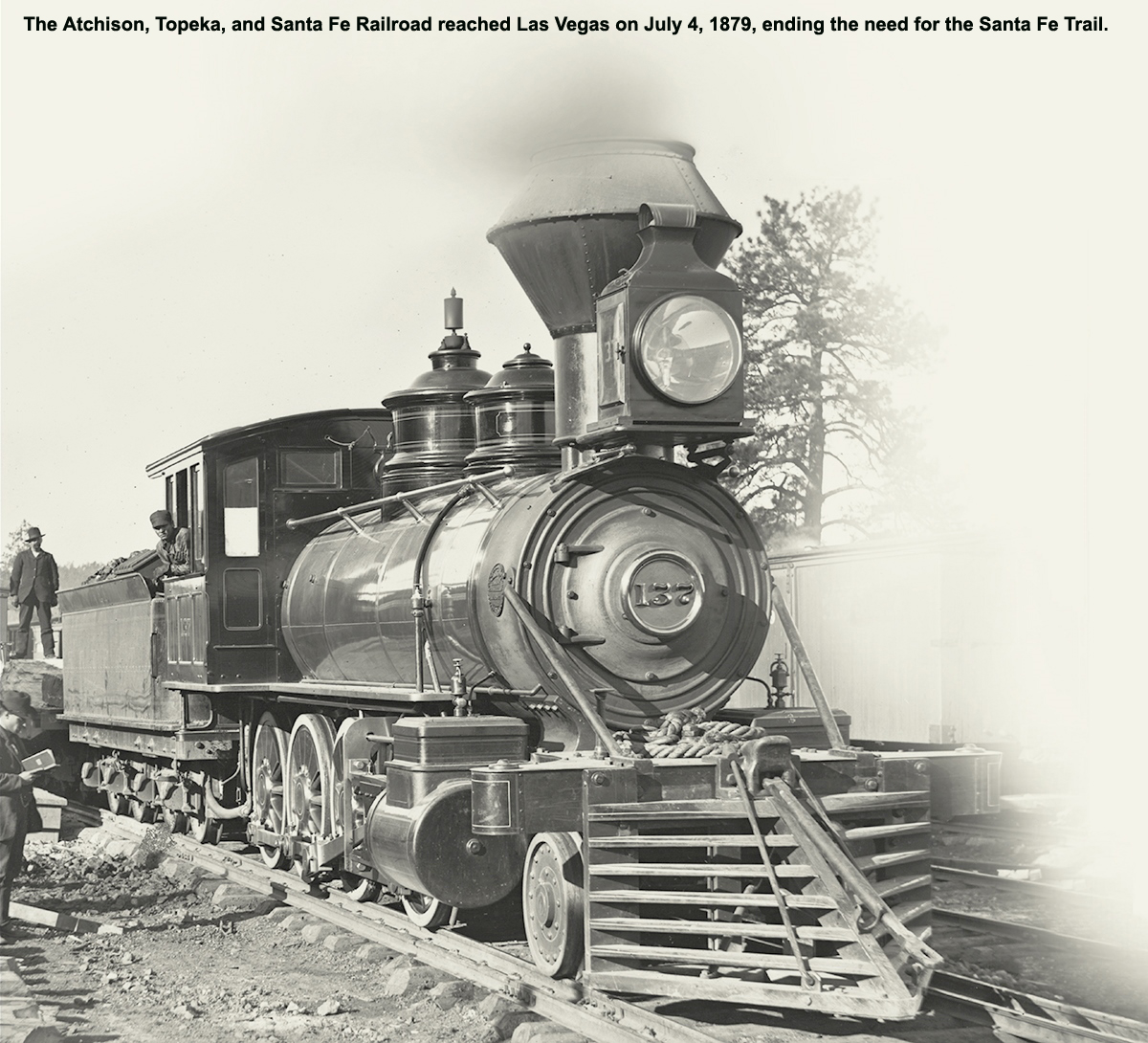
Santa Fe Route
Item: 26-S tool house key Price: $150.00
Remarks: ca. 1800s
Likely forged by the A&W Co.
Nice stamp marks and gold patina
Key bit may look different than TH key
below but is the same style cut.
Rare 125 year+ centenarian!
Click on image to view larger picture



Santa Fe Railroad
Item: 27-S New tool house key Listing Price: $175.00
Remarks: ca. early 1900s
Forged by the Adams & Westlake Co.
Superb stamp marks and caramel patina.
Same style bit as TH key above.
100 year+ centenarian!
Click on image to view larger picture



Santa Fe Railroad
Item: 29-S stockyard key Price: $275.00
Remarks: ca. early 1900s
Forged by the Adams & Westlake Co.
Very nice stamp marks and gold patina.
A very rare 100 year+ centenarian!
History of the Santa Fe Stockyards
Click on image to view larger picture

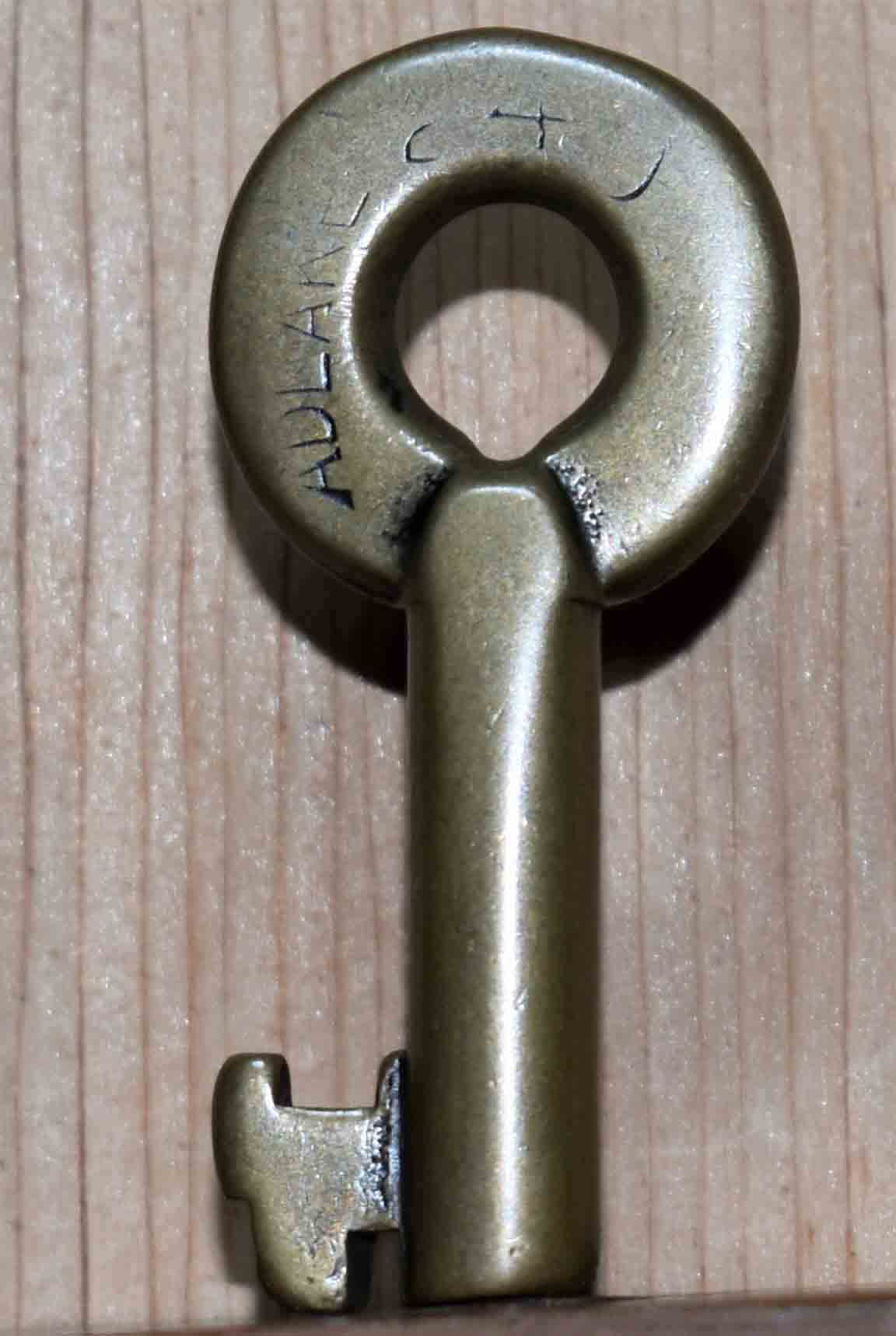

Savannah & Atlantic Railway
Item: 32-S Price: $125.00 $110.00
Remarks: ca. early 1900s
Forged by the Adlake Co.
Ex-fine pocket wear and great gold patina.
Key listed in the
"American Railway's Switch Key Directory."
History
Popularly referred to as the “Tybee Branch” or “Tybee Railroad,” the Savannah and Atlantic Railroad was built in 1887, extending from Savannah to the main part of Tybee Island, a distance of 17.7 miles.
On July 16, 1917, the Savannah and Atlanta bought the Savannah and Northwestern, and thereafter the entire line of 141 miles became the Savannah and Atlanta. In 1921, the line was thrown into receivership, and in 1929 was bought by Robert M. Nelson. Mr. Nelson sold it to the Central in 1951 for $3,500,000.
Click on image to view larger picture
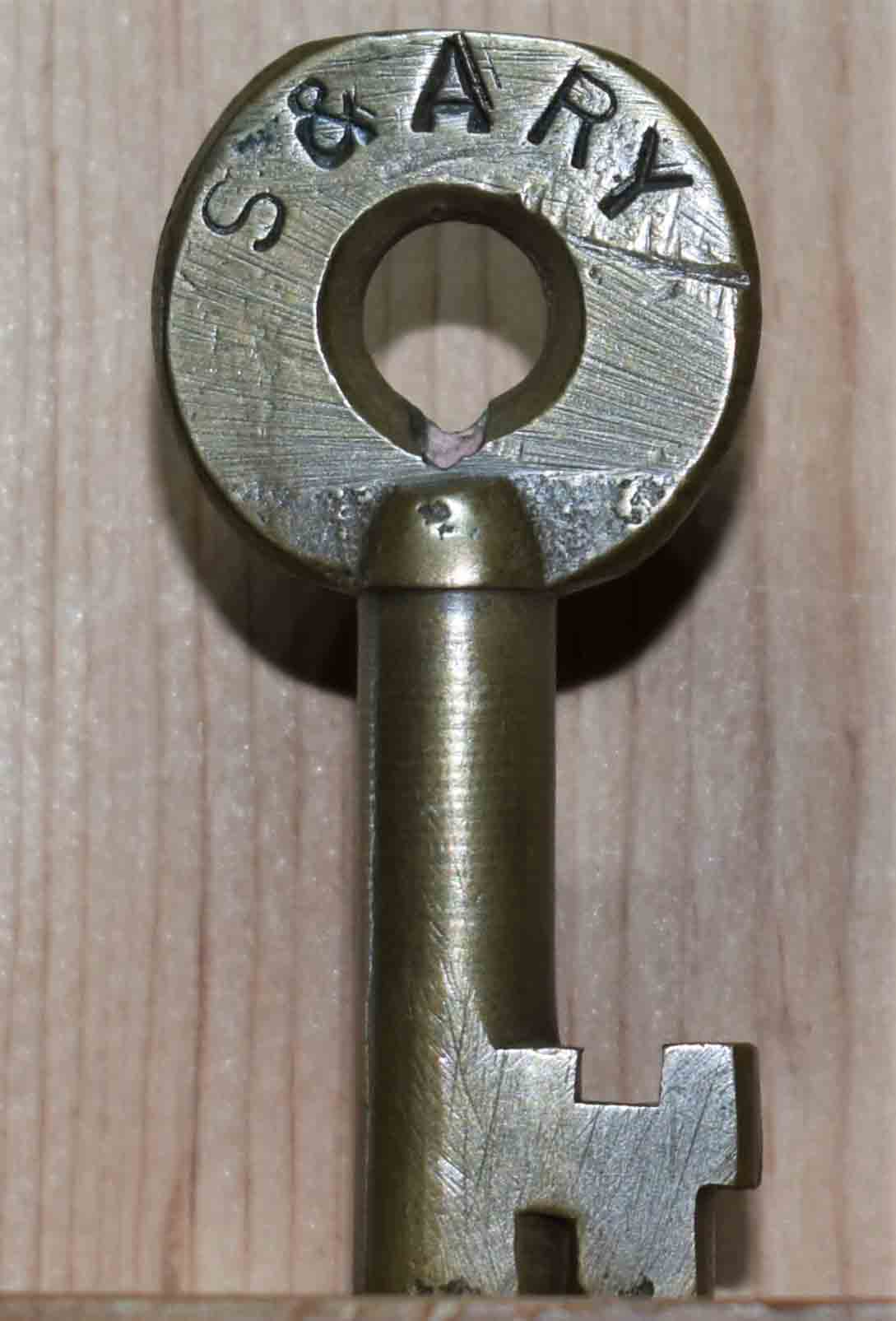



Savannah & Atlantic Railway
Item: 33-S Price: $175.00 $160.00
Remarks: ca. early 1900s
Forged by the Adlake Co.
Keys rarely circulate!
Click on image to view larger picture



Seaboard Airline Railway
Item: 36-S Price: $115.00
Remarks: ca. early/mid-1900s
Most likely Fraim forged.
Excellent stamp marks and caramel patina.
80 year+ octogenarian!
History
The Seaboard Air Line Railroad (SAL), which styled itself "The Route of Courteous Service," was an American railroad whose corporate existence extended from April 14, 1900 until July 1, 1967, when it merged with the Atlantic Coast Line Railroad, its longtime rival, to form the Seaboard Coast Line Railroad. The company was headquartered in Norfolk, Virginia, until 1958, when its main offices were relocated to Richmond, Virginia. The Seaboard Air Line Railway Building in Norfolk's historic Freemason District still stands and has been converted to luxury apartments.
Click on image to view larger picture



Seaboard Airline Railway
Item: 37-S Price: $145.00
Remarks: ca. late 1800s
Forged by the Adams & Westlake Co.
Early A&W hex stamp = 1st series.
Great looking stamp marks and two-tone patina.
125 year+ centenarian!
History - continued from above
In the days before air travel, air line was a common term for the shortest distance between two points: a straight line drawn through the air (or on a map), ignoring natural obstacles (i.e. "as the crow flies"). Hence, a number of 19th century railroads used air line in their titles to suggest that their routes were shorter than those of competing roads. The Seaboard never owned an airplane. In 1940 the railroad proposed the creation of "Seaboard Airlines" but this idea was struck down by the Interstate Commerce Commission as violating federal anti-trust legislation.
Click on image to view larger picture
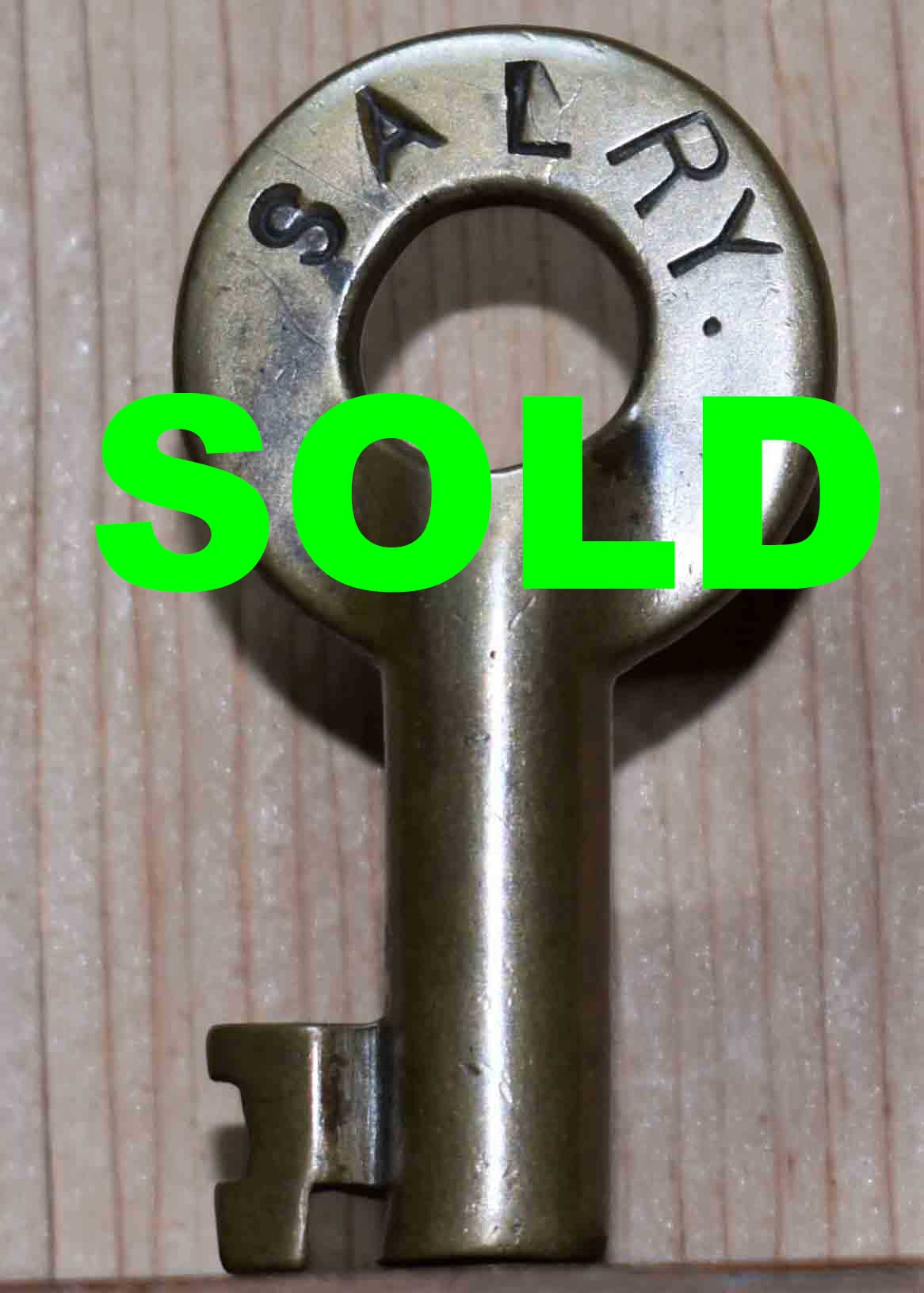
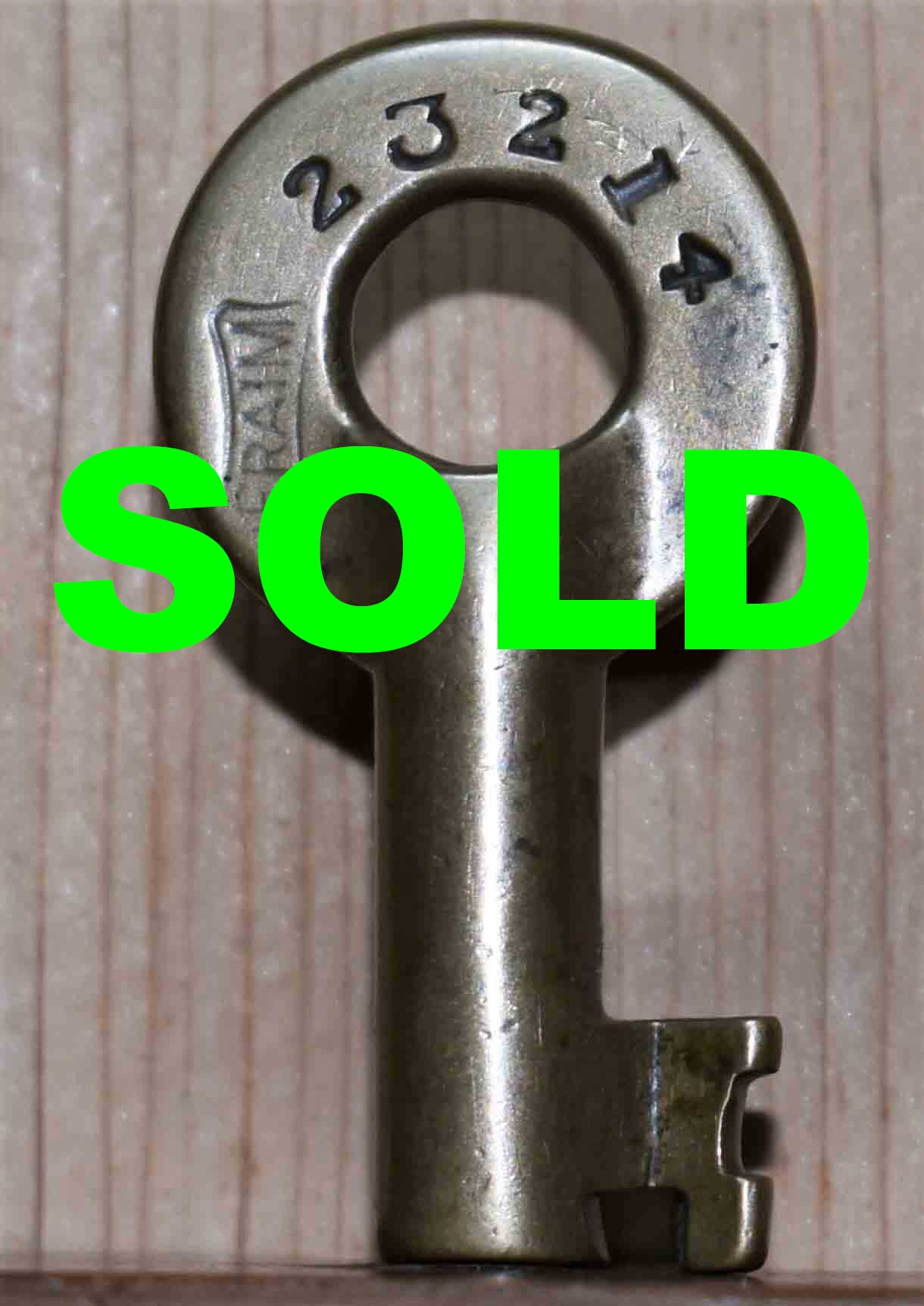
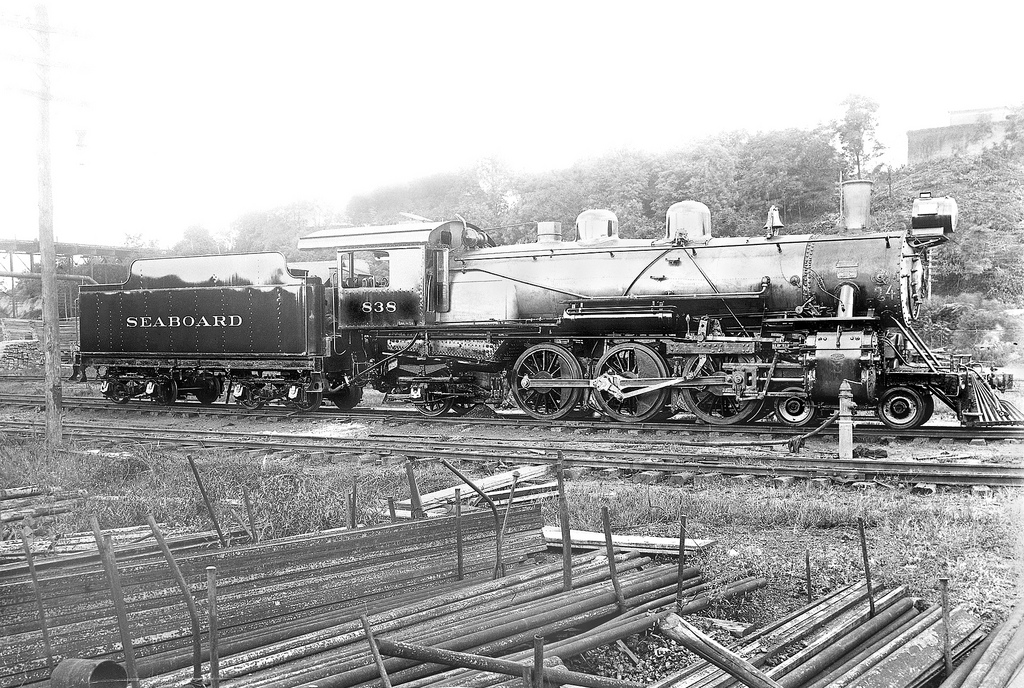
Seaboard Airline Railway
Item: 38-S Price: $125.00
Remarks: ca. post 1930
Forged by the E.T. Fraim Co.
Great looking stamp marks and gold patina.
80 year+ octogenarian!
Click on image to view larger picture


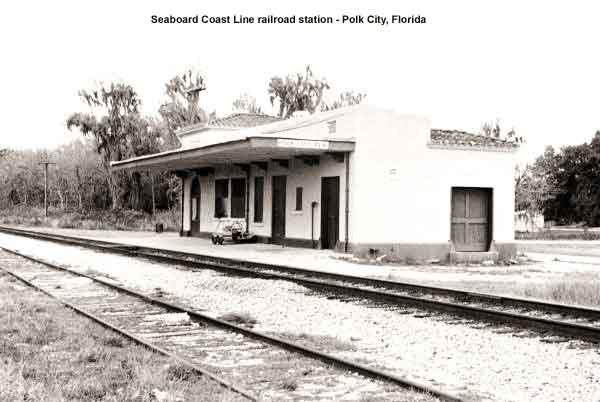
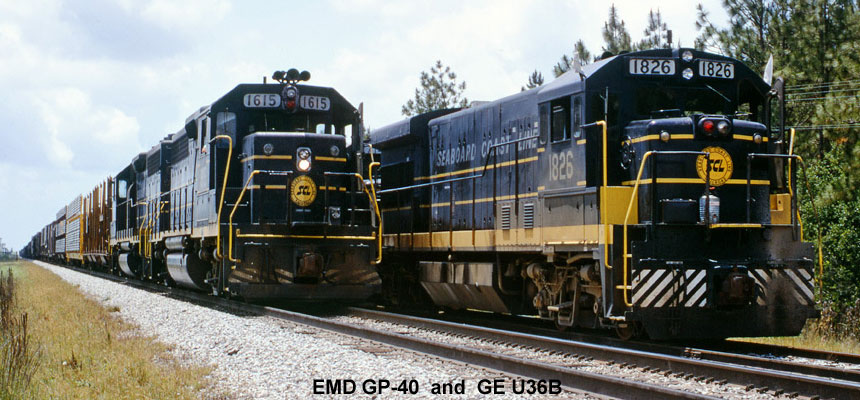
Seaboard Airline Railway
Item: 39-S Price: $150.00
Remarks: ca. post 1930
Forged by the E.T. Fraim Co.
Great looking stamp marks and caramel patina.
80 year+ octogenarian!
Click on image to view larger picture




Seaboard Airline Railroad
Item: 40-S New Listing Price: $95.00
Remarks: ca. early 1900s
Likely Slaymaker forged.
Superb stamp marks and gold patina.
80 year+ octogenarian!
Click on image to view larger picture



Seaboard Coastline Railroad
Item: 42-S Price: $145.00
Remarks: ca. mid-1900s
Forged by the Adlake Co.
80 year+ octogenarian!
Post merger key, SCL stamp with a ACL cut.
Click on image to view larger picture



Spokane International Railway
Item: 44-S Price: $125.00
Remarks: ca. mid-1900s
Forged by the Adlake Co.
Superb stamp marks and gold patina
Lucky find!
History
The Spokane International Railroad (reporting mark SI) was a short line railroad between Spokane, Washington, and the Canadian Pacific Railway (CP) at Kingsgate, British Columbia. The line became an important one for the CP with its connections to the Union Pacific Railroad and Portland, Oregon.
The line, originally named the Spokane International Railway, was built by local businessman and railroader Daniel Chase Corbin following an agreement between him and the CP, with CP agreeing to fund much of the line's construction and to secure the loan by holding the new line's bonds.
On October 6, 1958, the Union Pacific Railroad (UP) took control of Spokane International Railroad. In 1962 UP leased SI's 11 ALCO RS-1 locomotives for operation. The locomotives were later repainted to UP's yellow and gray paint scheme, but retained their SI lettering.
Click on image to view larger picture


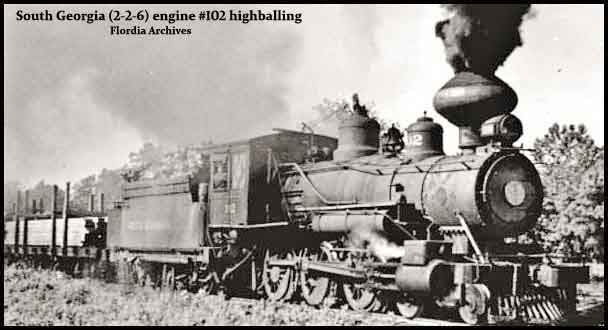
South Georgia Railway
Item: 46-S Price: $85.00
Remarks: SG chartered in 1897
Superb stamp marks and gold patina. In 1971 the
SG merged with the Live Oak-Perry & Gulf R.R.
History
Incorporated in 1896, the South Georgia Railroad opened its 28-mile railroad between Heartpine and Quitman in March of 1897. A 23-mile extension from Quitman to Greenville, Florida, opened in October of 1901.
In 1971 the South Georgia merged with the Live Oak-Perry & Gulf Railroad to form the Live Oak-Perry & South Georgia Railway, running from Adel to Perry. It was owned and operated by Southern Railway.
Click on image to view larger picture



South Buffalo Railway
Item: 48-S Price: $115.00
Remarks: ca. early 1900s
Most likely Fraim forged.
Superb serif stamp marks and gold patina.
History
The South Buffalo Railway operates more than fifty miles of railway lines along the southeast shore of Lake Erie. South Buffalo connects to CSX, Norfolk Southern, Canadian Pacific, and Canadian National Railway.
Click on image to view larger picture


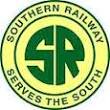
Southern Railroad
Item: 51-S eastern section key Price: $125.00
Remarks: ca. 1879-1917
Forged by the E.T. Fraim Co.
Nice serif stamp marks and two-tone patina.
125 year+ centenarian!
History
The Southern Railway (also known as Southern Railway Company; reporting mark SOU) was a class 1 railroad based in the Southern United States between 1894 and 1982, at which time it merged with the Norfolk and Western Railway (N&W) to form the Norfolk Southern Railway. The railroad was the product of nearly 150 predecessor lines that were combined, reorganized and recombined beginning in the 1830s, formally becoming the Southern Railway in 1894.
Southern Railway came into existence in 1894 through the combination of the Memphis and Charleston Railroad, the Richmond and Danville system and the East Tennessee, Virginia and Georgia Railroad.
Click on image to view larger picture



Southern Railroad
Item: 52-S eastern section key Price: $110.00
Remarks: ca. 1879-1917
Forged by the E.T. Fraim Co.
Nice pocket-worn stamp marks and bright
gold patina. 125 year+ centenarian!
History - continued from above
The company owned two-thirds of the 4,400 miles of line it operated, and the rest was held through leases, operating agreements and stock ownership. Southern also controlled the Alabama Great Southern and the Georgia Southern and Florida, which operated separately, and it had an interest in the Central of Georgia. Additionally, the Southern Railway also agreed to lease the North Carolina Railroad Company, providing a critical connection from Virginia to the rest of the southeast via the Carolinas.
Click on image to view larger picture



Southern Railroad
Item: 53-S eastern section key Price: $125.00
Remarks: ca. 1879-1917
Forged by the E.T. Fraim Co.
Superb stamp marks and patina.
125 year+ centenarian!
History - continued from above
Southern's first president, Samuel Spencer, brought more lines into Southern's organized system. During his 12-year term, the railway built new shops at Spencer, North Carolina, Knoxville, Tennessee, and Atlanta, Georgia, upgraded tracks, and purchased more equipment. He moved the company's service away from an agricultural dependence on tobacco and cotton and centered its efforts on diversifying traffic and industrial development. Ironically, on November 29, 1906, Spencer was killed in a train wreck.
Click on image to view larger picture
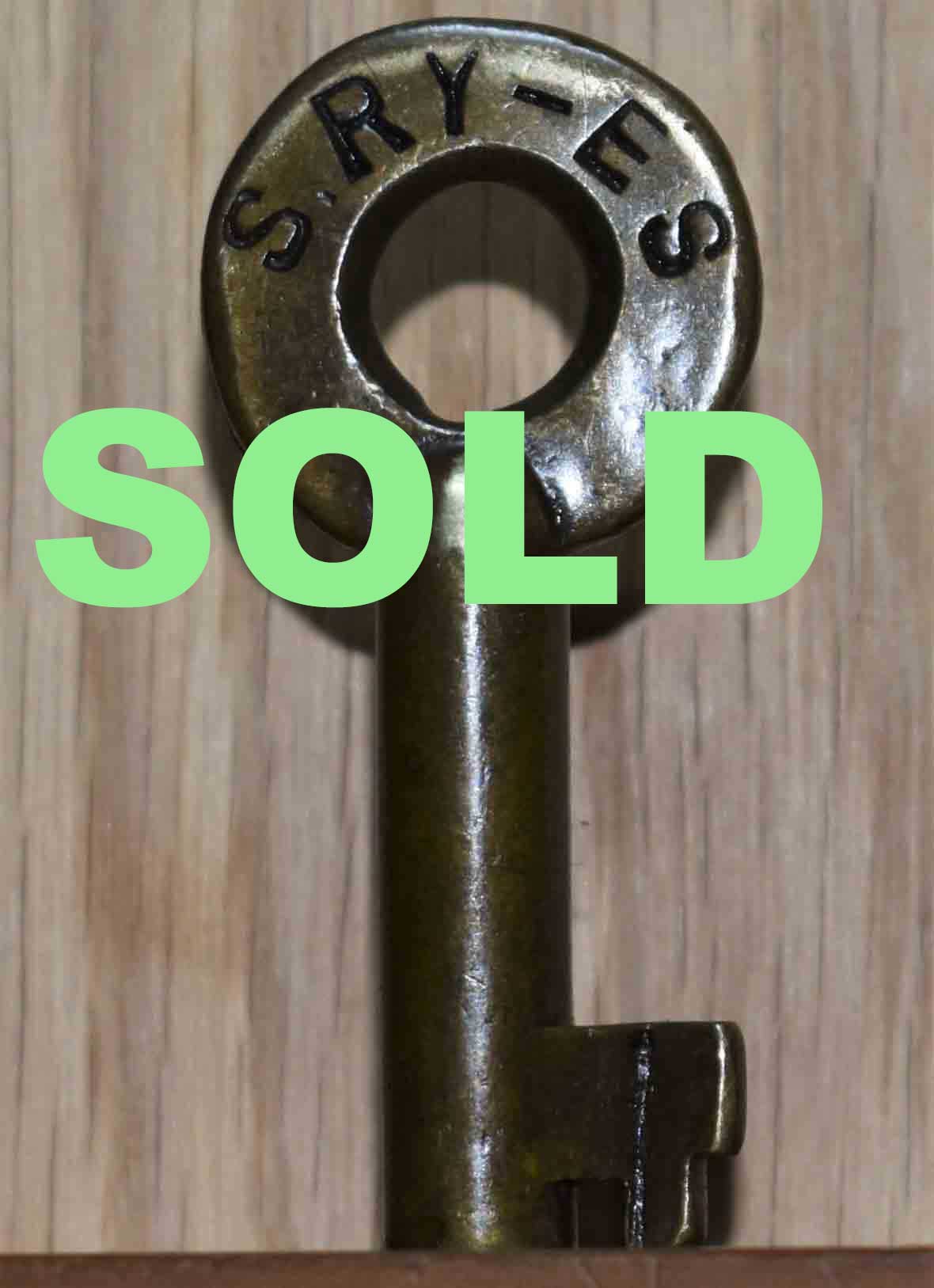

 < --- before & after --- >
< --- before & after --- >
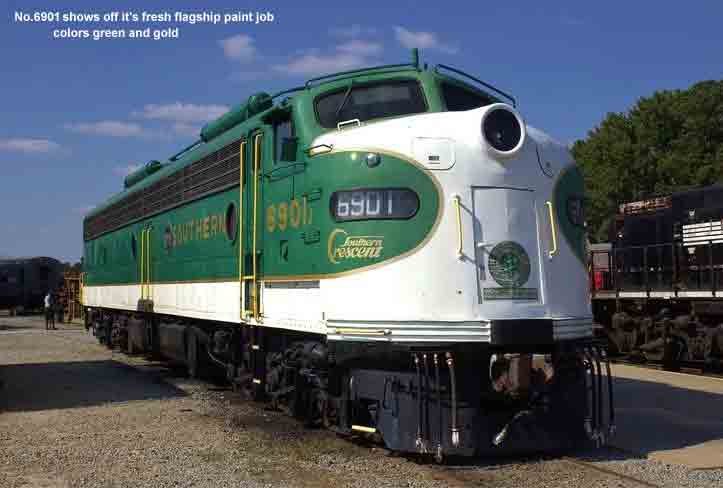
Southern Railway
Item: 54-S eastern section key Price: $95.00
Remarks: ca. early 1900s
Nice deep stamp marks and two-tone patina.
History - continued from above
Southern and its predecessors were responsible for many firsts in the industry. Starting in 1833, its predecessor, the South Carolina Canal and Rail Road, was the first to carry passengers, U.S. troops and mail on steam-powered trains and experimented with railroad lighting. They had a pine log fire on a flatcar, covered in sand, to provide light at night before inexpensive kerosene was invented for lamps.
Click on image to view larger picture
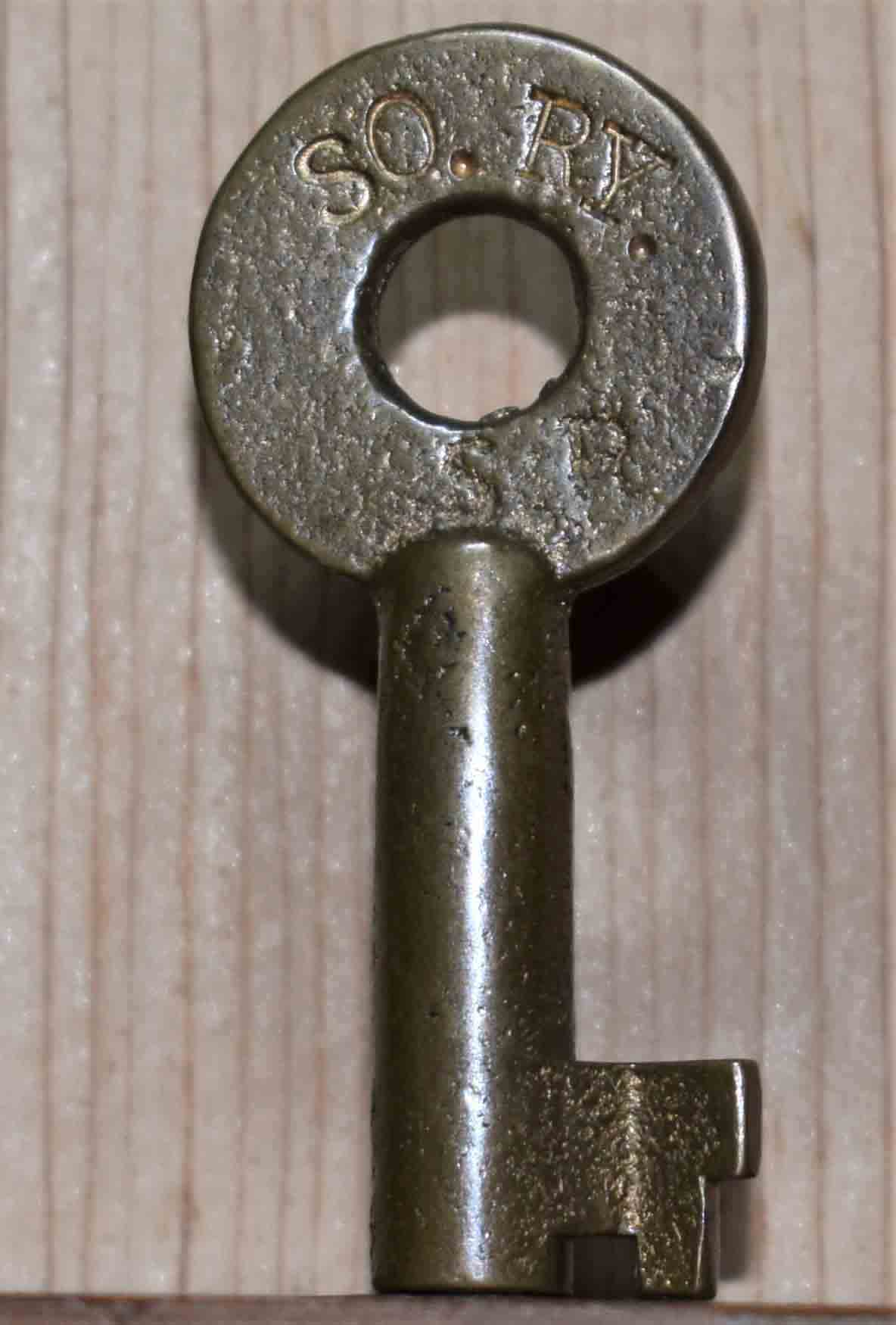
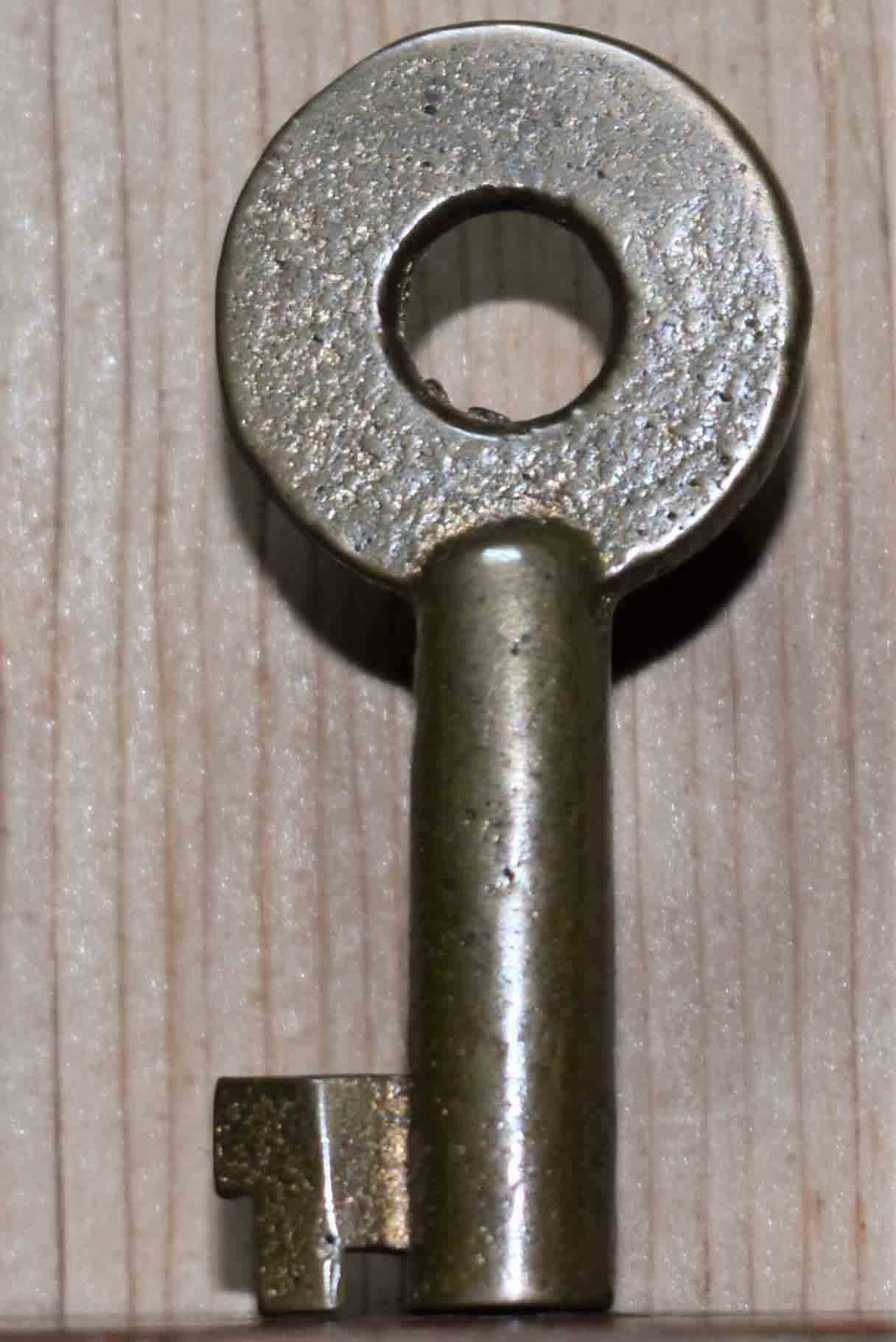

Southern Railway
Item: 55-S New Listing Price: $95.00
Remarks: ca. early 1900s
Superb stamp marks and gold patina.
History - continued from above
The Southern Railway began dieselization in 1941, and was the largest all-diesel railroad when it retired its last steam locomotive in 1953. The Southern Railway was active in mechanization, used helper engines, is widely credited with inventing unit trains for coal and new freight cars, and understood the power of marketing using the promotional phrase "Southern Gives a Green Light to Innovation."
Click on image to view larger picture



Southern Railway
Item: 56-S New Listing Price: $85.00
Remarks: ca. early 1900s
Nice stamp marks and gold patina.
History - continued from above
The Central of Georgia became part of the system in 1963, and the former Norfolk Southern Railway was acquired in 1974. Despite these small acquisitions, the Southern disdained the merger trend when it swept the railroad industry in the 1960s, choosing to remain a regional carrier. In 1978 President L. Stanley Crane said the refusal to add routes through merger was a mistake, especially the decision not to add a connecting route to Chicago.
Click on image to view larger picture



Southern Railway
Item: 57-S signal box key Price: $100.00
Remarks: ca. early 1900s. A rare 1!
History - continued from above
In response to the creation of the CSX Corporation in November 1980, the Southern Railway joined forces with the Norfolk and Western Railway and formed the Norfolk Southern Corporation in 1980 which began operations in 1982, further consolidating railroads in the eastern half of the United States. The Southern Railway was renamed Norfolk Southern Railway as the Norfolk and Western Railway became a subsidiary to its system on June 1, 1982. The railroad then acquired more than half of Conrail on June 1, 1999.
Click on image to view larger picture

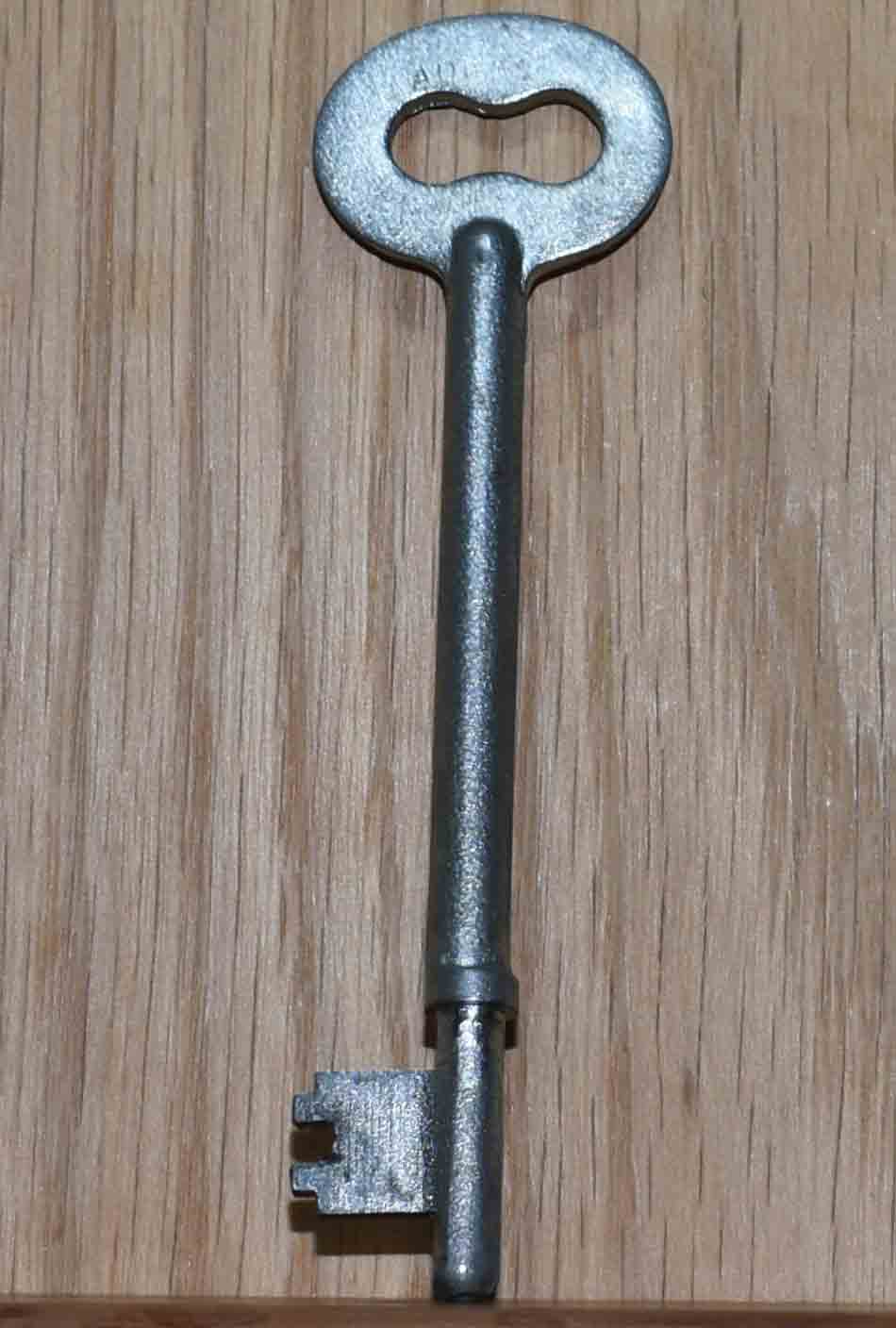

Southern Railway
Item: 58-S Price: $75.00
Remarks: ca. mid-1900s.
Forged by the Adlake Co.
Cab/coach key. Nice stamp marks.
Click on image to view larger picture



Southern Indiana Railroad
Item: 61-S Price: $150.00
Remarks: ca. early 1900s
Superb stamp marks and chocolate patina.
A rare 80 year+ octogenarian!
Nice find!
History
The Southern Indiana Railway began operations in 1939, running on tracks that were once an interurban trolley line (Indiana Railroad). The railroad was based out of Sellersburg, IN and owned two Cummins re-powered Alco switchers, and before that two 65 Tonners. The railroad hauled cement five days a week (Monday-Friday 0700 to 1500) between the Lehigh Cement plant in Speed and the CSX interchange at Watson.
SIND ceased operations in 2020 after Lehigh Cement announced they would be spending $700-800 million on their Mitchell, Indiana plant to increase capacity and shut down the smaller, older plant in Speed. The facility in Speed will continue as a distribution center, but will need less rail service. In 2022, the line, equipment, and assets were purchased by the Louisville and Indiana Railroad.
Click on image to view larger picture
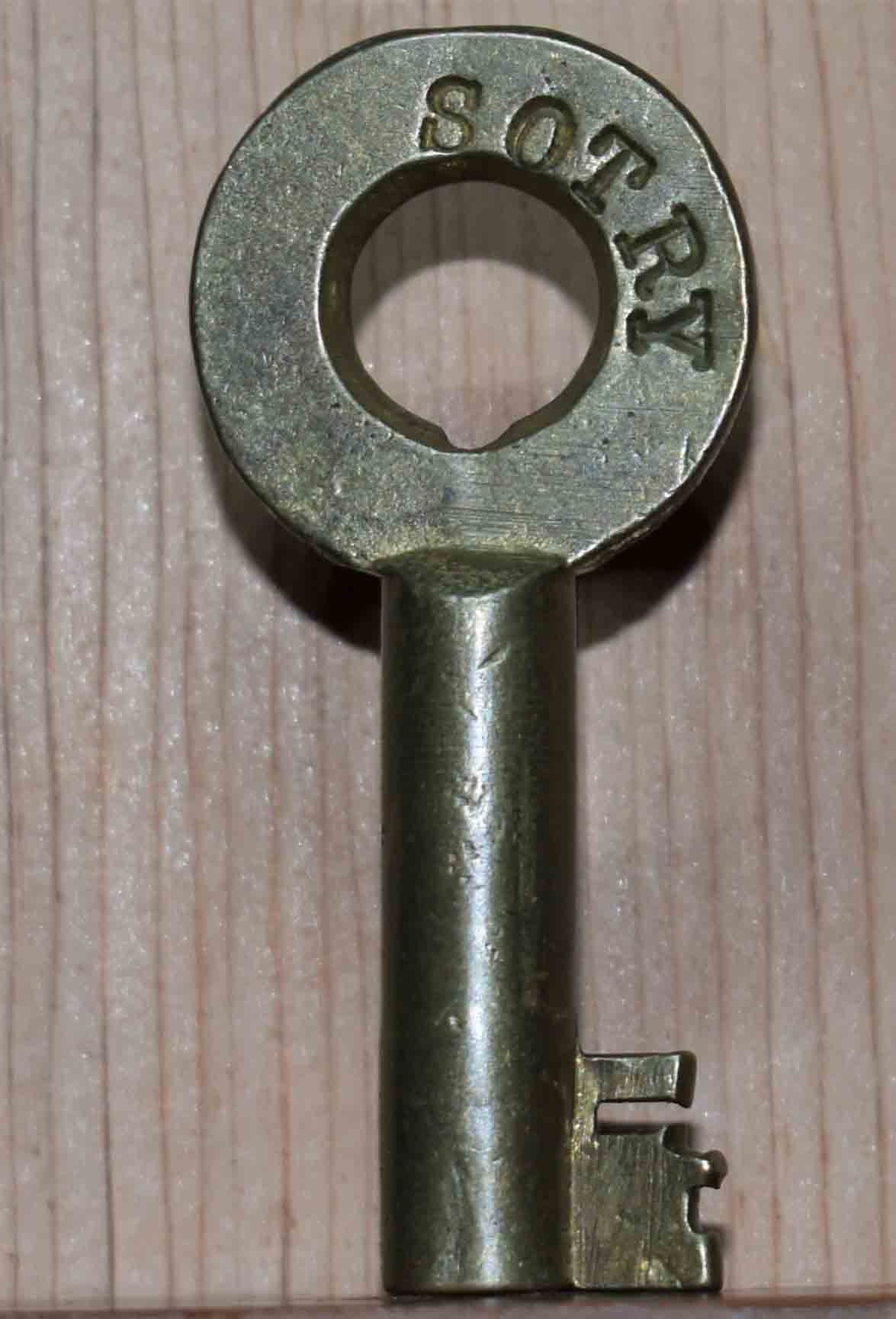



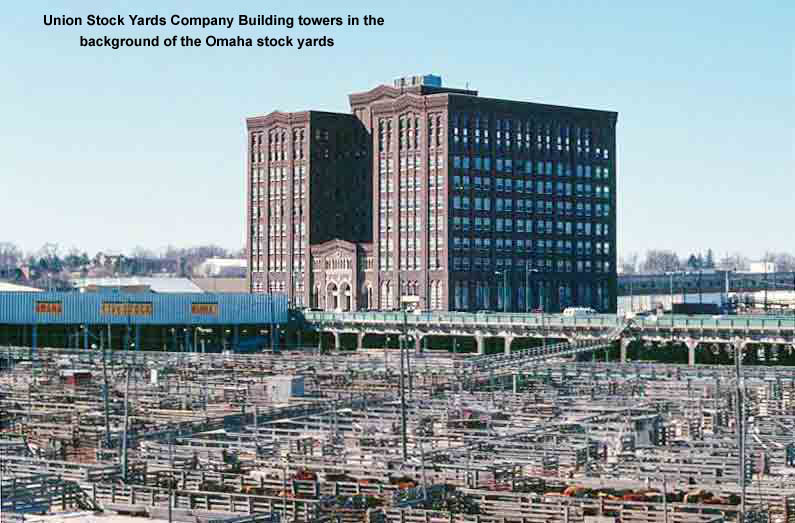
South Omaha Terminal Railway Co.
Item: 63-S Price: $110.00
Remarks: ca. mid-1900s
Forged by the Adlake Co.
Excellent serif stamp marks and gold patina.
116yr. old stockyard institution closed in 1999.
History
The South Omaha Terminal Railway, a subsidiary of the Union Stock Yards Company of Omaha, was a spur line established to serve the Omaha stockyards, which opened in the 1880s. It was transformed into the South Omaha Terminal Railway in the 1920s. Because of the Stockyards, by the 1880s Omaha was served by every major railroad in the country. Other railroads in the city included the Omaha Road, Omaha, Lincoln and Beatrice Railway, Omaha Southern Railroad, Kansas, Nebraska and Omaha Railway, Omaha and Republican Valley Railway, Omaha and South Western Railroad and Omaha, Abilene and Wichita Railway.
The South Omaha Terminal Railway in Omaha, Nebraska was a subsidiary of the Union Stock Yards Company of Omaha. Until the separate railroad company was created in July 1927, the trackage, about 17 miles (27 km), was owned and operated directly by the Union Stock Yards Company of Omaha. On April 4, 1978, an Interstate Commerce Commission emergency service order was issued at which time the Brandon Corporation took over service.
Click on image to view larger picture

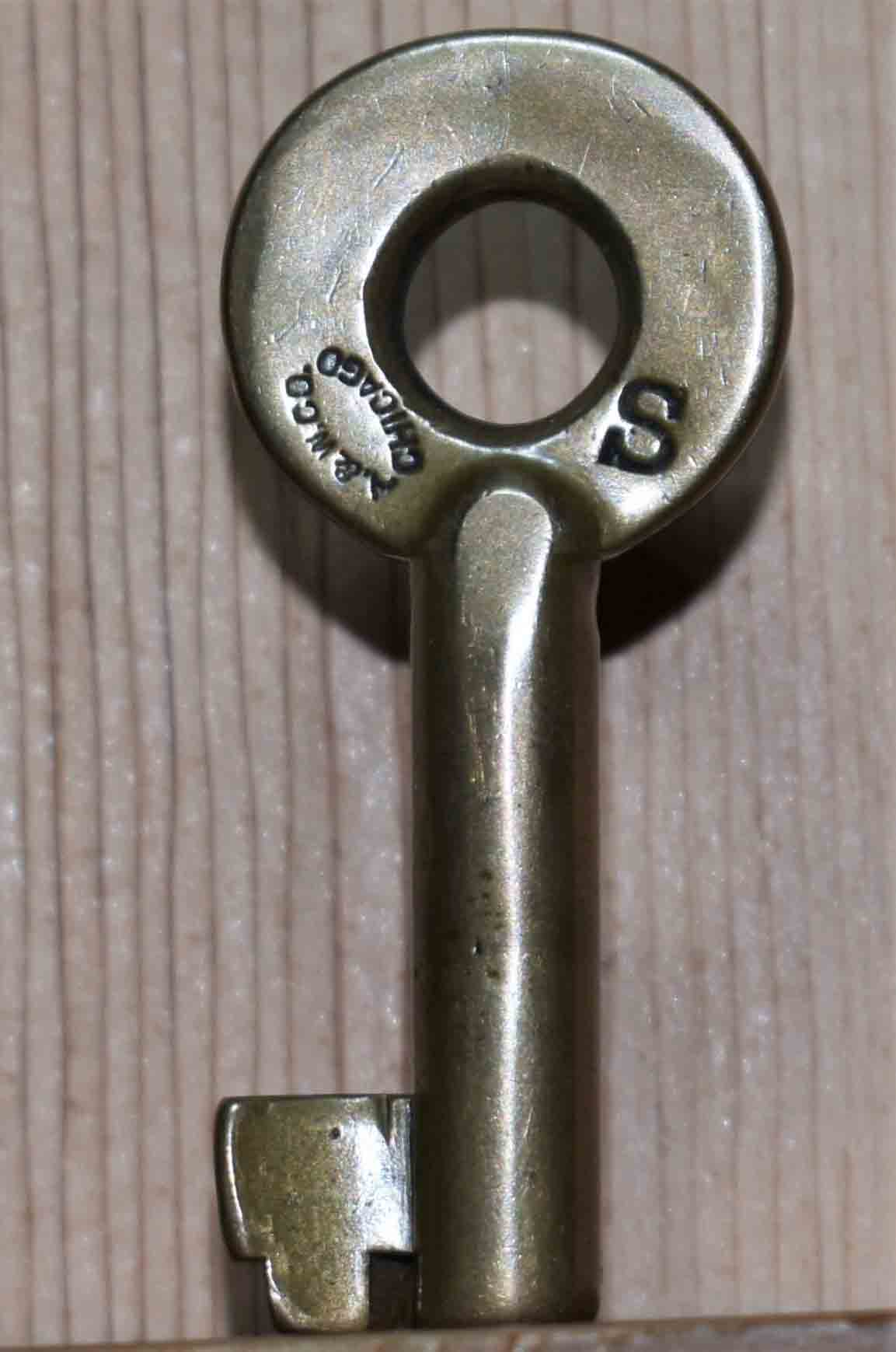
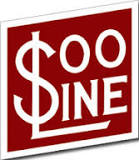
Soo Line Railroad
Item: 66-S Price: $150.00
Remarks: ca. early 1900s
Forged by the Adams & Westlake Co.
Elongated barrel. Superb stamp marks
and gold patina.
100 year+ centenarian!
History
The Minneapolis, St. Paul & Sault Ste. Marie Railroad (reporting mark SOO) was a Class I railroad subsidiary of the Canadian Pacific Railway in the Midwest United States. Commonly known as the Soo Line after the phonetic spelling of Sault, it was merged with several other major CP subsidiaries on January 1, 1961 to form the Soo Line Railroad. As time passes, more and more Soo Line equipment is being repainted into the Canadian Pacific's current paint scheme, slowly erasing the Soo's identity as a subsidiary railroad.
Click on image to view larger picture



Soo Line Railroad
Item: 67-S Price: $115.00
Remarks: ca. post 1930
Forged by the Fraim Co.
Superb stamp marks and copper patina.
80 year+ Fraim octogenarian rarity!
History - continued from above
The present Soo Line Railroad was incorporated in Minnesota on October 19, 1949, as the Duluth, South Shore and Atlantic Railroad, as part of the plan for reorganizing the Duluth, South Shore and Atlantic Railway (DSA) and subsidiary Mineral Range Railroad. When CP consolidated several subsidiaries on January 1, 1961, it used this company to merge the Minneapolis, St. Paul and Sault Ste. Marie Railroad and the Wisconsin Central Railway into, and renamed it to the present name, the Soo Line Railroad.
Click on image to view larger picture



Soo Line Railroad
Item: 68-S New Listing Price: $115.00
Remarks: ca. post 1930
Forged by the Fraim Co.
Superb stamp marks and gold patina.
80 year+ Fraim octogenarian rarity!
History - continued from above
In 1984, CP incorporated the Soo Line Corporation in Minnesota as a holding company, exchanging stock in December to give the Soo Line Corporation total control over the railroad. Two months later, on February 19, 1985, the Soo Line purchased the property of the bankrupt Chicago, Milwaukee, St. Paul and Pacific Railroad and assigned it to a newly created subsidiary, The Milwaukee Road, Inc. This company and the MN&S were both merged into the Soo Line Railroad effective January 1, 1986.
Click on image to view larger picture

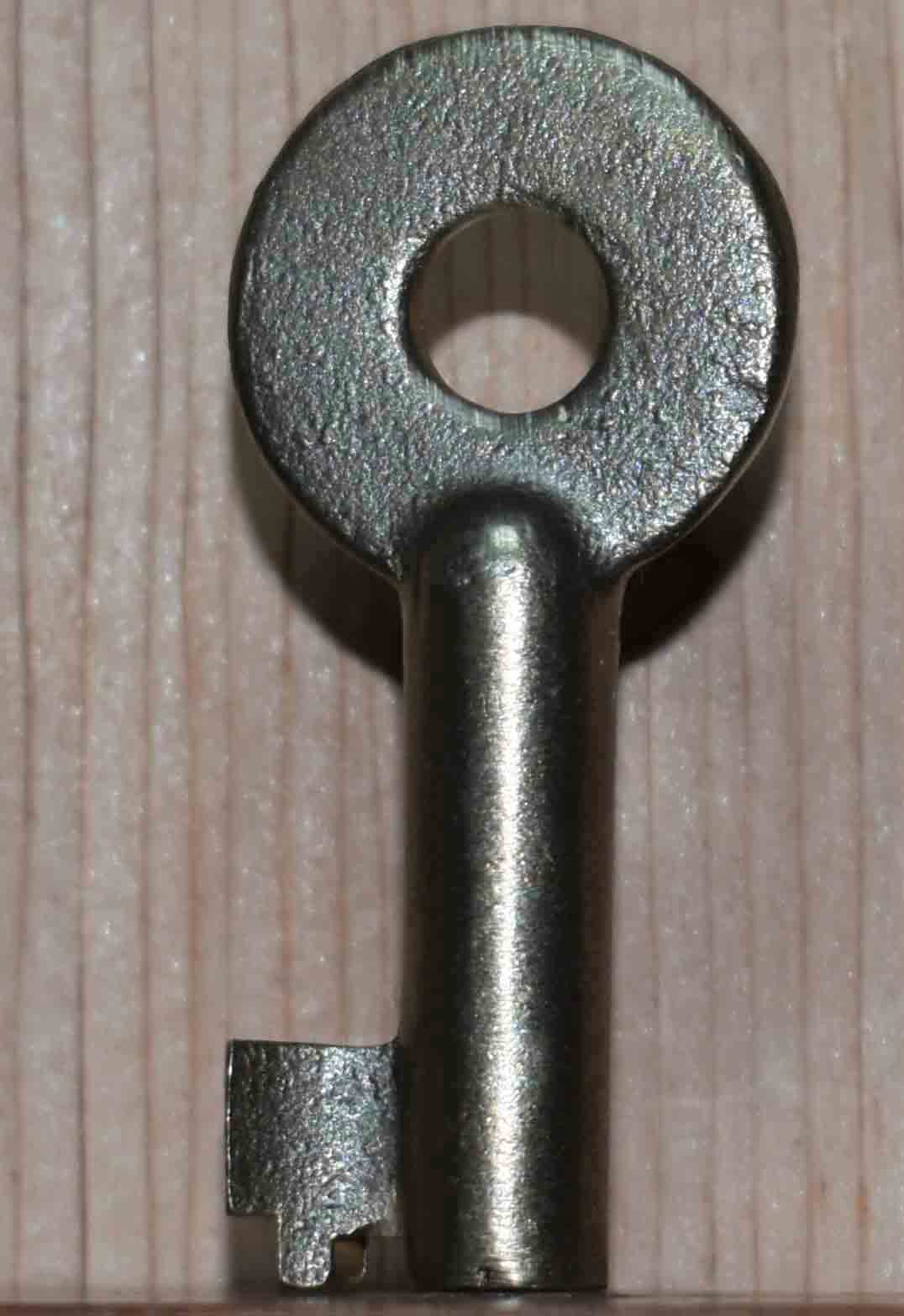

Soo Line Railroad
Item: 69-S Price: $40.00
Remarks: ca. mid-1900s
Keline forged.
Great stamp marks and gold patina.
History - continued from above
The company's main line begins at Portal, North Dakota, on the Canada-U.S. border, and extends southeast along former MStP&SSM trackage to the Twin Cities (Minneapolis-Saint Paul). Ex-Milwaukee Road trackage takes the Soo Line from the Twin Cities to Chicago via Milwaukee. Between Chicago and Detroit, where the CP-owned Detroit River Tunnel connects back into Canada, the Soo Line has trackage rights over the Norfolk Southern Railway and haulage rights over CSX Transportation.
Click on image to view larger picture



Soo Line Railroad
Item: 70-S m = post merger key Price: $40.00
Remarks: ca. late 1900s
Keline forged.
Nice stamp marks and gold patina.
Click on image to view larger picture


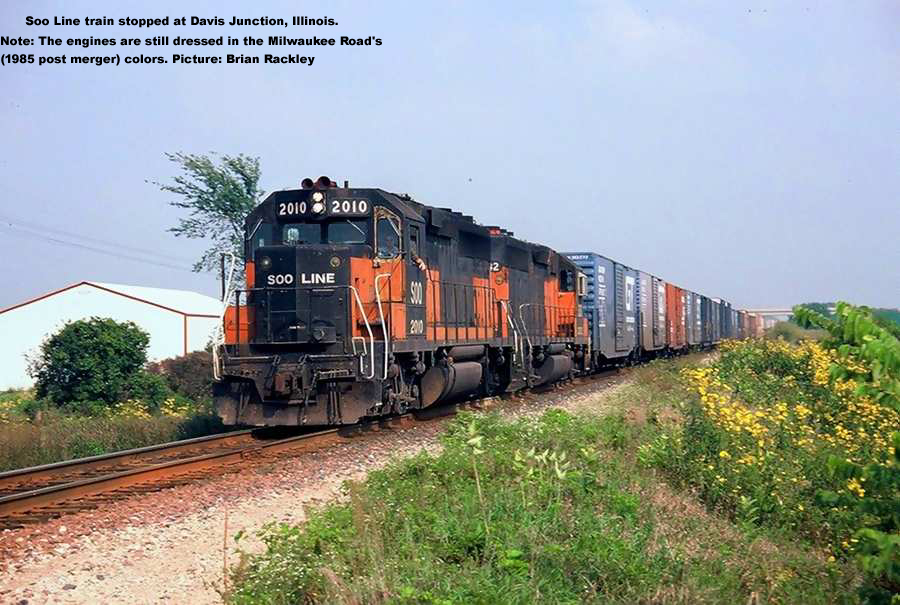
Soo Line Railroad
Item: 71-S Price: $75.00
Remarks: ca. post 1930
Forged by S. Slaymaker Co.
Nice stamp marks and caramel patina.
80 year+ octogenarian!
Click on image to view larger picture



Soo Line Railroad
Item: 72-S Price: $45.00
Remarks: ca. mid-1900s
Forged by the Adlake Co.
Nice stamp marks and gold patina.
Click on image to view larger picture
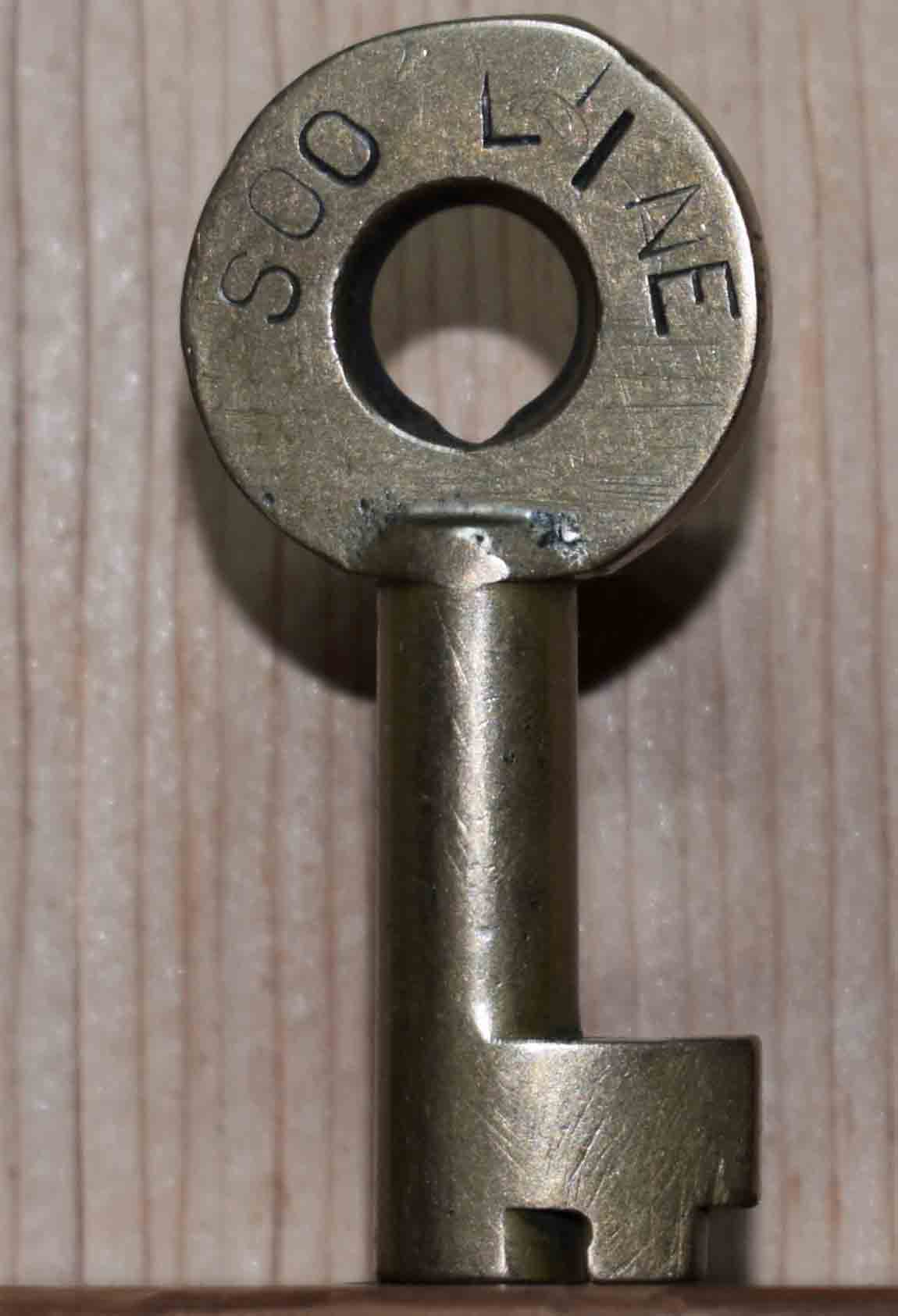
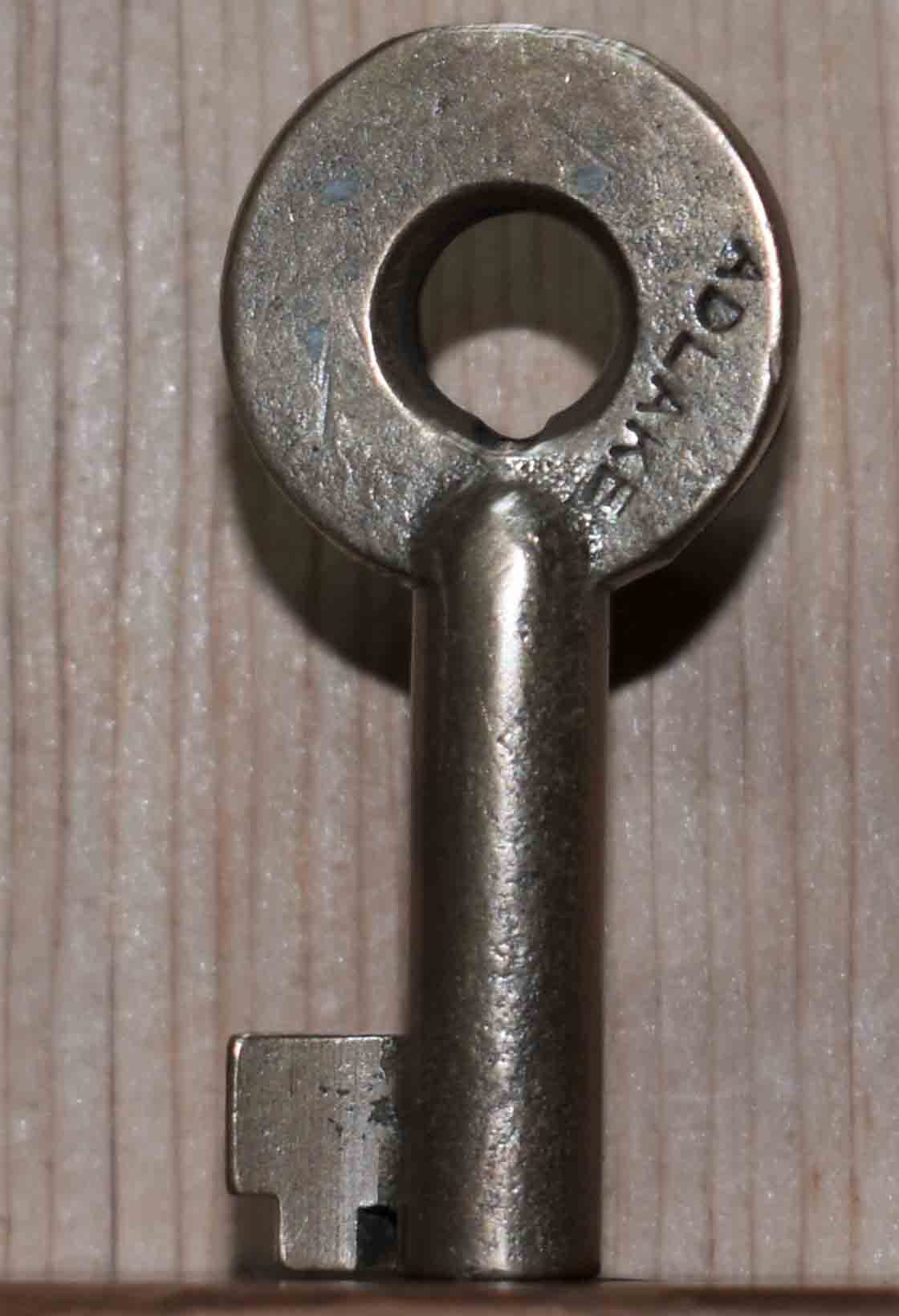

Soo Line Railroad
Item: 73-S Price: $45.00
Remarks: ca. mid-1900s
Forged by the Adlake Co.
Click on image to view larger picture


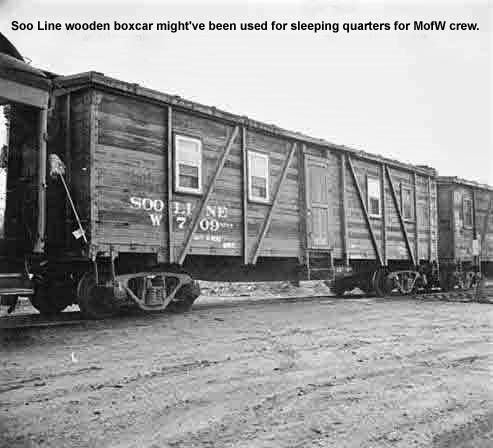
Soo Line Railroad
Item: 74-S New Listing Price: $45.00
Remarks: ca. mid-1900s
Forged by the Adlake Co.
Click on image to view larger picture
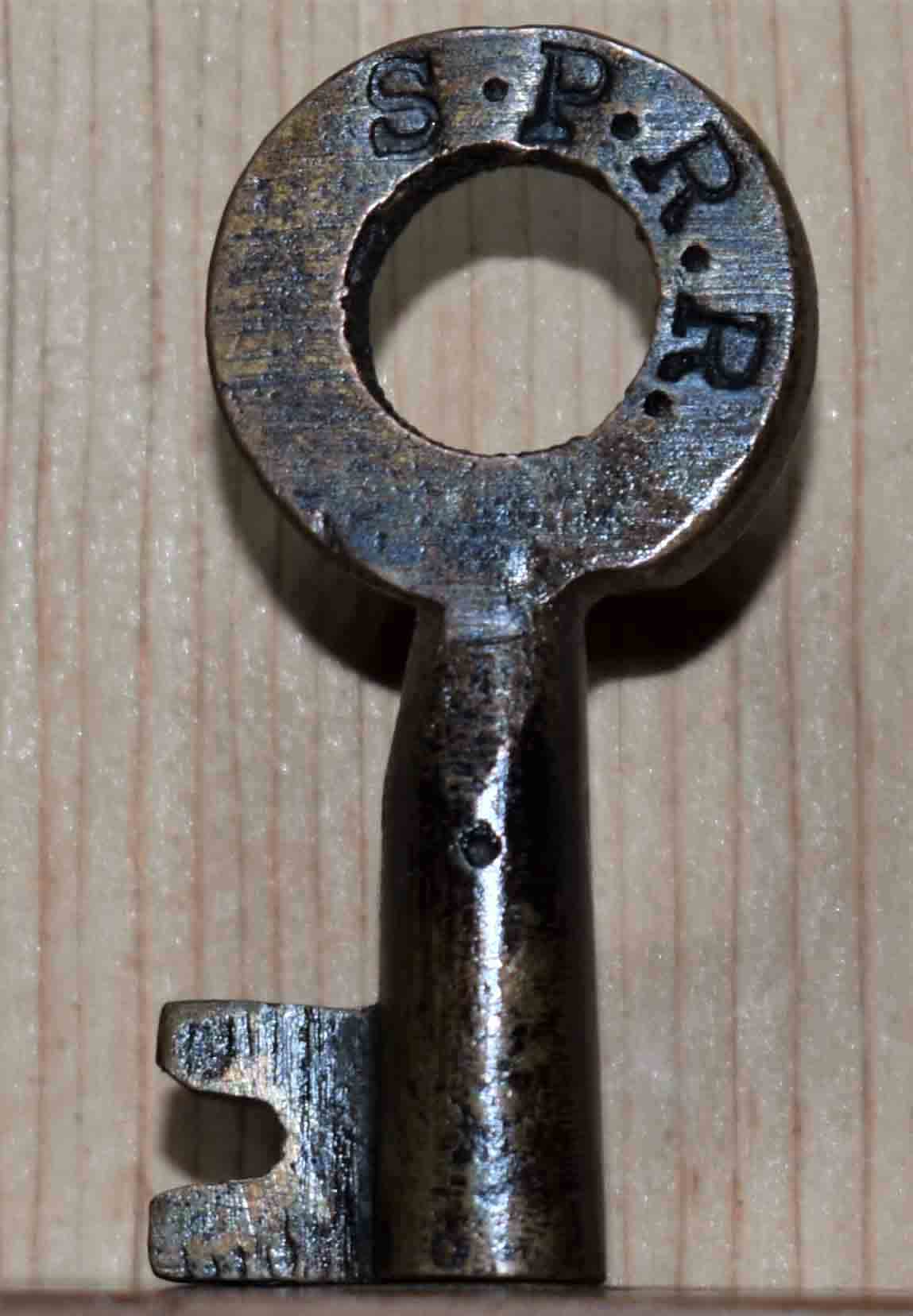
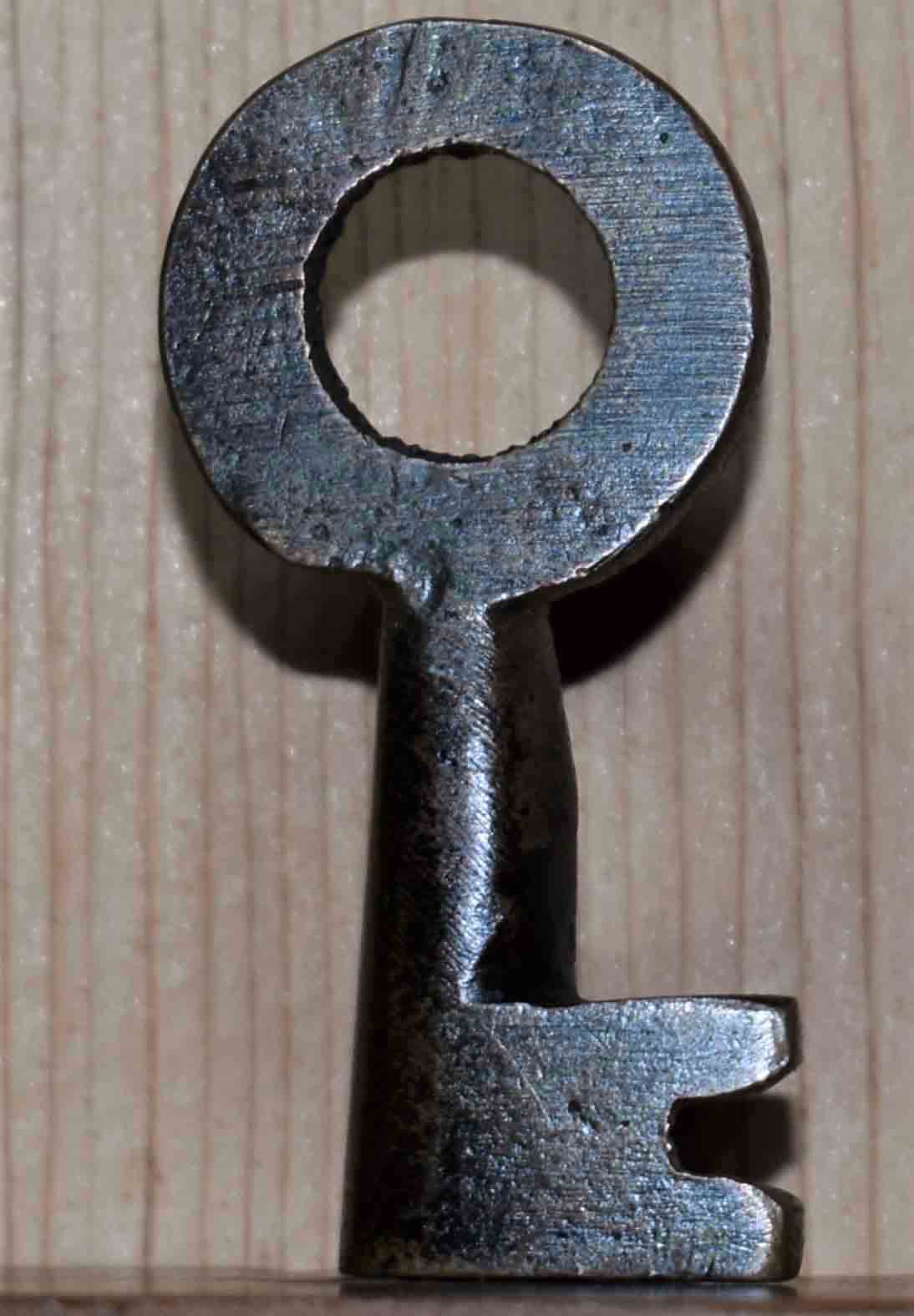

South Pacific Railroad
Item: 78-S Price: $125.00
Remarks: chartered in 1868.
Superb stamp marks and patina. Very early
forged key with a copper alloy mix. Purchased by the
A&P, followed by the A&P being absorbed by the Frisco.
153 year old Western relic.
History
The South Pacific was a subsidiary of the Atlantic and Pacific (A&P) Railroad, a congressionally chartered concern backed by a million potential acres in federal land grants. It put hundreds of men to work building a bridge across the Gasconade and converting track from broad to standard gauge.
The company reached Springfield in 1869 and the western boundary of Missouri by 1870, thereby meeting the requirements of the state’s charter. The A&P bought the South Pacific to make up the eastern division of a transcontinental railway to California.
Click on image to view larger picture
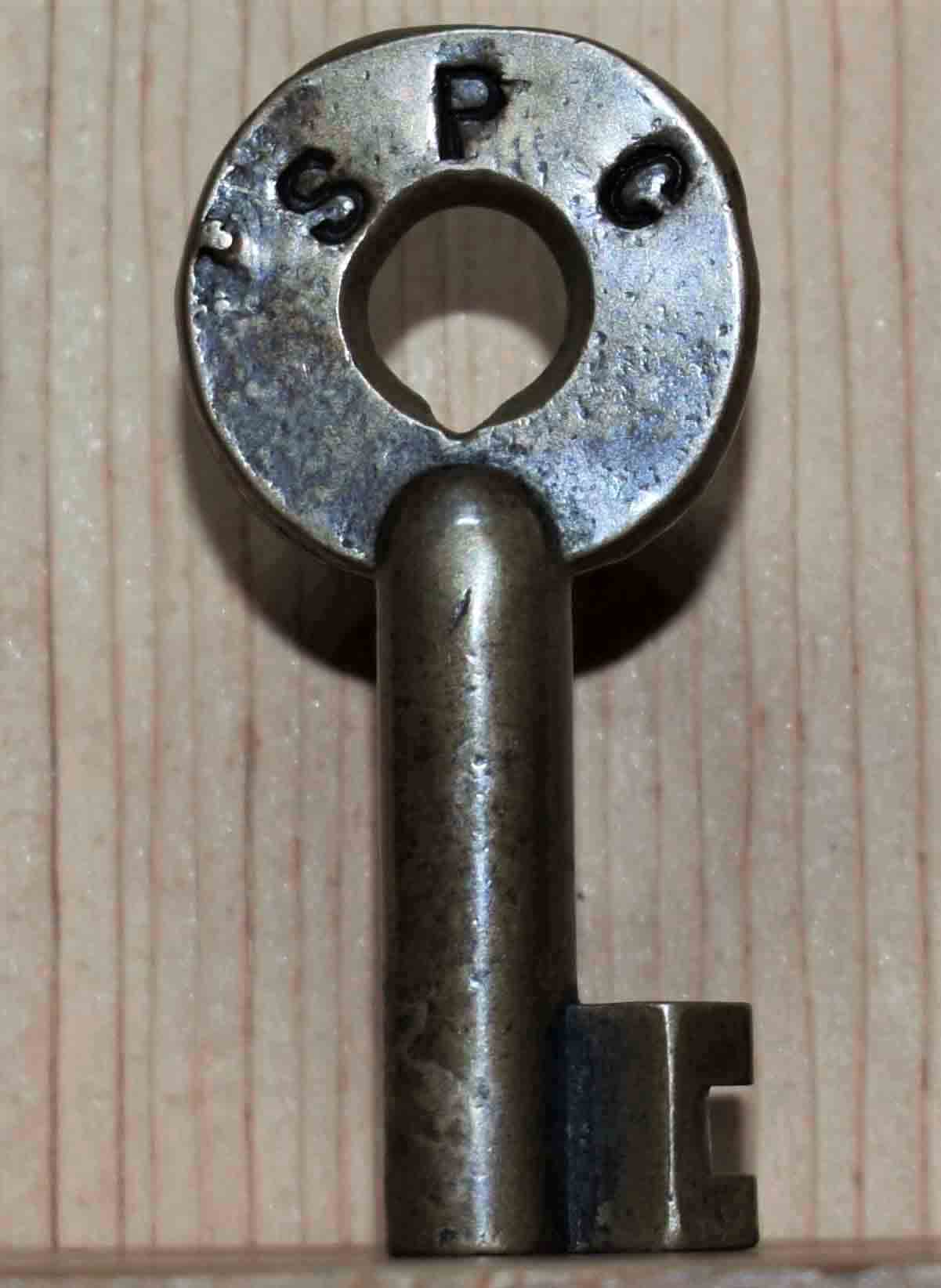
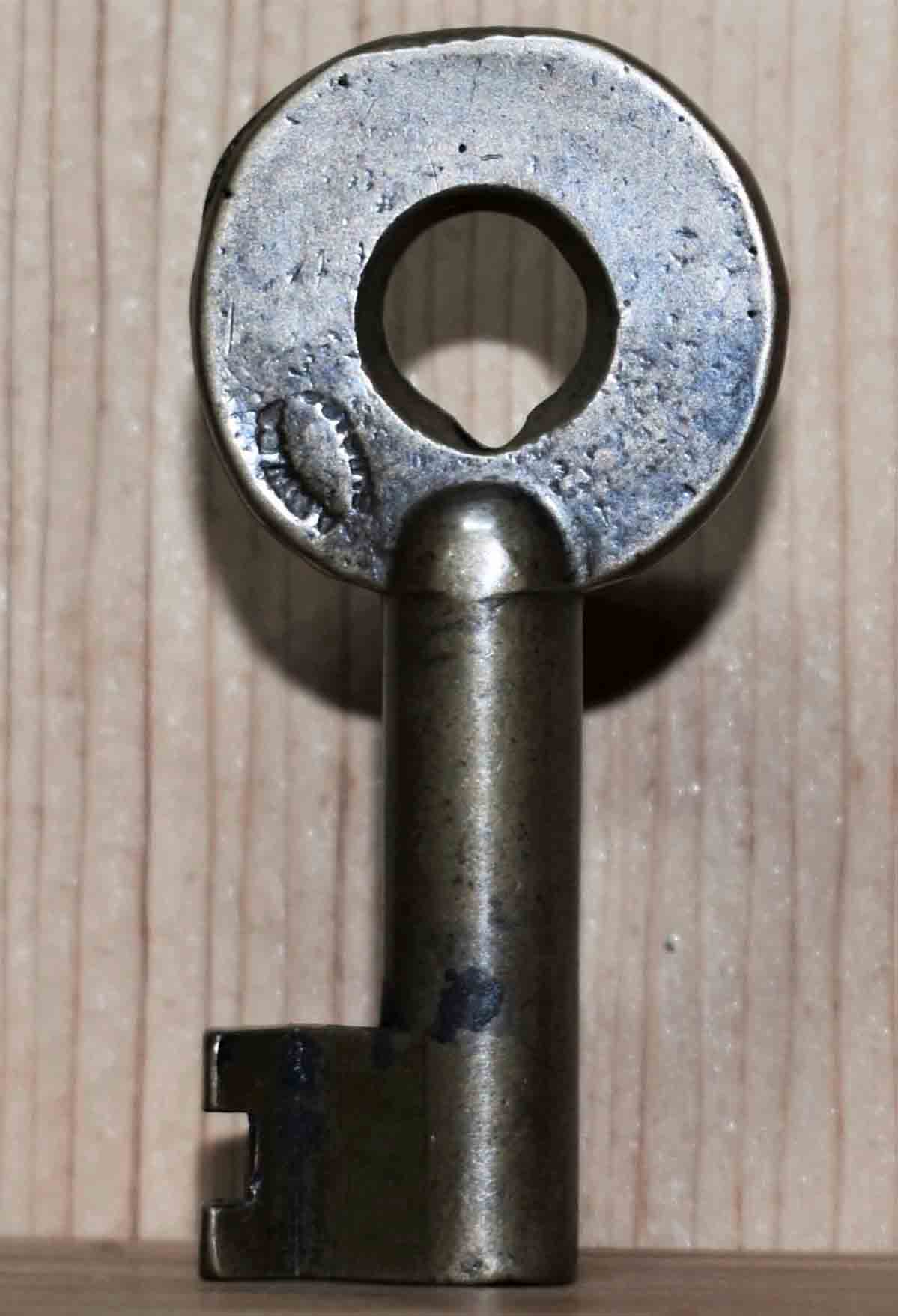
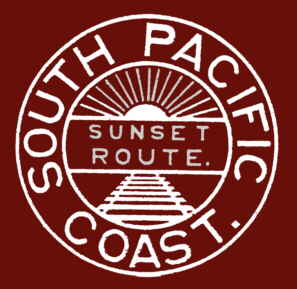
South Pacific Coast Railroad
Item: 80-S Price: $175.00
Remarks: chartered in 1868
Forged by the Adams & Westlake Co.
Superb stamp marks and dark patina.
100 year+ centenarian!
History
The SPC Railroad was a 3 ft narrow gauge steam railroad running between Santa Cruz, California and Alameda, with a ferry connection in Alameda to San Francisco.
SPC was incorporated in 1876 to purchase the unfinished Santa Clara Valley Company railroad at Dumbarton Point. Dumbarton Point was then a landing to transfer agricultural produce from the Santa Clara Valley for transport to San Francisco.
The railroad was created as the Santa Clara Valley Railroad, founded by local strawberry growers as a way to get their crops to market in San Francisco and provide an alternative to the Southern Pacific Railroad. In 1876, James Graham Fair, a Comstock Lode silver baron, bought the line and extended it into the Santa Cruz Mountains to capture the significant lumber traffic coming out of the redwood forests. The line was originally laid with 52-pound rail on 8-foot (2.4 m) redwood ties; and was later acquired by the Southern Pacific and converted to standard gauge.
Click on image to view larger picture
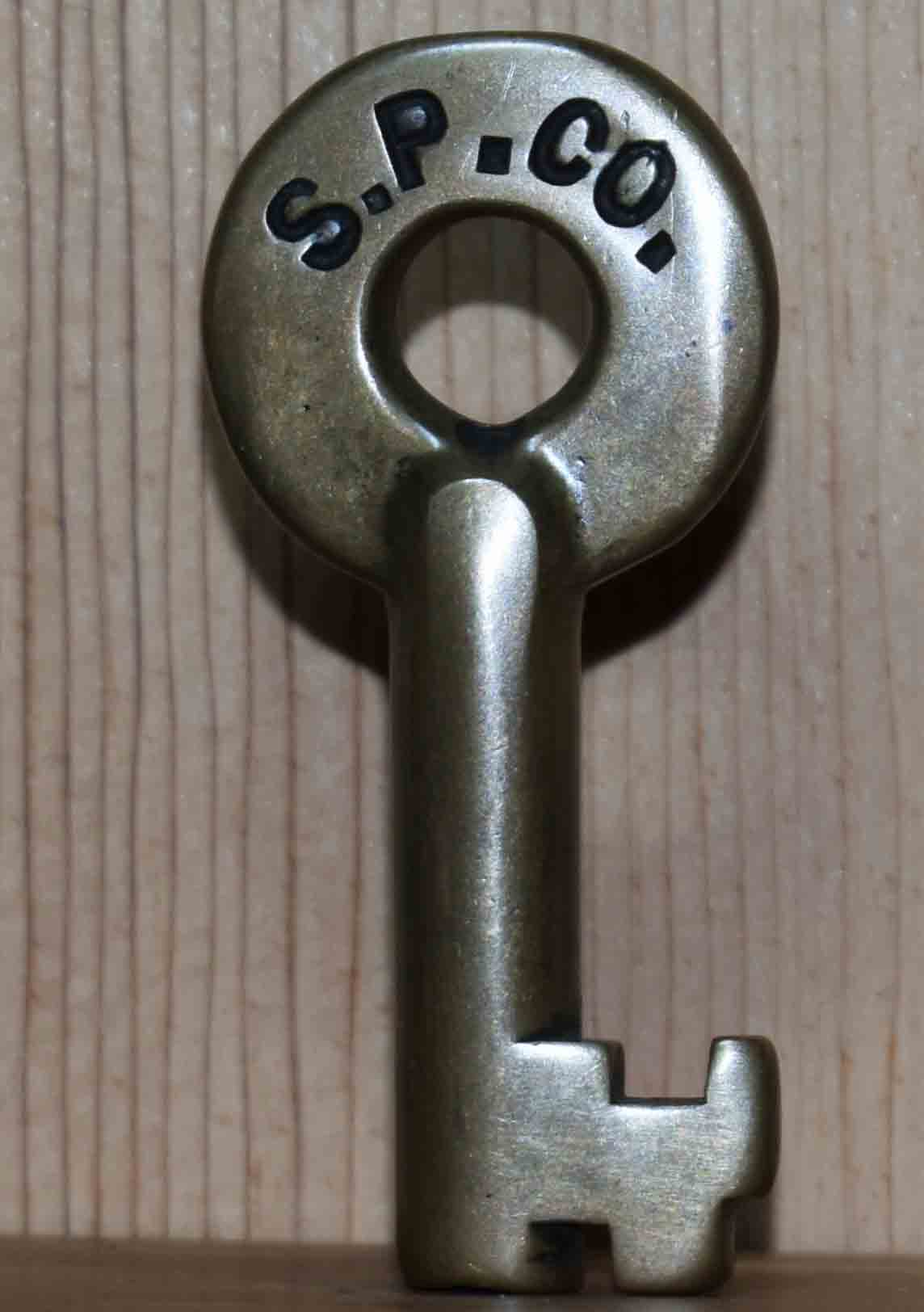


Southern Pacific Co.
Item: 84-S CS-4 (switch) Price: $95.00
Remarks: ca. early 1900s
Forged by the Adams & Westlake Co
Superb stamp marks and gold patina.
100 year+ centenarian!
History
The original Southern Pacific began in 1865 as a land holding company. The last incarnation of the Southern Pacific, the Southern Pacific Transportation Company, was founded in 1969 and assumed control of the Southern Pacific system. The Southern Pacific Transportation Company was acquired in 1996 by the Union Pacific Corporation and merged with their Union Pacific Railroad.
Click on image to view larger picture

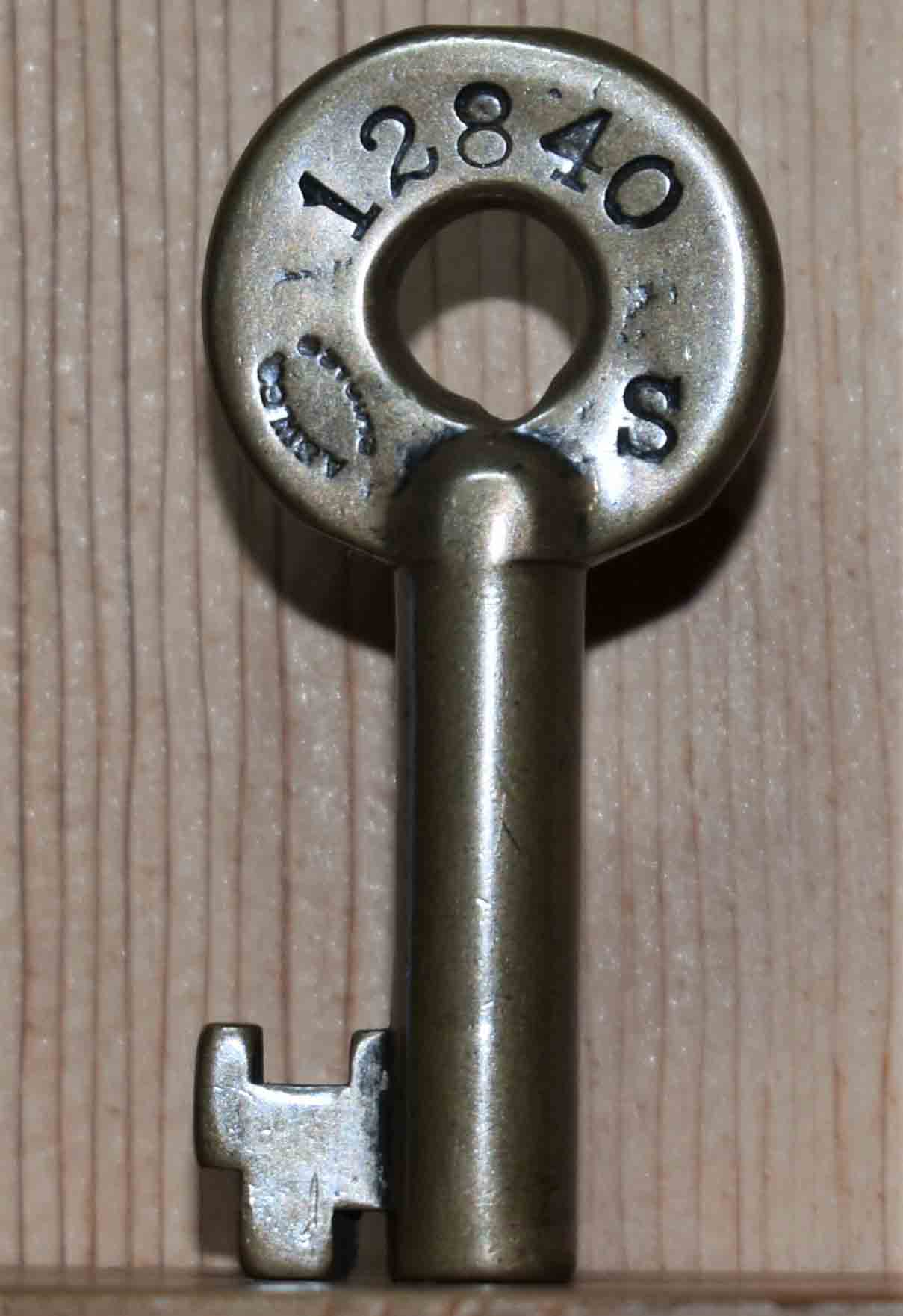

Southern Pacific Co.
Item: 85-S CS-4 (switch) Price: $95.00
Remarks: ca. early 1900s
Forged by the Adams & Westlake Co
Superb stamp marks and gold patina.
100 year + centenarian!
History - continued from above
The railroad was founded as a land holding company in 1865, later acquiring the Central Pacific Railroad by lease. By 1900 the Southern Pacific Company was a major railroad system incorporating many smaller companies, such as the Texas & New Orleans Railroad and Morgan's Louisiana & Texas Railroad. It extended from New Orleans through Texas to El Paso, across New Mexico and through Tucson, to Los Angeles, through most of California, including San Francisco and Sacramento. Central Pacific lines extended east across Nevada to Ogden, Utah, and reached north through Oregon to Portland. Other subsidiaries eventually included the St. Louis Southwestern Railway (Cotton Belt), the Northwestern Pacific Railroad at 328 miles, the 1,331 miles Southern Pacific Railroad of Mexico, and a variety of 3 ft (914 mm) narrow gauge routes.
Click on image to view larger picture



Southern Pacific Co.
Item: 86-S CS-4 (switch) Price: $95.00
Remarks: ca. early 1900s
Forged by the Adams & Westlake Co
Superb stamp marks and two-tone patina.
100 year+ centenarian!
History - continued from above
In 1969, the Southern Pacific Transportation Company was established and took over the Southern Pacific Company; this Southern Pacific railroad is the last incarnation and was at times called "Southern Pacific Industries," though "Southern Pacific Industries" is not the official name of the company.
Click on image to view larger picture



Southern Pacific Co.
Item: 87-S CS-4 (switch) Price: $95.00
Remarks: ca. early 1900s
Forged by the Adams & Westlake Co
Superb stamp marks and gold patina.
100 year+ centenarian!
History - continued from above
The Southern Pacific legacy founded hospitals in San Francisco, Tucson, Arizona, and elsewhere. In the 1970s, it also founded a telecommunications network with a state-of-the-art microwave and fiber optic backbone. This telecommunications network became part of Sprint, a company whose name came from the acronym for Southern Pacific Railroad Internal Networking Telephony.
Click on image to view larger picture


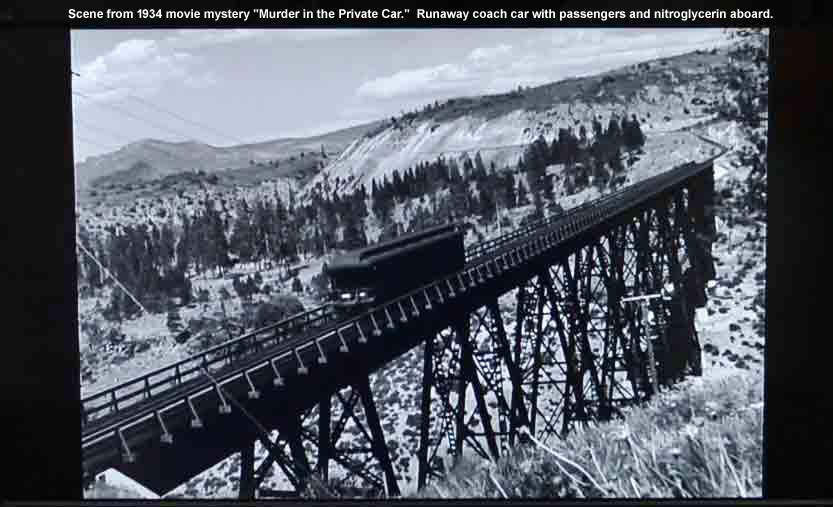

 Southern Pacific Co.
Item: 88-S CS-4 (switch) Price: $65.00
Remarks: ca. mid-1900s
Forged by the Adlake Co.
Superb stamp marks and patina.
80 year+ octogenarian!
History - continued from above
Early diesel locomotives were also painted black. Yard switchers had diagonal orange stripes on the ends for visibility, earning this scheme the nickname of Tiger Stripe. Road freight units were black with a red band at the bottom of the car body and a silver and orange "winged" nose. "SOUTHERN PACIFIC" was in a large serif font in Lettering Gray (a very light gray). Railfans call this paint scheme Black Widow. An experimental scheme, all-over black with a variety of orange end and side sill treatments was called the Halloween scheme. Over 200 locomotives were so painted between March 1957 and mid-1958.
Click on image to view larger picture



Southern Pacific Co.
Item: 89-S CS-4 (switch) Price: $75.00
Remarks: ca. early 1900s
Forged by the Adams & Westlake Co
Superb stamp marks and dark patina.
Looks even better in your hand!
100 year+ centenarian!
History - continued from above
Well known were the Southern Pacific's unique "cab-forward" steam locomotives. These were 2-8-8-4 locomotives set up to run in reverse, with the tender attached to the smokebox end of the locomotive. Southern Pacific had a number of snow sheds in mountain terrain, and locomotive crews nearly asphyxiated from smoke in the cab. After a number of engineers began running their engines in reverse (pushing the tender), Southern Pacific asked Baldwin Locomotive Works to produce cab-forward designs. No other North American railroad ordered cab-forward locomotives.
Click on image to view larger picture

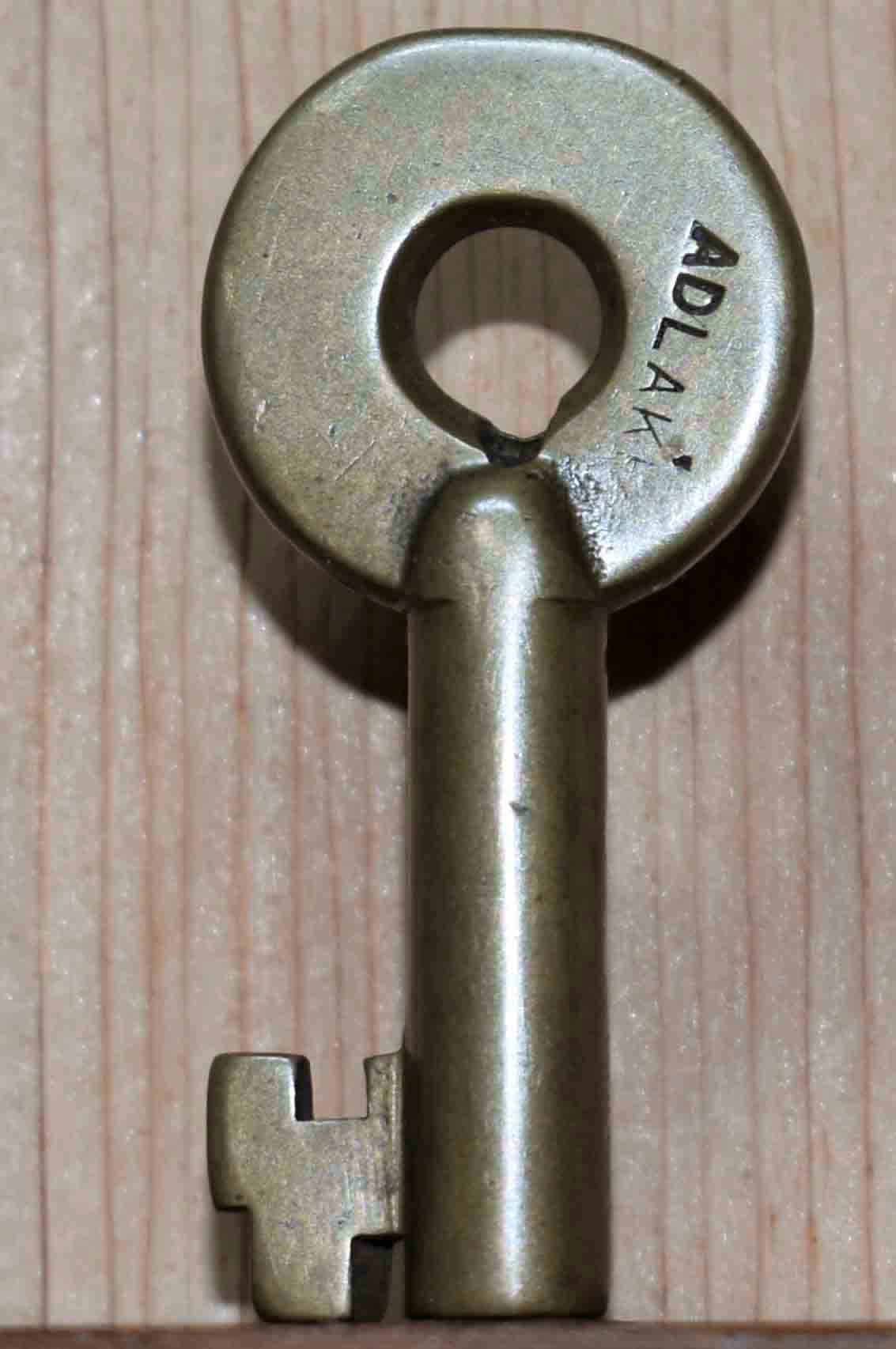

Southern Pacific Co.
Item: 90-S CS-4 (switch) Price: $55.00
Remarks: ca. mid-1900s
Forged by the Adlake Co.
Nice stamp marks and gold patina.
80 year+ octogenarian!
History - continued from above
Southern Pacific road switcher diesels often had elaborate lighting clusters front and rear, with a large red Mars Light for emergency signaling, and often two pairs of sealed-beam headlamps, one on top of the cab and the other below the Mars Light on the nose. Starting in the 1970s SP had cab air conditioning on all new locomotives and the unit is visible on the cab roof. Southern Pacific placed large snowplows on the pilots of their road switchers for the heavy snowfall on Donner Pass. Many Southern Pacific road switchers had a Nathan-AirChime model P3 or P5 air horn with chords distinct to Southern Pacific locomotives in the western states.
Click on image to view larger picture
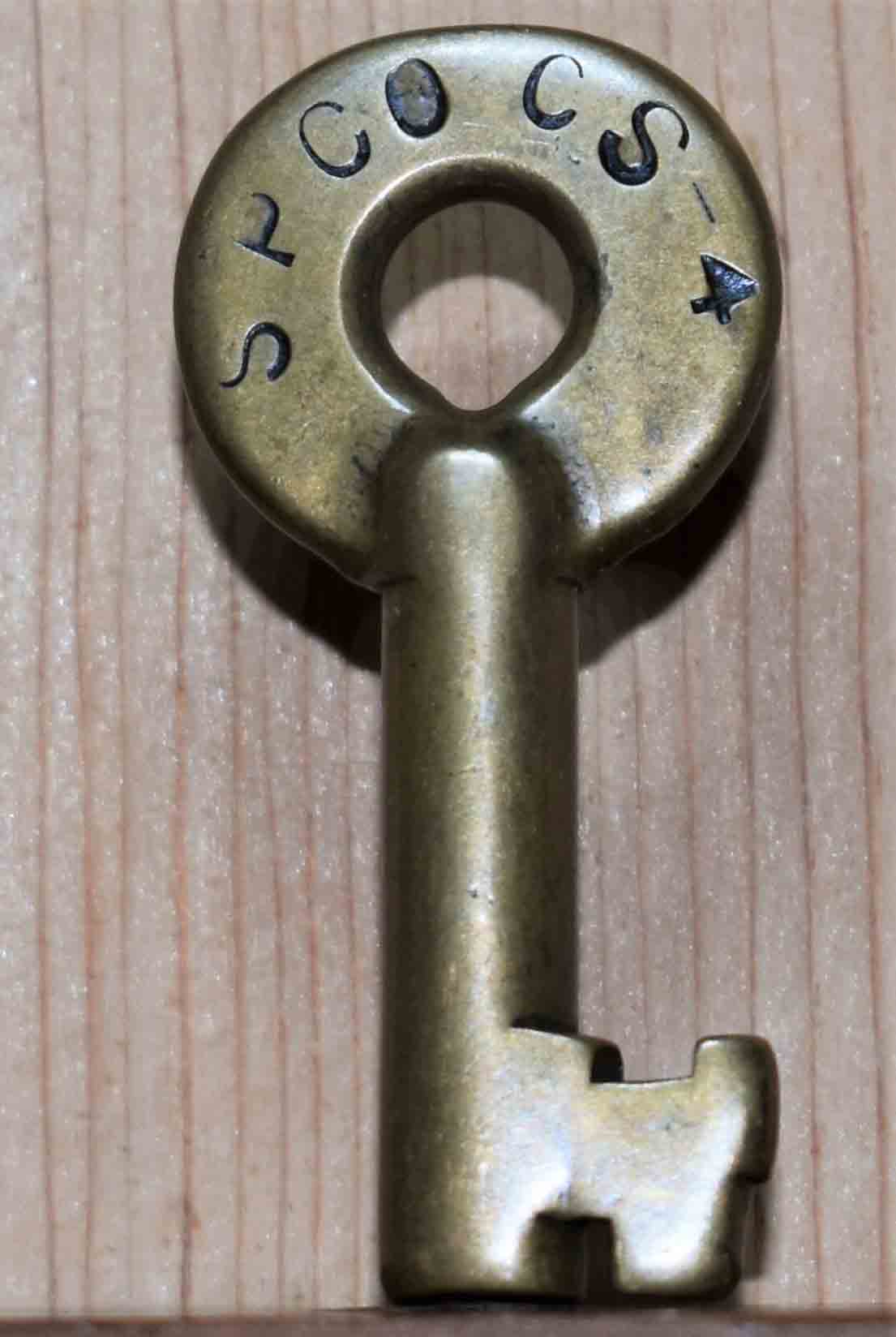

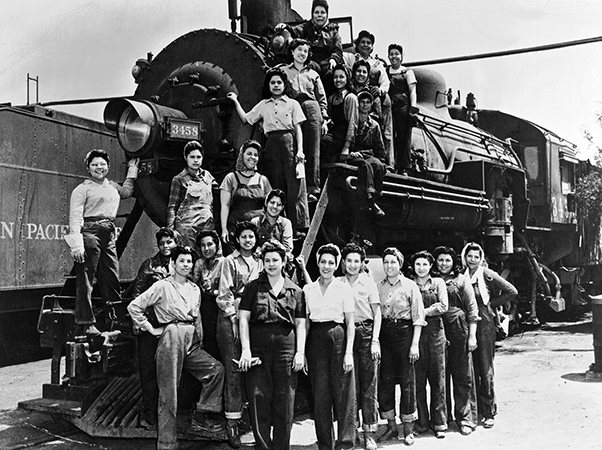
Southern Pacific Co.
Item: 91-S CS-4 (switch) Price: $55.00
Remarks: ca. early/mid-1900s
Forged by the Adlake Co.
Nice stamp marks and gold patina.
History - continued from above
There are many Southern Pacific locomotives still in revenue service with railroads such as the Union Pacific Railroad, and many older and special locomotives have been donated to parks and museums, or continue operating on scenic or tourist railroads. Most of the engines now in use with Union Pacific have been "patched," where the SP logo on the front is replaced by a Union Pacific shield, and new numbers are applied over the old numbers with a Union Pacific sticker, however some engines remain in Southern Pacific's "bloody nose" paint scheme.
Click on image to view larger picture


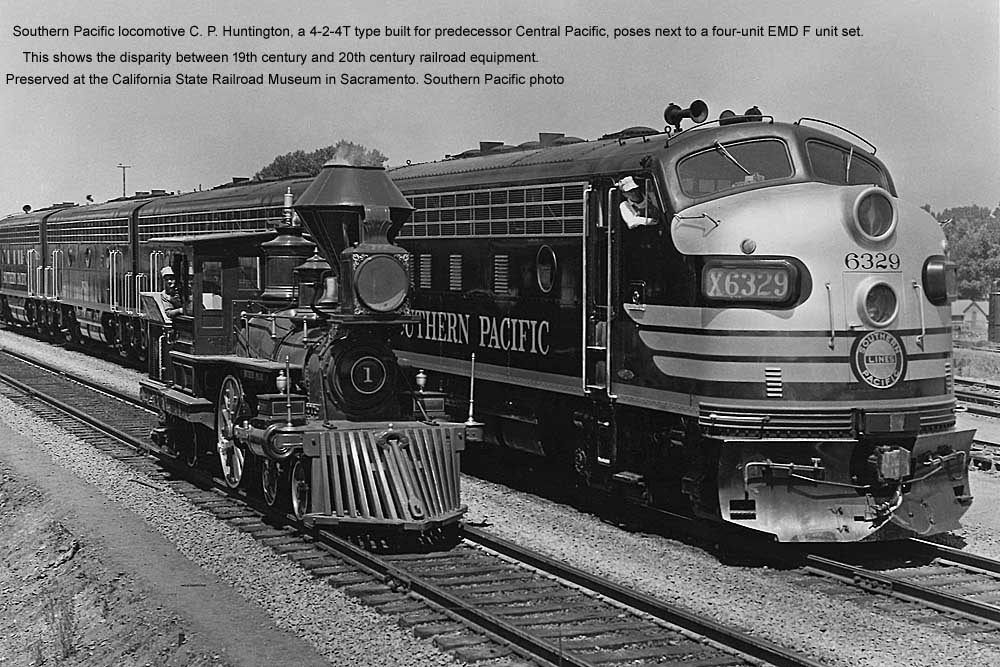
Southern Pacific Co.
Item: 92-S CS-4 (switch) Price: $55.00
Remarks: ca. early/mid-1900s
Forged by the Adlake Co.
Nice stamp marks and gold patina.
Click on image to view larger picture




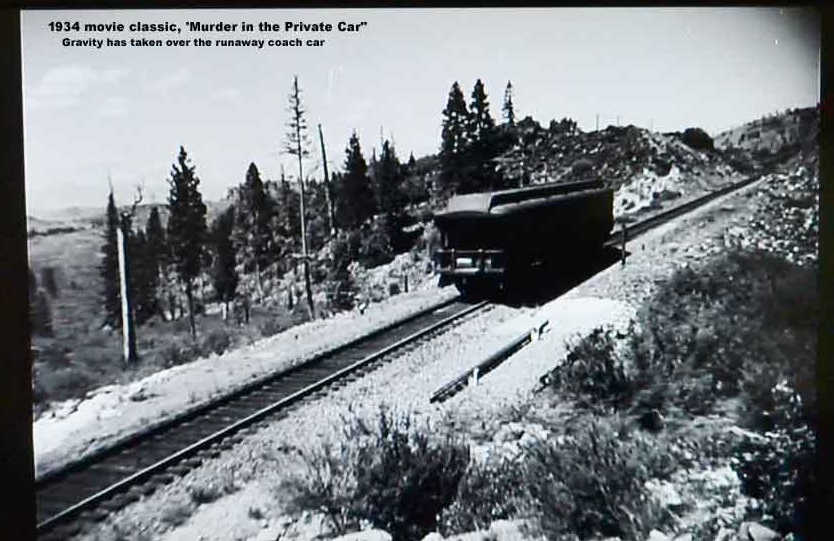
Southern Pacific Co.
Item: 93-S New Listing Price: $95.00
Remarks: ca. early 1900s CS-4
Forged by the Adlake Co.
Nice stamp marks and caramel patina.
Larger hilt than usual for SP keys.
Click on image to view larger picture

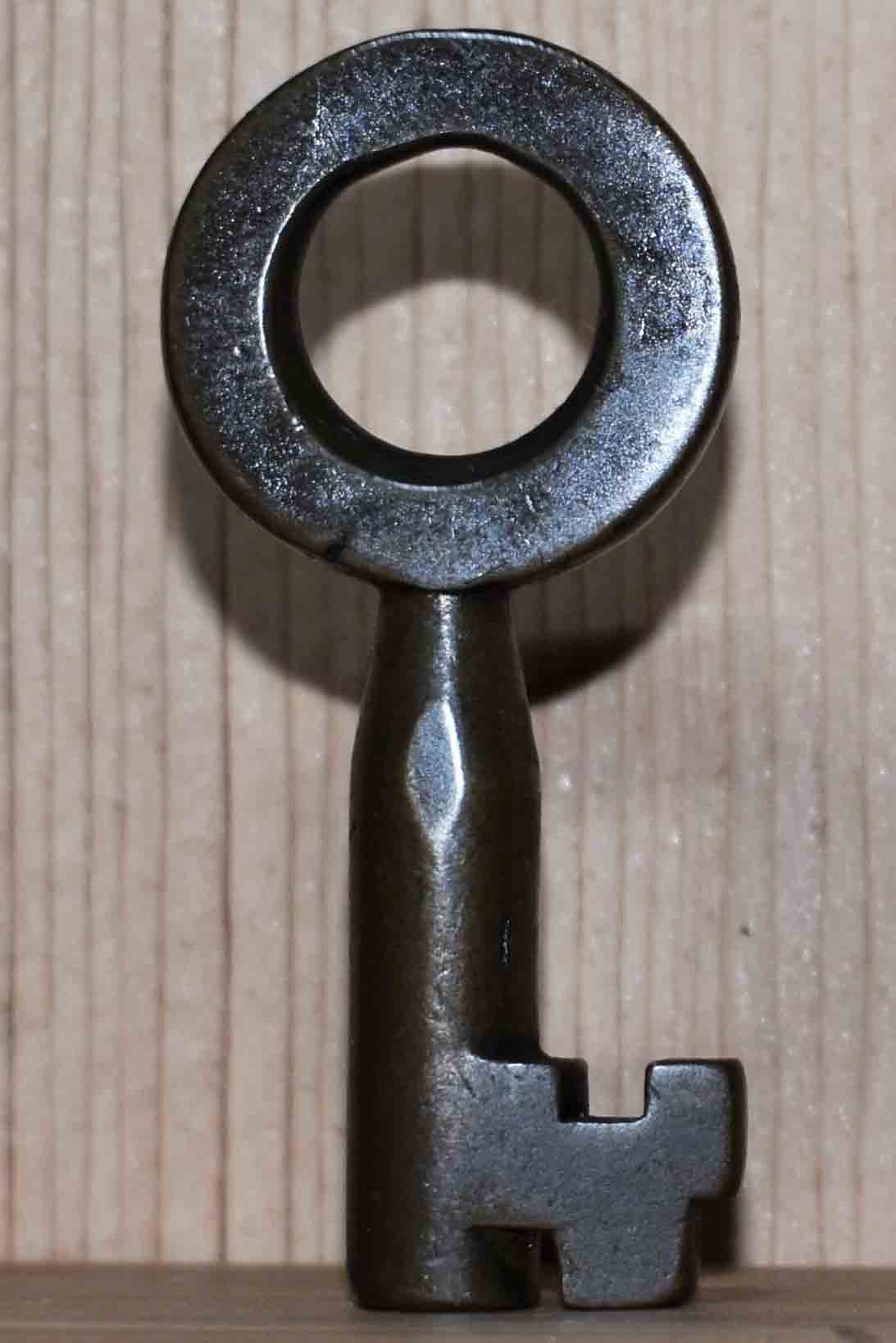

Southern Pacific Co.
Item: 95-S Price: $140.00
Remarks: ca. 1800s
Legacy Central Pacific style cut.
Forged @CP's Sacramento Shop.
Superb stamp marks and dark patina.
Well preserved key.
125 year+ centenarian!
Click on image to view larger picture
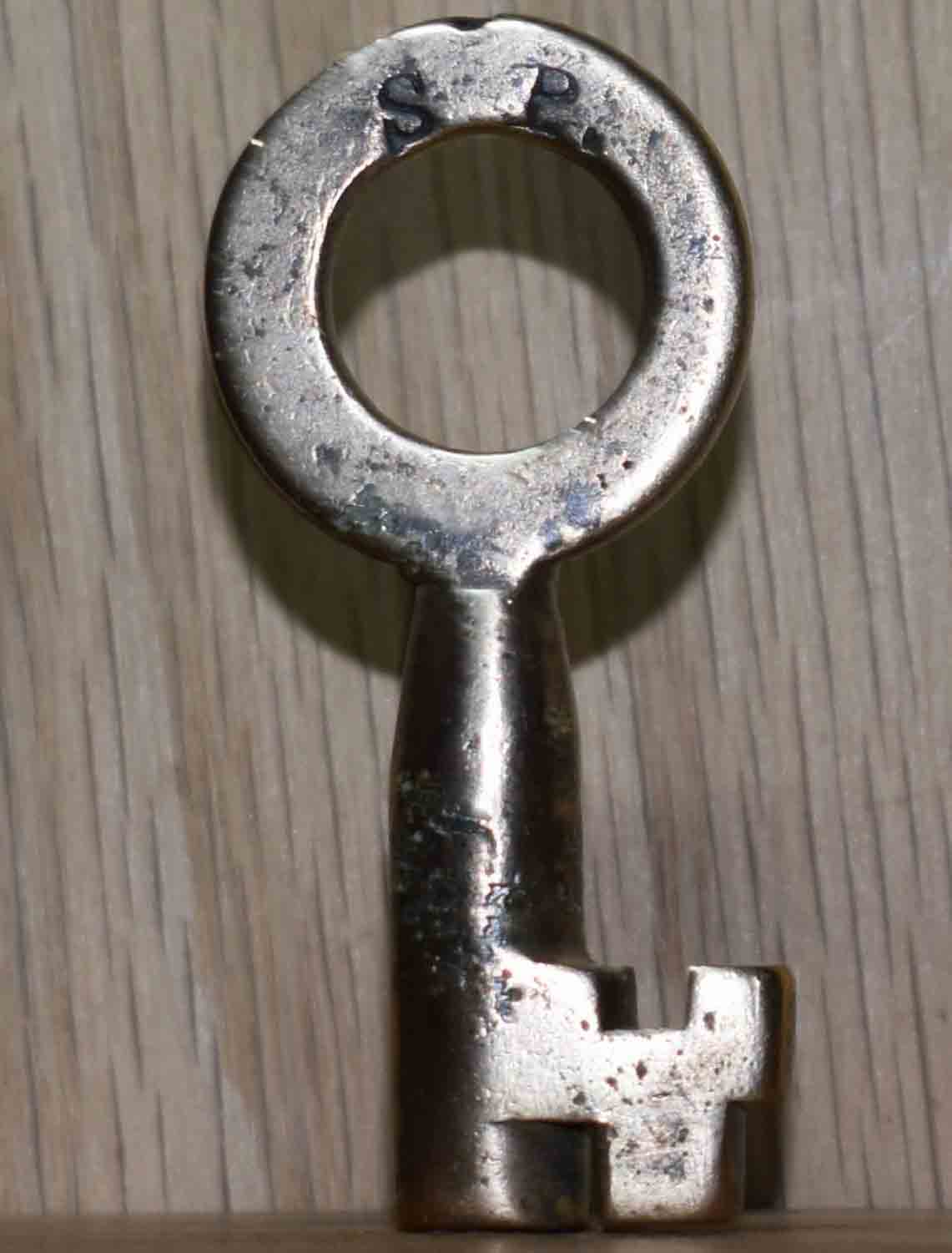

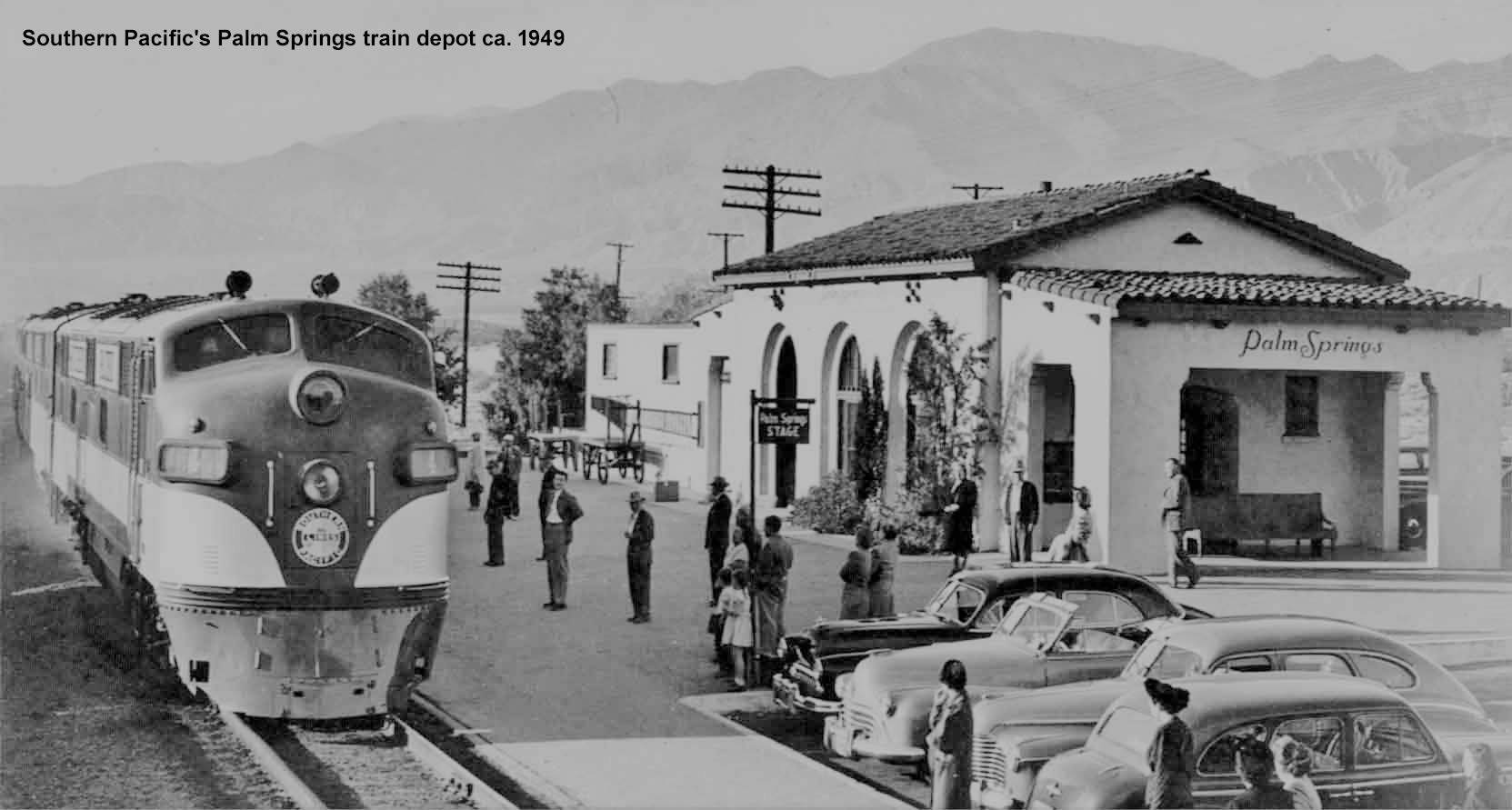
Southern Pacific Co.
Item: 96-S CS-4 (switch) Price: $95.00
Remarks: ca. 1800s
Legacy Central Pacific style cut.
Forged @CP's Sacramento Shop.
125 year+ centenarian!
Click on image to view larger picture

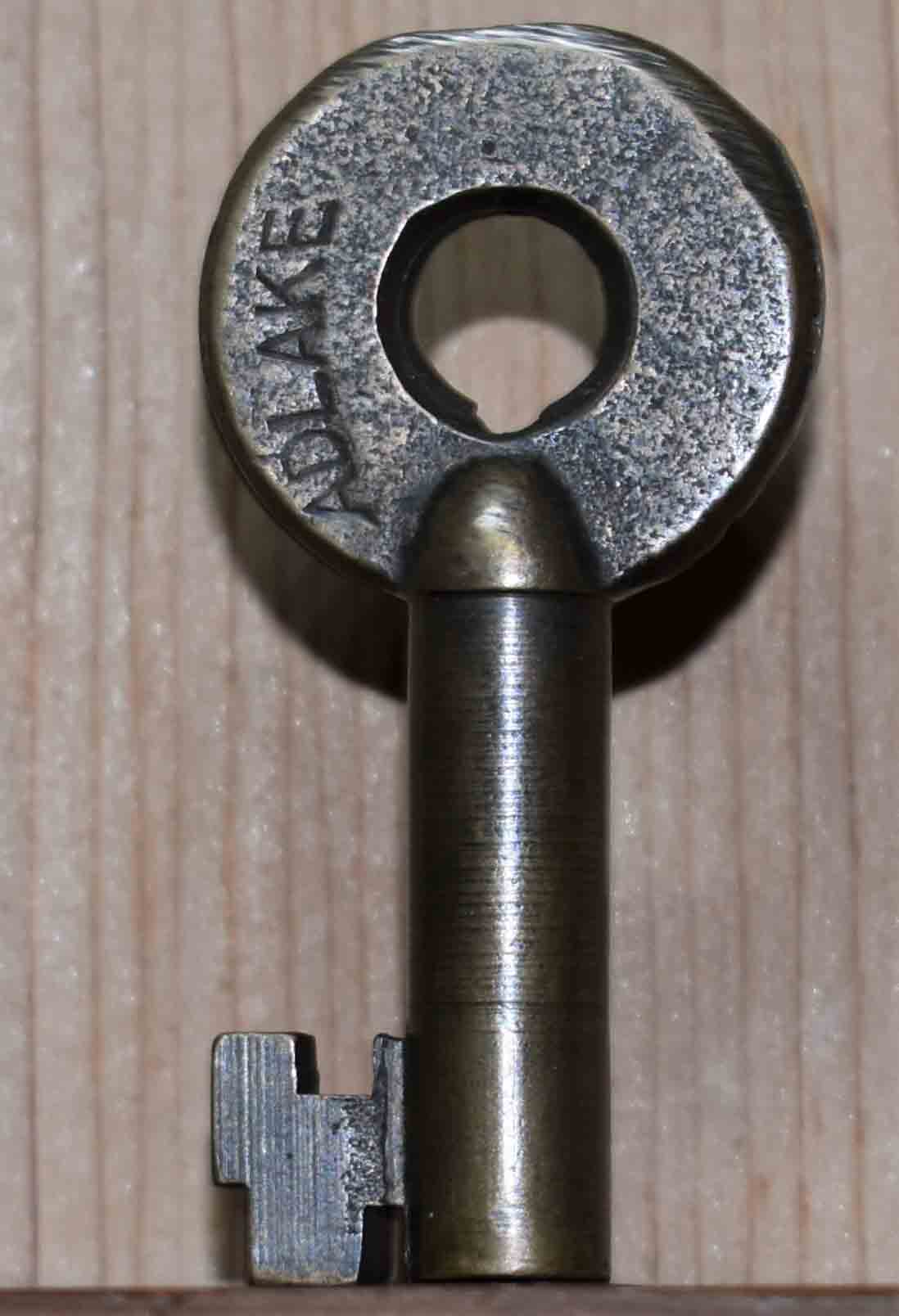

Southern Pacific Lines
Item: 98-S CS-4 (switch) Price: $75.00
Remarks: ca. early/mid-1900s
Forged by the Adlake Co.
Nice stamp marks and two-tone patina.
80 year+ octogenarian!
Click on image to view larger picture
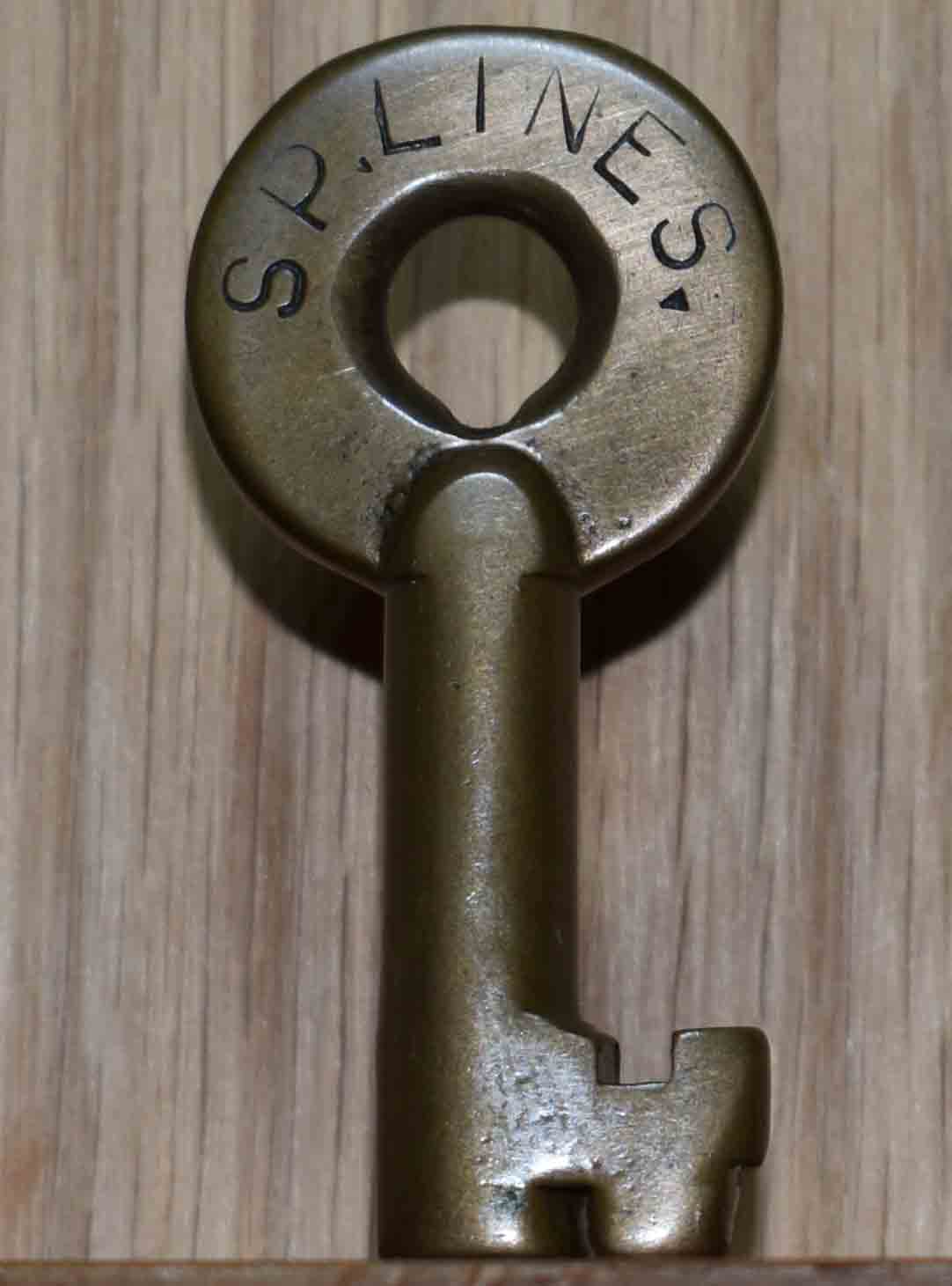
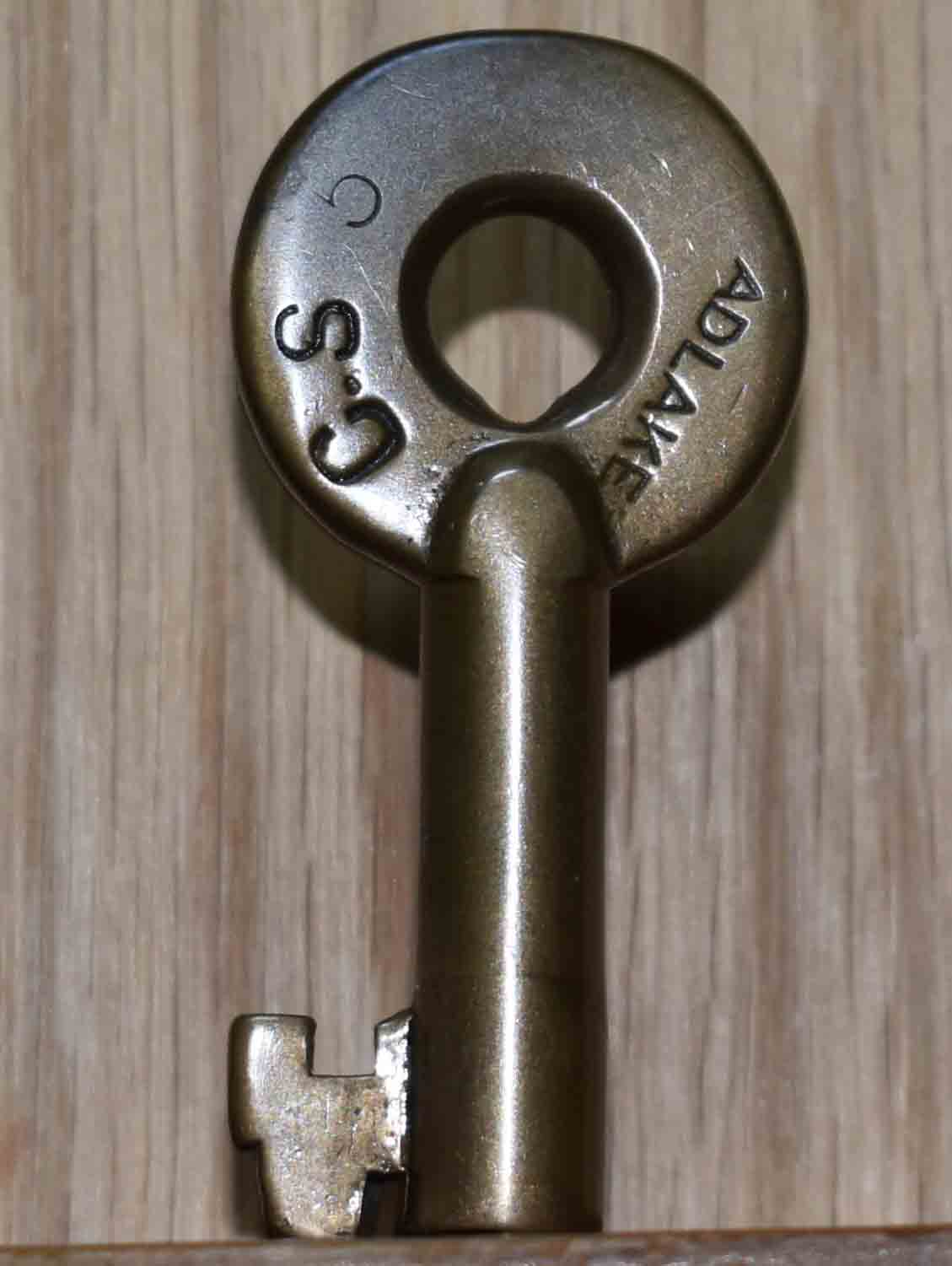
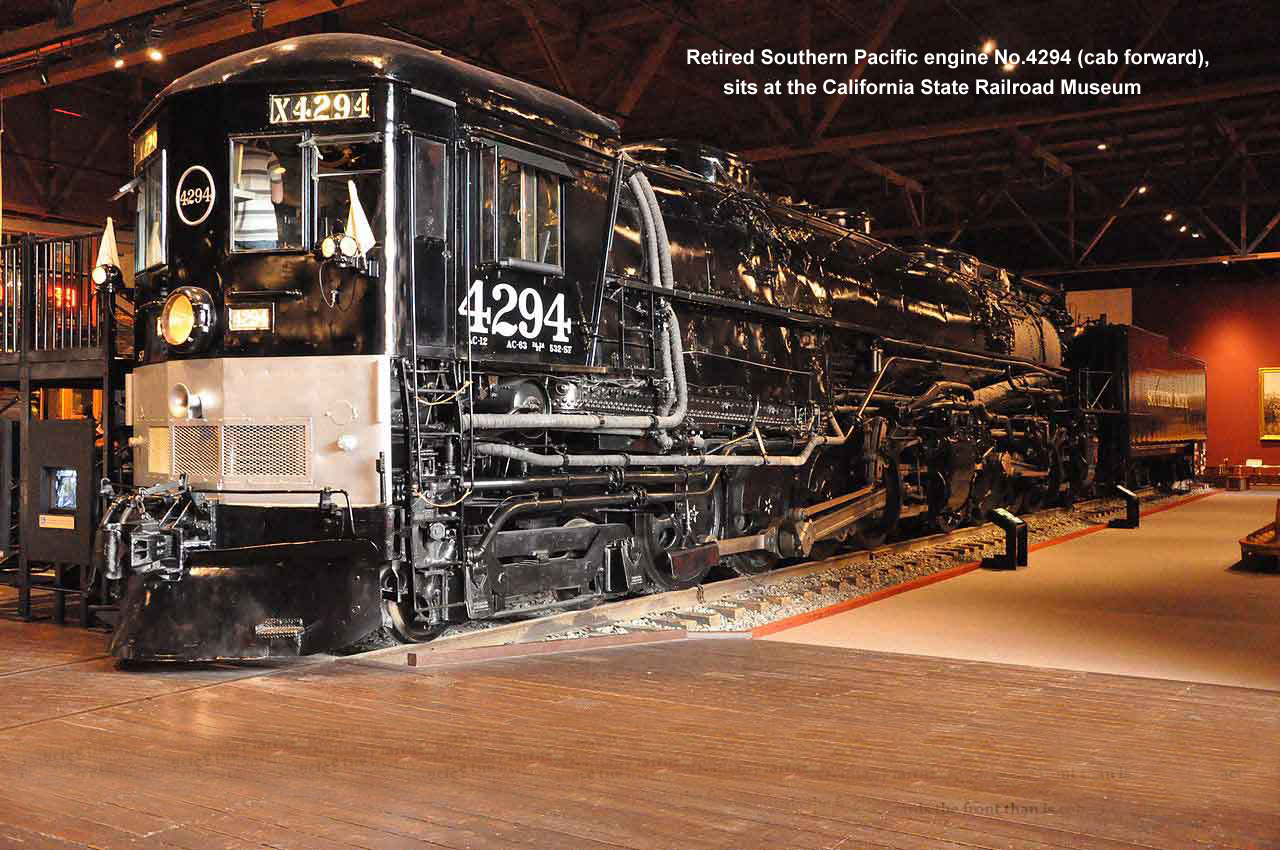

Southern Pacific Lines
Item: 99-S CS-5 (switch) Price: $95.00
Remarks: ca. early/mid-1900s
Forged by the Adlake Co.
Superb stamp marks and gold patina.
80 year+ octogenarian!
Click on image to view larger picture



Southern Pacific Lines
Item: 100-S CS-5 (switch) Price: $65.00
Remarks: ca. early/mid-1900s
Forged by the Adlake Co.
Nice pocket worn lettering and gold patina.
80 year+ octogenarian!
Click on image to view larger picture
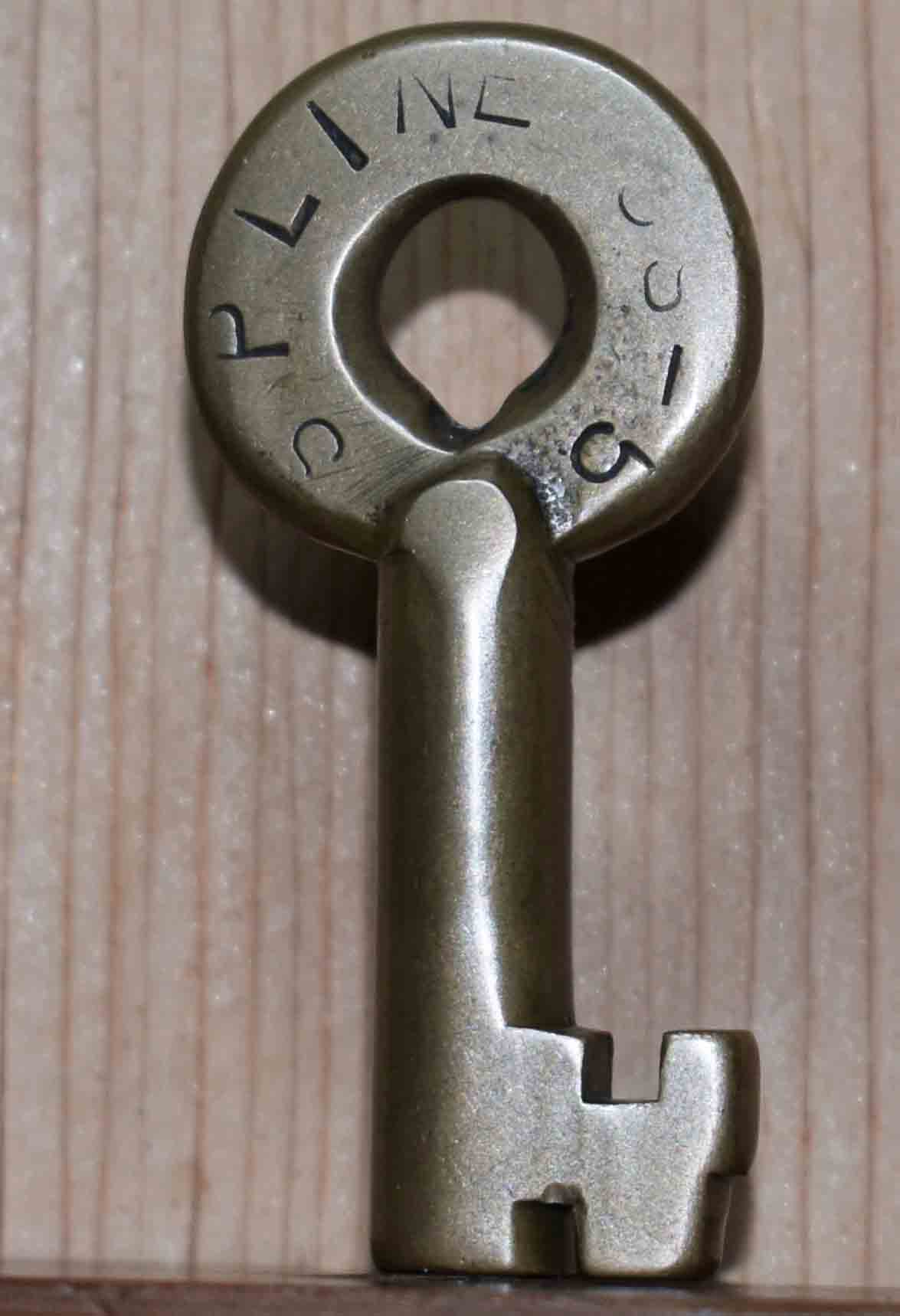
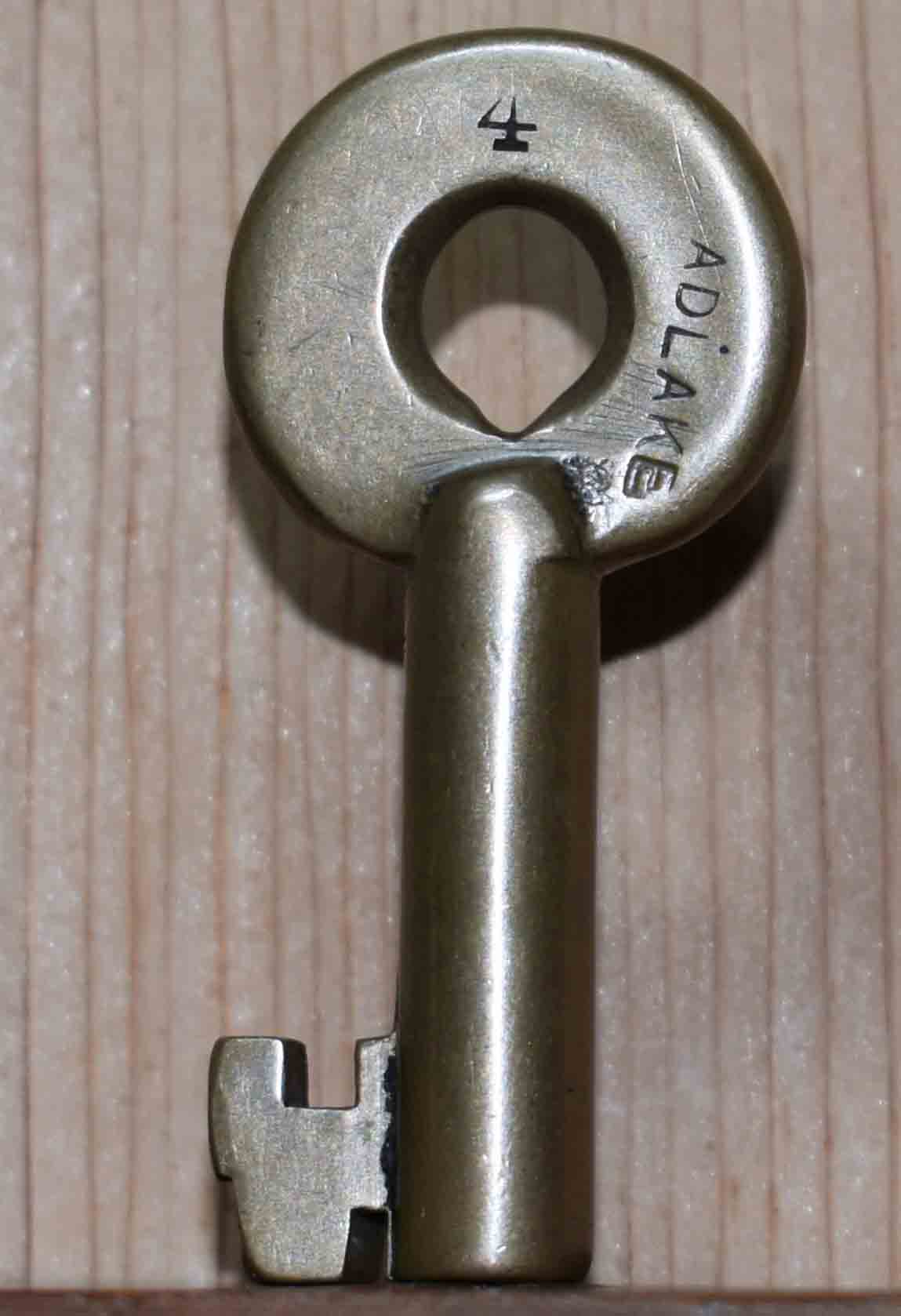

Southern Pacific Lines
Item: 101-S CS-5 (switch) Price: $95.00
Remarks: ca. early/mid-1900s
Forged by the Adlake Co.
Nice pocket worn lettering and gold patina.
80 year+ octogenarian!
Click on image to view larger picture



Southern Pacific Lines
Item: 102-S CS-5 (switch) Price: $95.00
Remarks: ca. early/mid-1900s
Forged by the Adlake Co.
Nice pocket worn lettering and gold patina.
80 year+ octogenarian!
Click on image to view larger picture

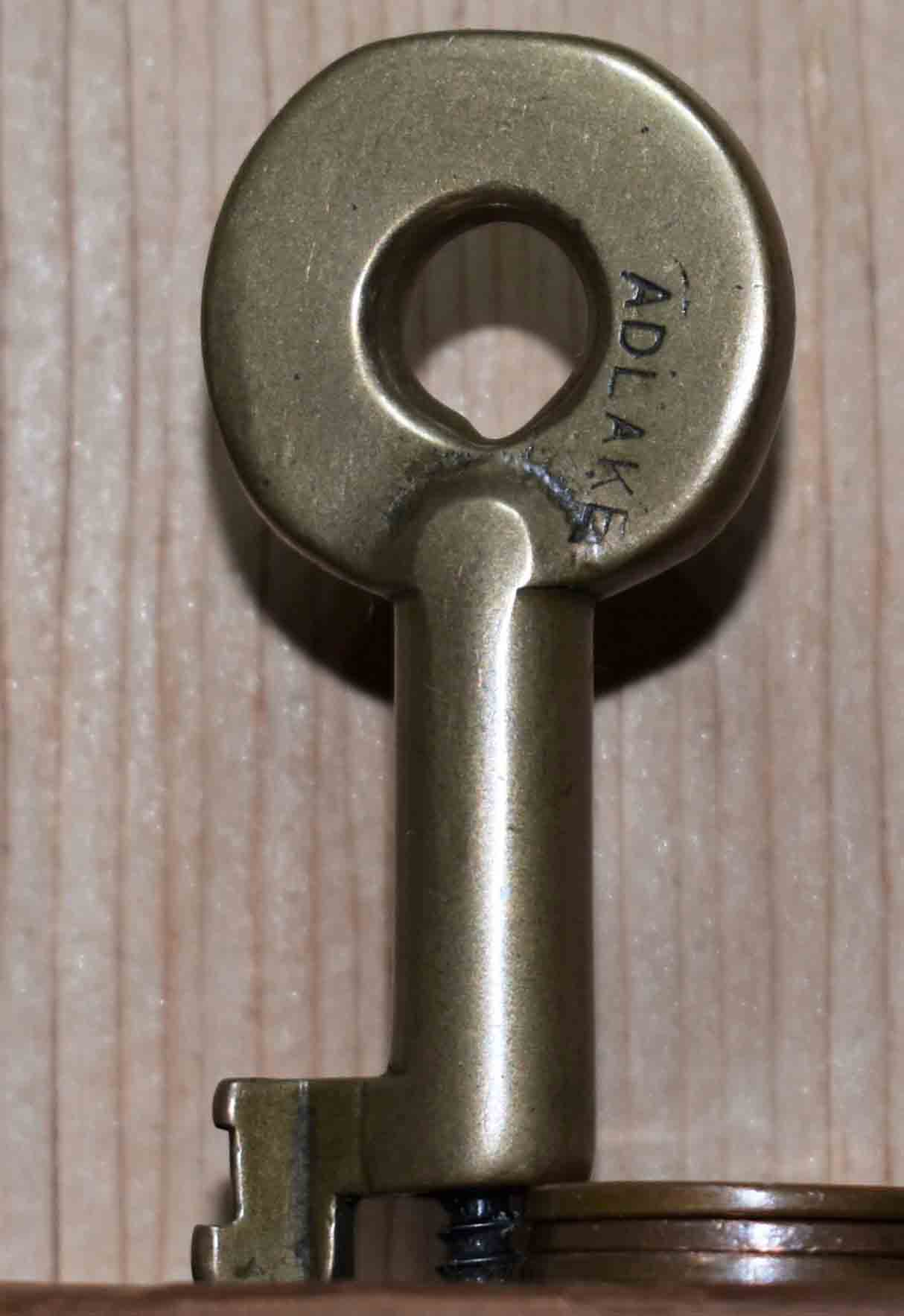
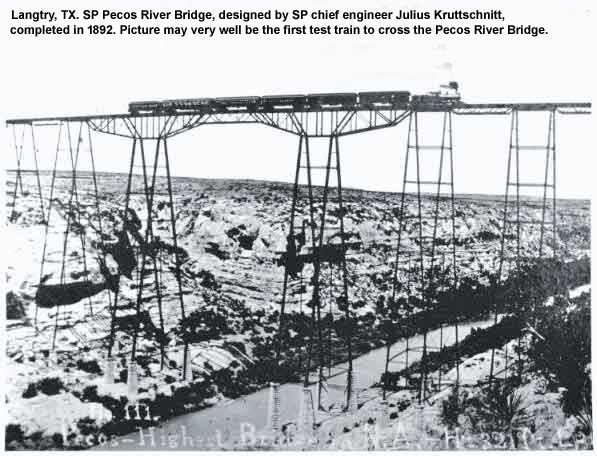


Southern Pacific Lines
Item: 103-S CS-25 (switch) Price: $225.00
Remarks: ca. early/mid-1900s
Forged by the Adlake Co.
Superb stamp marks and two-tone patina.
A hard key to find and a rare 1!
80 year+ octogenarian!
Click on image to view larger picture



Southern Pacific Transportation Co.
Item: 105-S Price: $75.00
Remarks: ca. mid-1900s
Keyline forged.
Very nice stamp marks and gold patina.
Click on image to view larger picture


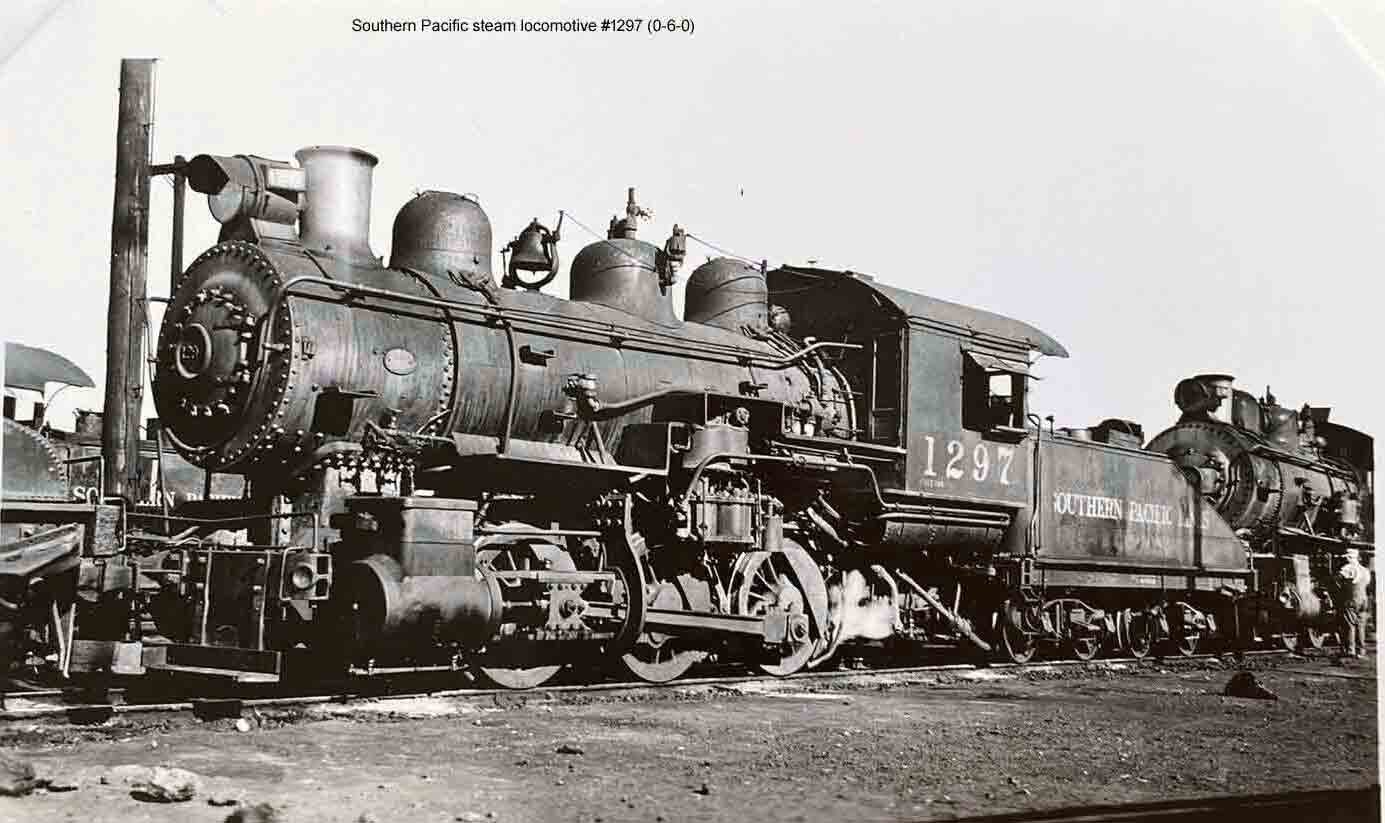
Southern Pacific Co.
Item: 107-S CS-24 (road & bridge) Price: $75.00
Remarks: ca. early 1900s
Forged by the Adams & Westlake Co.
Legible pocket worn stamp marks
and great gold patina.
100 year+ centenarian!
Click on image to view larger picture



Southern Pacific Co.
Item: 108-S CS-24 (road & bridge) Price: $125.00
Remarks: ca. early 1900s
Forged by the Adams & Westlake Co.
Superb stamp marks and great patina.
100 year+ centenarian!
Click on image to view larger picture



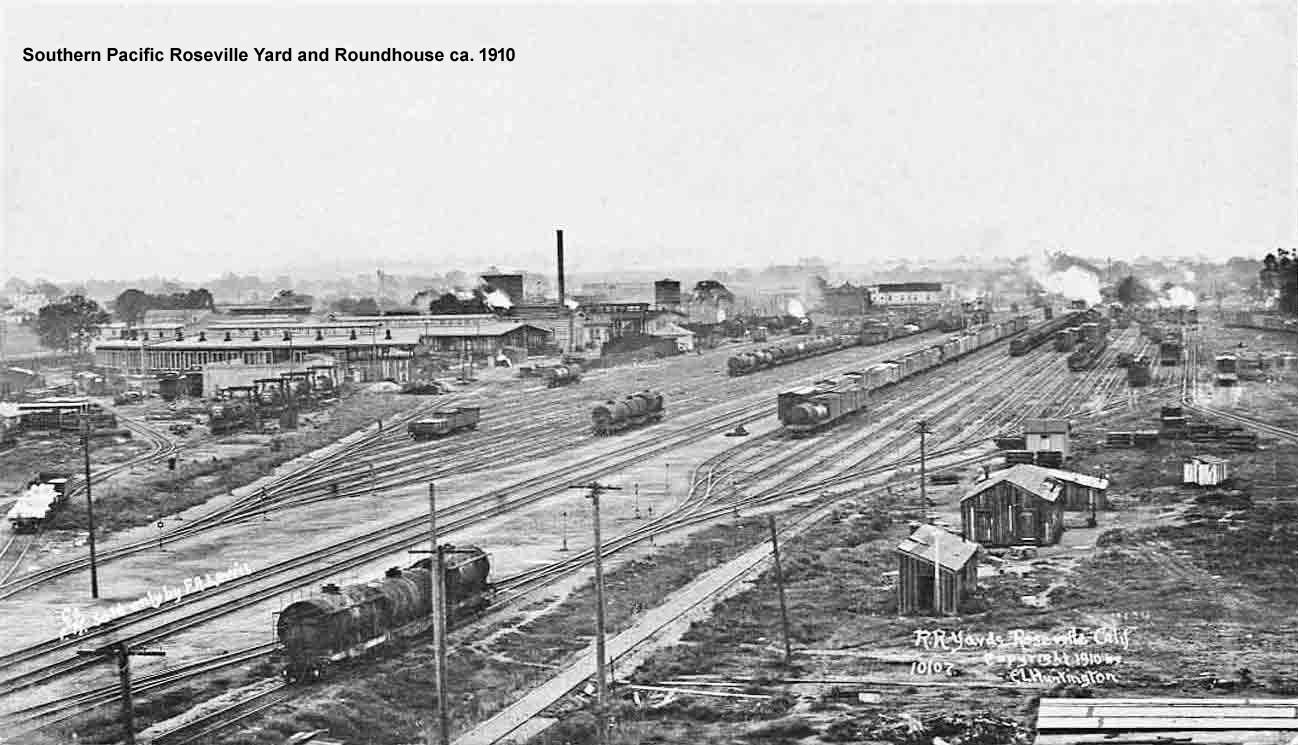
Southern Pacific Co.
Item: 109-S CS-24 (road & bridge) Price: $175.00
Remarks: ca. late 1800s
Forged by the Adams & Westlake Co.
Nice large stamp marks and gold patina.
One of the best A&W foundry stamp marks I've seen.
125 year+ centenarian!
Click on image to view larger picture


 Southern Pacific Co.
Item: 110-S New Listing Price: $100.00
Remarks: ca. late 1800s
Forged by the Adams & Westlake Co.
Nice pocket-worn stamp marks and gold patina.
125 year+ CS-24 R&B centenarian!
Click on image to view larger picture



Southern Pacific Co.
Item: 112-S CS-44 (MofW) Price: $65.00
Remarks: ca. mid-1900s
Forged by the Adlake Co.
Same cut as key below.
Key will work this "SP Special Lock"
Click on image to view larger picture



Southern Pacific Co.
Item: 113-S CS-44 (MofW) Price: $145.00
Remarks: ca. early 1900s
Forged by the Adams & Westlake Co.
Excellent stamp marks and patina.
Key will work this "SP Special Lock"
100 year+ centenarian!
Click on image to view larger picture
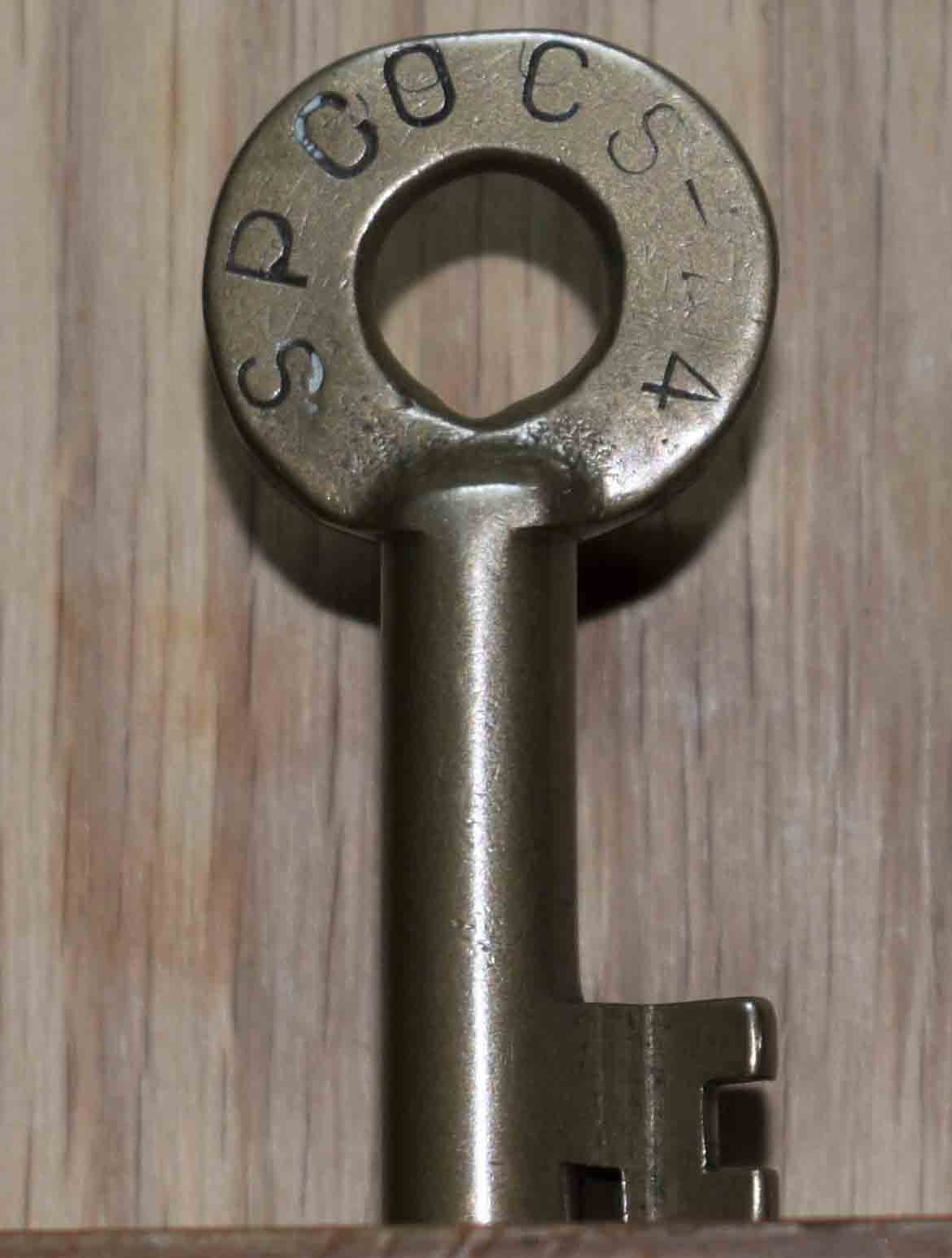

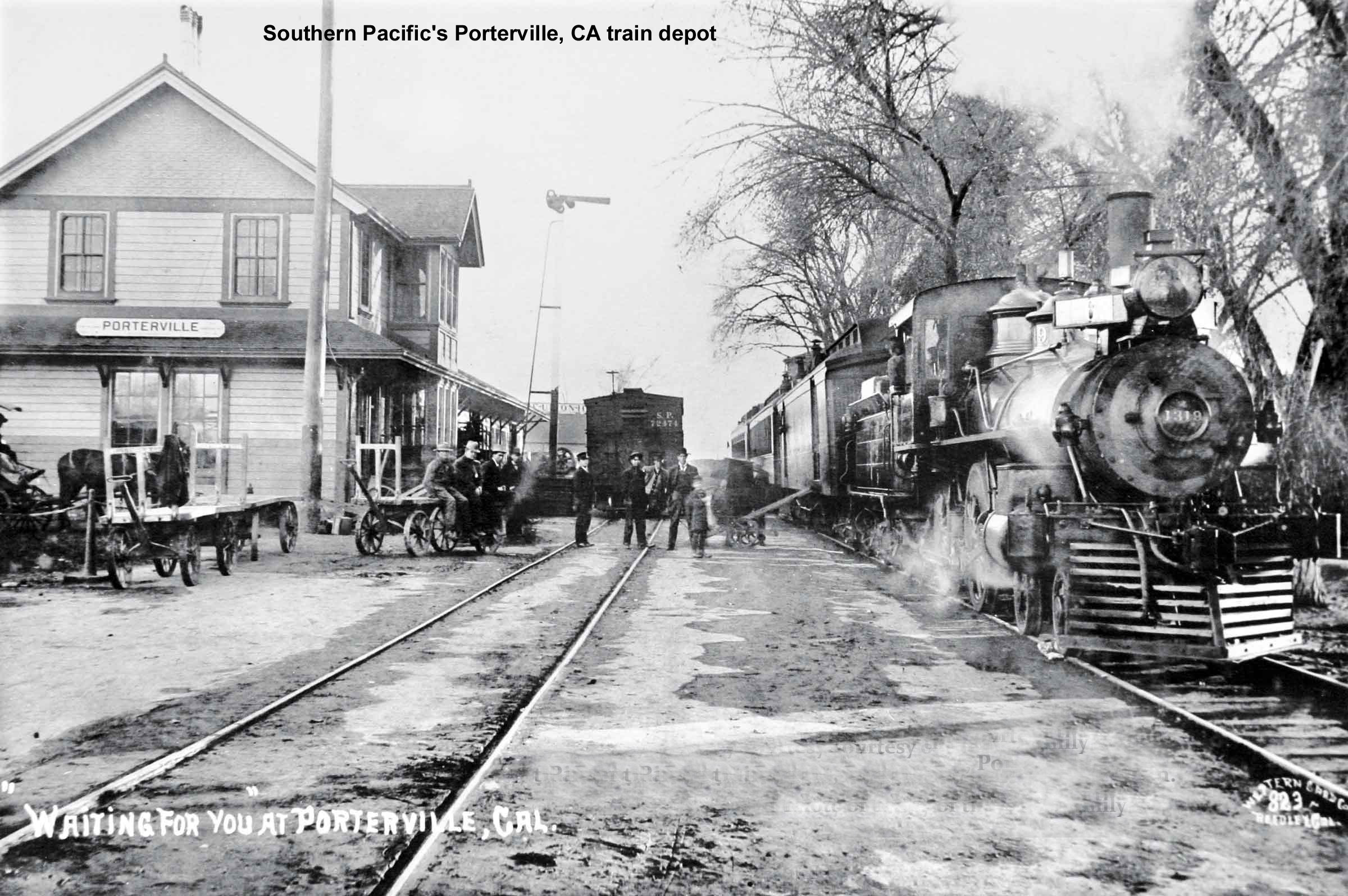 < --- past & present --- >
< --- past & present --- >

Southern Pacific Co.
Item: 114-S CS-44 (MofW) Price: $65.00
Remarks: ca. early/mid-1900s
Forged by the Adlake Co.
Very nice pocket worn lettering and gold patina.
Same cut as "Special" key above.
Key will work this "SP Special Lock"
Click on image to view larger picture



Southern Pacific Co.
Item: 115-S CS-44 (MofW) Price: $65.00
Remarks: ca. early/mid-1900s
Forged by the Adlake Co.
Superb stamp marks and gold patina.
Same cut as "Special" key above.
Key will work this "SP Special Lock"
Click on image to view larger picture



Southern Pacific Co.
Item: 117-S SP Co. (No.72) Price: $165.00
Remarks: ca. early 1900s
Forged by the Adams & Westlake Co.
Superb stamp marks and two-tone patina. Key listed
in the "American Railway's Switch Key Directory."
Legacy bit style used during the Central Pacific days.
The SP No.72 is the style-not the serial number.
100 year+ centenarian!
Click on image to view larger picture


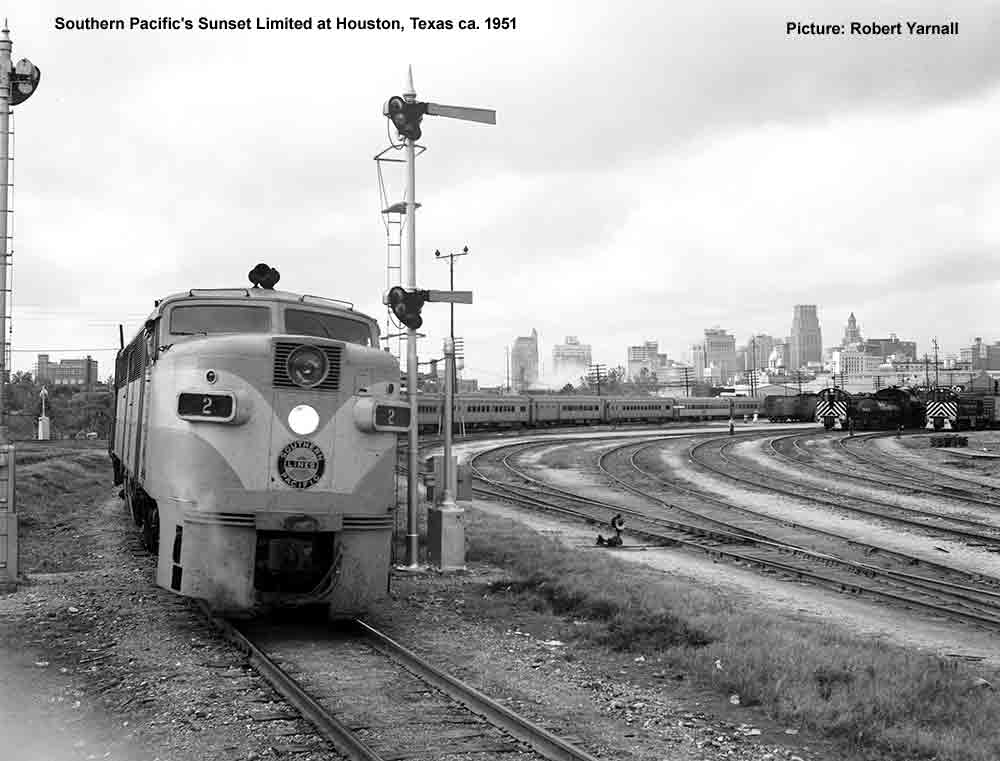
Southern Pacific Co.
Item: 118-S SP Co. (No.72) Price: $100.00
Remarks: ca. late 1800s
Sacramento Shop-forged key.
The stamped No.72 is the style -
not the serial number.
Older relic than SP key above.
Click on image to view larger picture



Southern Pacific Railroad
Item: 120-S New Listing Price: $100.00
Remarks: ca. early 1900s
Forged by the Adlake Co.
Deep stamp marks and nice gold patina.
Click on image to view larger picture
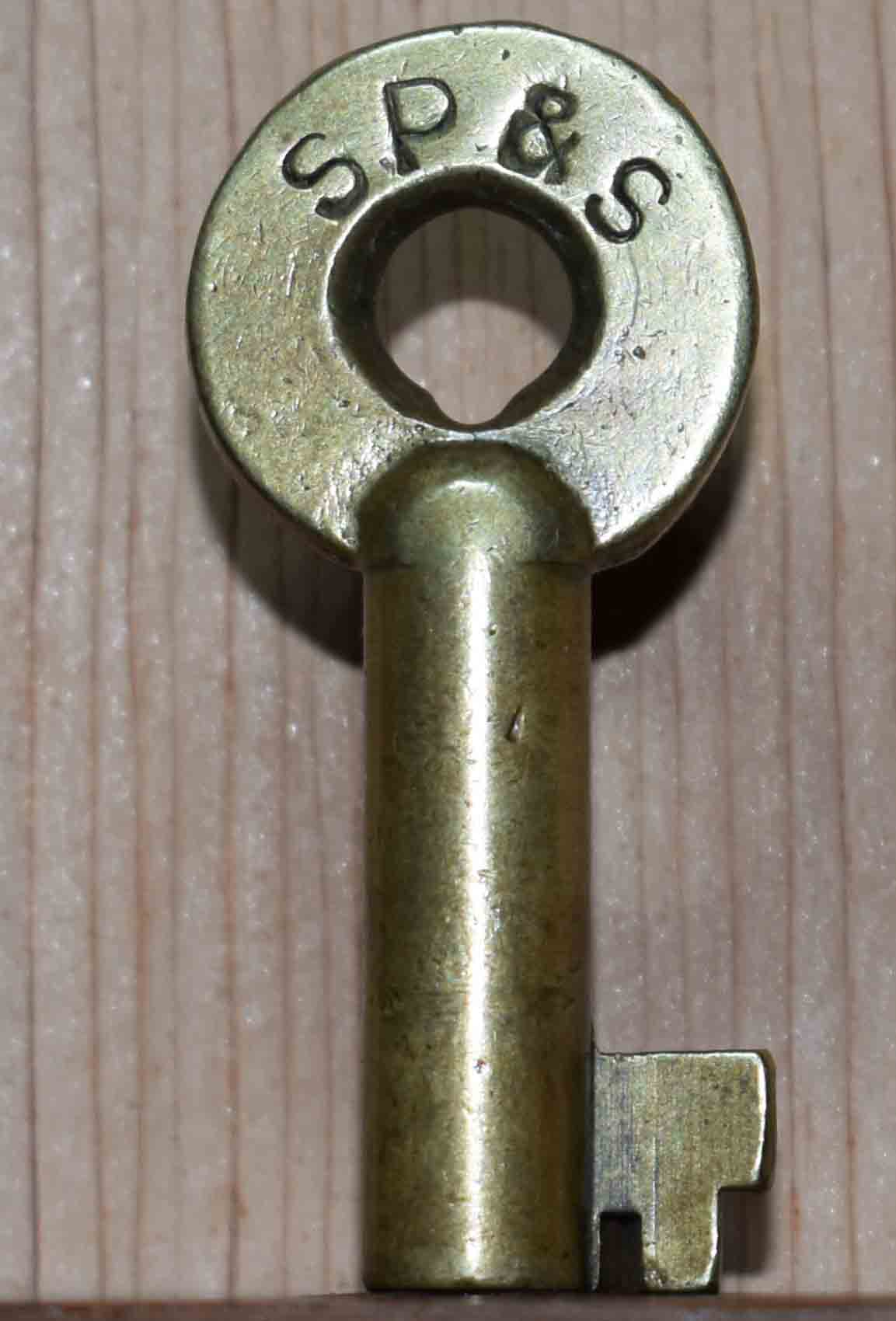
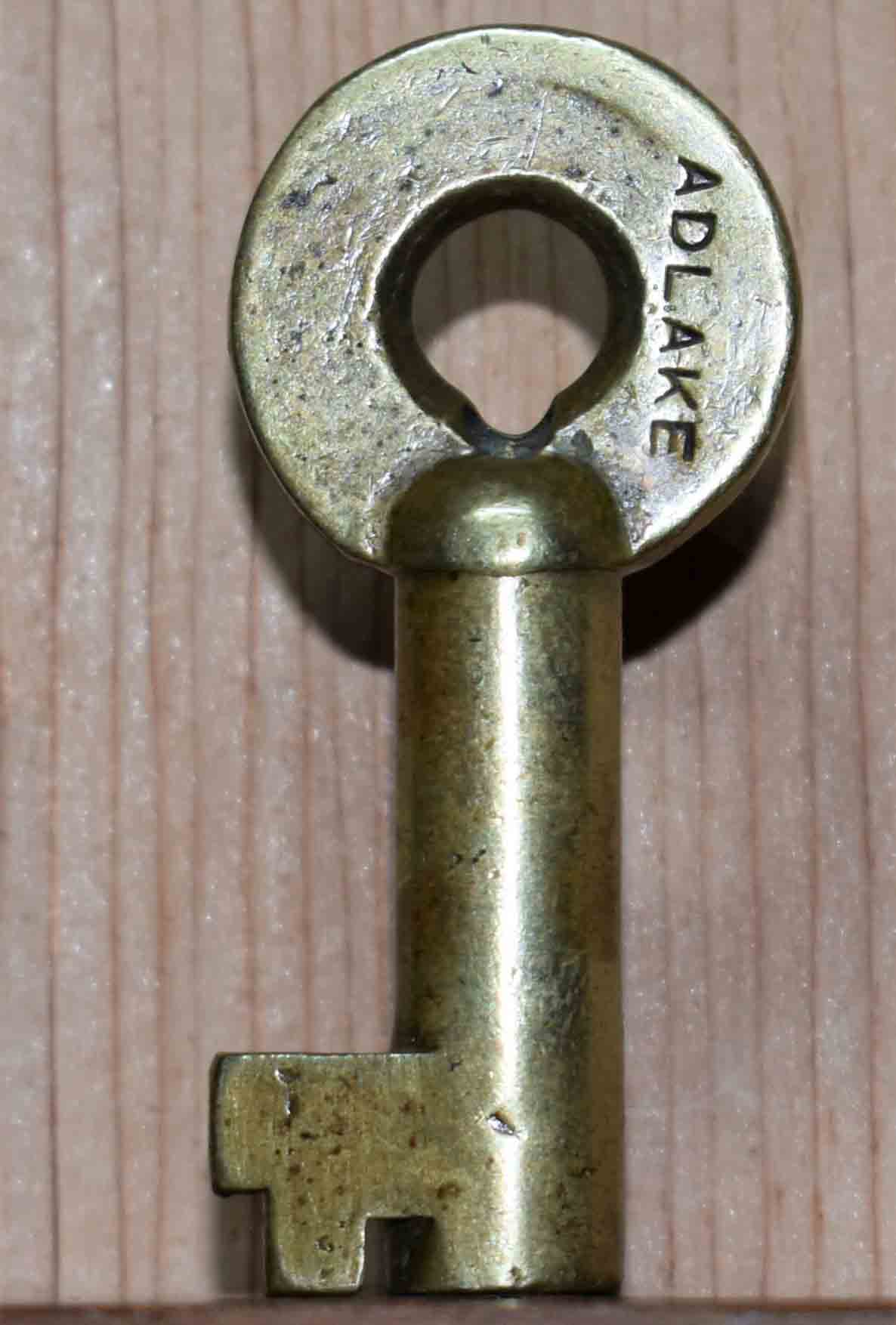
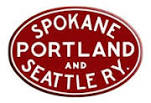
Spokane, Portland & Seattle Railroad
Item: 124-S Price: $95.00
Remarks: ca. mid-1900s
Forged by the Adlake Co.
Nice stamp marks and two-tone gold patina.
History
The Spokane, Portland & Seattle Railway (SP&S) was a United States-based railroad incorporated in 1905. It was a joint venture by the Great Northern Railway and the Northern Pacific Railway to build a railroad along the north bank of the Columbia River. Remnants of the line are currently operated by BNSF Railway.
The railroad was chartered in 1905 by James J. Hill to connect the two transcontinental railroads owned by him, the Northern Pacific (NP) and Great Northern (GN), to Portland, Oregon from Spokane, Washington, to gain a portion of the lumber trade in Oregon, a business then dominated by E.H. Harriman's Union Pacific and Southern Pacific railroads. In January 1908 "Spokane" was added to the railroad's name, making it the Spokane, Portland & Seattle Railway.
Click on image to view larger picture
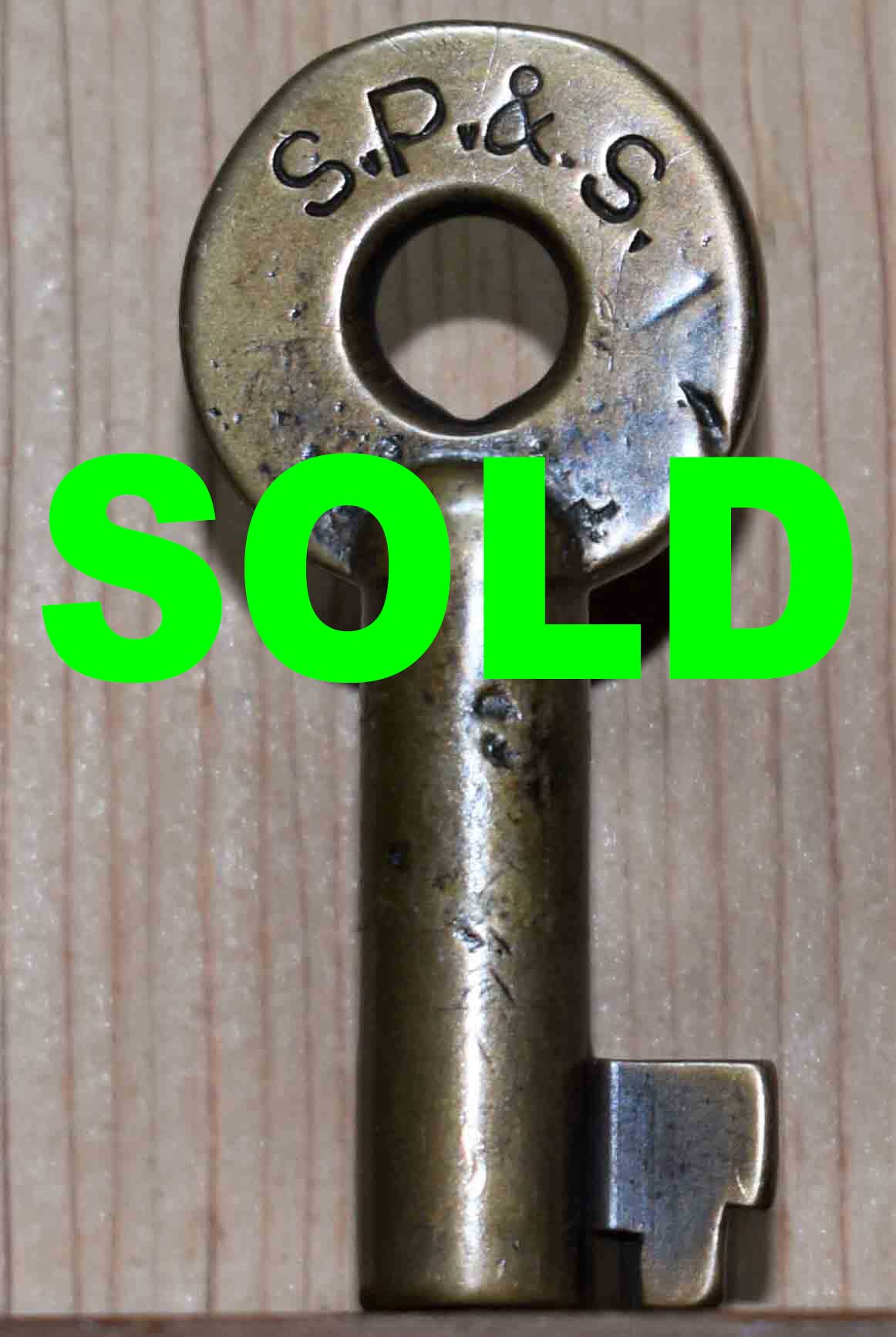


Spokane, Portland & Seattle Railroad
Item: 125-S Price: $95.00
Remarks: ca. mid-1900s
Forged by the Adlake Co.
Nice stamp marks and two-tone patina.
History - continued from above
During World War II the SP&S carried war materials to the Pacific Theatre; new industries located along the Columbia River, taking advantage of cheap electricity from hydroelectric dams on the river. New industries served by the SP&S included aluminum plants, sawmills, chemical factories and grain elevators.
Click on image to view larger picture


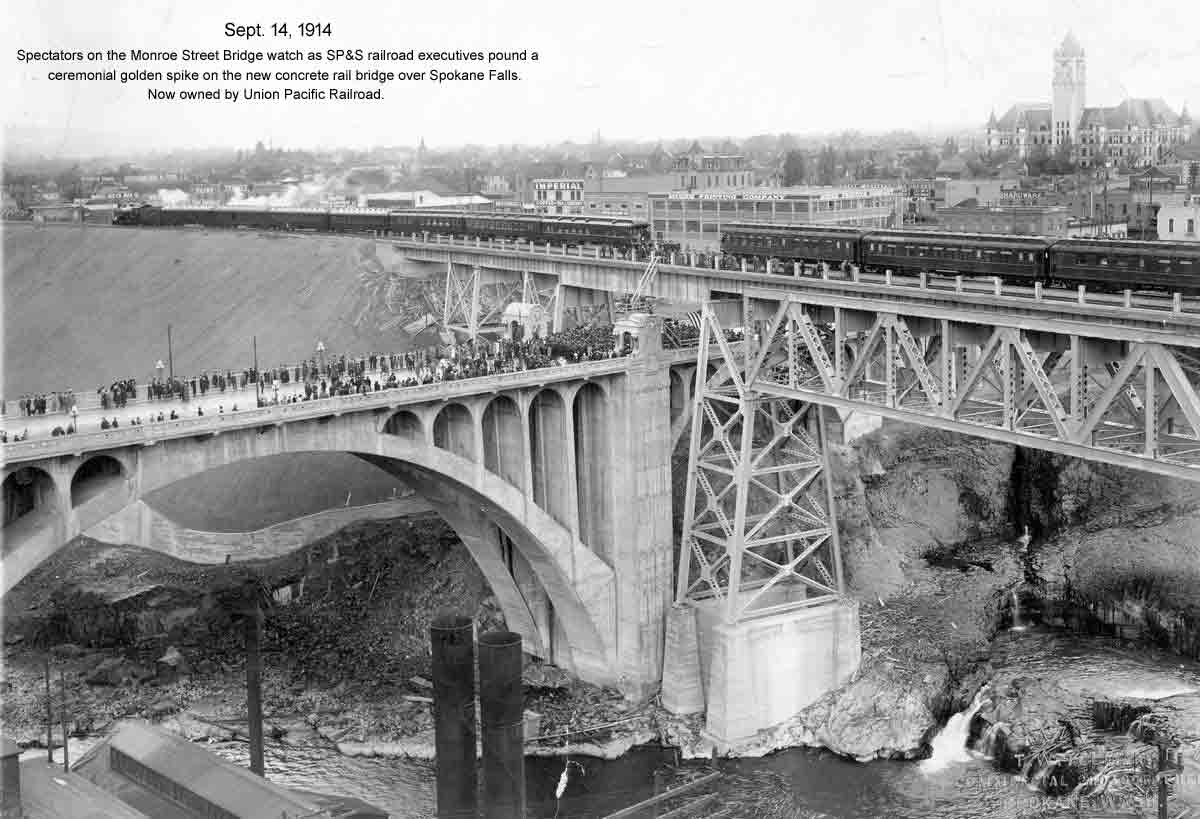
Spokane, Portland & Seattle Railroad
Item: 126-S Price: $95.00
Remarks: ca. mid-1900s
Forged by the Adlake Co.
Nice stamp marks and two-tone patina.
History - continued from above
In 1954 an SP&S train derailed after hitting a rockslide on the route to Bend, Oregon. Part of the train landed in the Deschutes River, including a boxcar, which landed in a rapid that was later named "Boxcar Rapids" after the incident, which killed all crew members.
Click on image to view larger picture
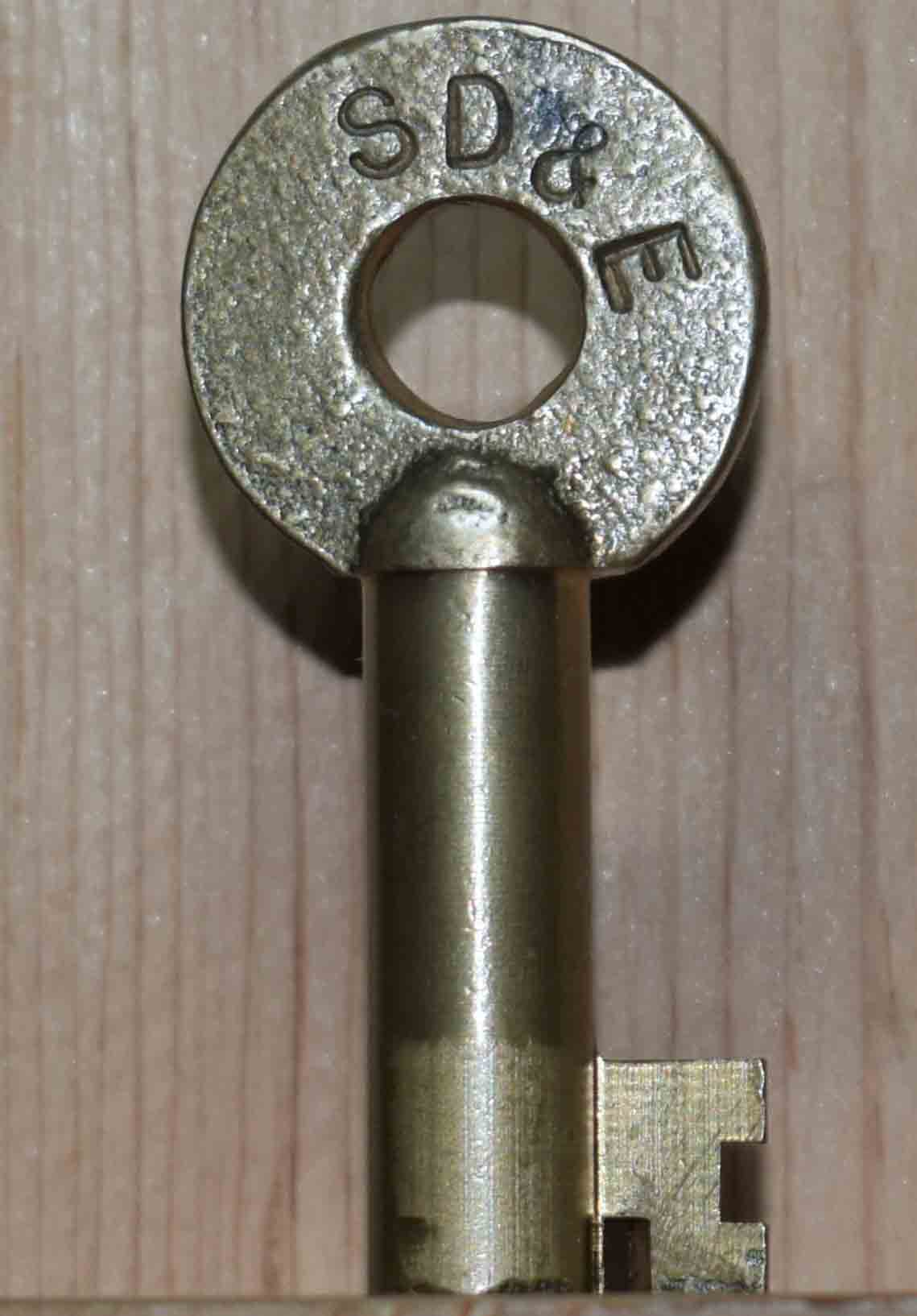
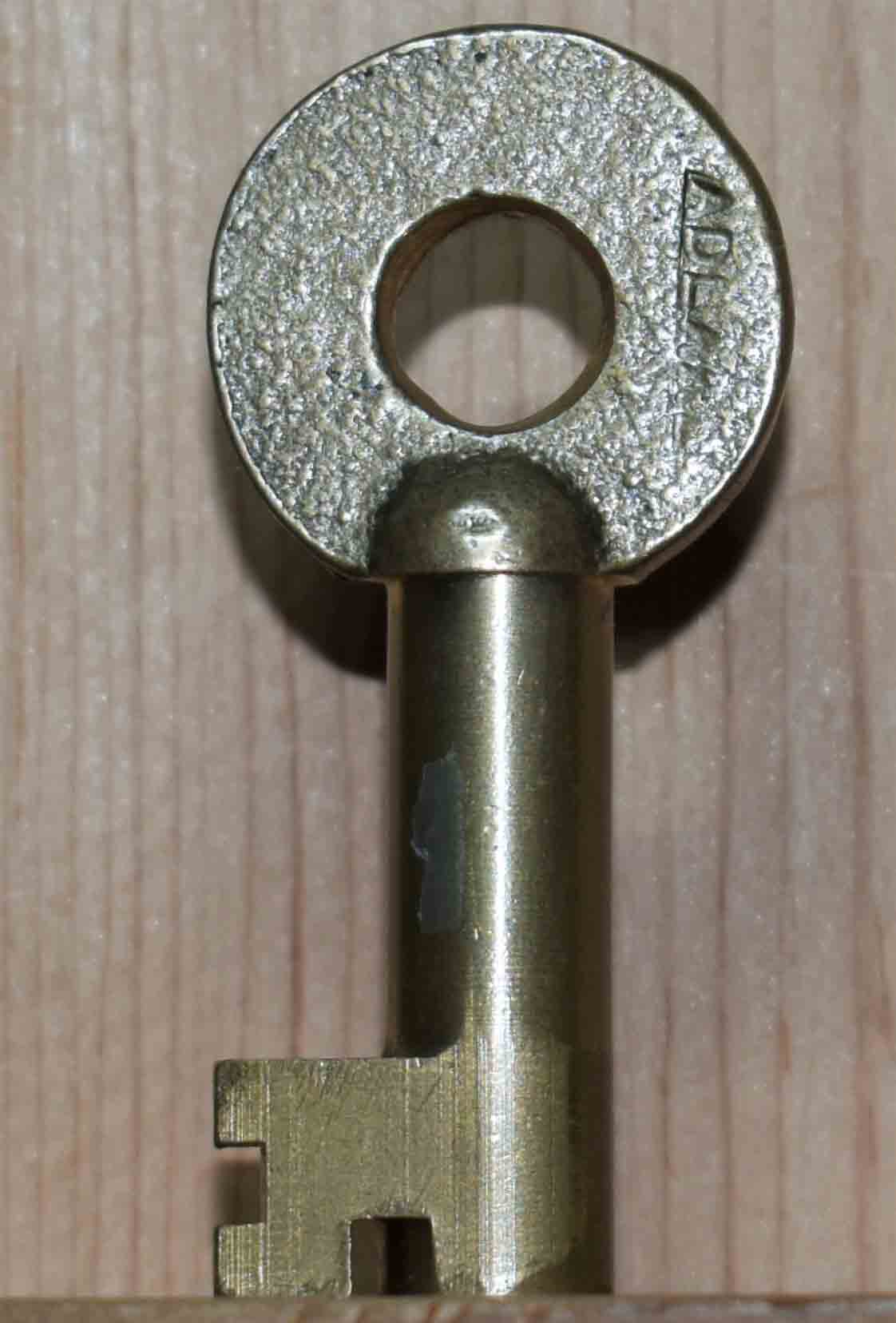


Sterling, Dixon & Eastern Railway
Item: 128-S Price: $125.00
Remarks: ca. pre-1925
Forged by the Adlake Co.
Nice stamp marks and bright gold patina.
100 year+ centenarian!
History
The Sterling Dixon & Eastern Railway was incorporated with $300,000 of capital on August 17, 1902. The company was backed by John I. Beggs, president of the Milwaukee transport company, and Henry C. Higgins, an experienced electric railway promoter. Both men were impressed with the rapid growth of the Sterling-Dixon area, and they felt that a railway could be built and operated profitably. The company intended to operate an interurban between Sterling and Dixon, and local streetcar service in both cities. Although Mr. Higgins was the company's first president, Mr. Beggs soon replaced him and served until 1911.
Freight service on the interurban began operating in June of 1904, which consisted mainly of local merchandise and milk. Platforms were constructed along the line for farmers to load and unload milk bound for the Borden plant at the northwest edge of Dixon. Mail pouches were also handled between the interurban terminals. A spur was constructed to a gravel pit near Central Park, about a mile east of Prairieville; trains operated on the line mainly to obtain ballast for the system.
As with all inter-urbans, the automobile and trucks took over as the mode of transportation. After struggling for years, the railroad was no longer profitable. The company applied to the Illinois Commerce Commission to abandon all service in July of 1925. After a hearing in Dixon, permission was granted on September 17 for the company to end service. All interurban and streetcar service stopped on October 5, with buses of the Northern Illinois Service Corporation taking over between Sterling and Dixon. All trackage and overhead was soon dismantled for scrap, and the equipment scrapped, with the INU retaining the interurban right-of-way for its transmission line to Sterling.
Click on image to view larger picture

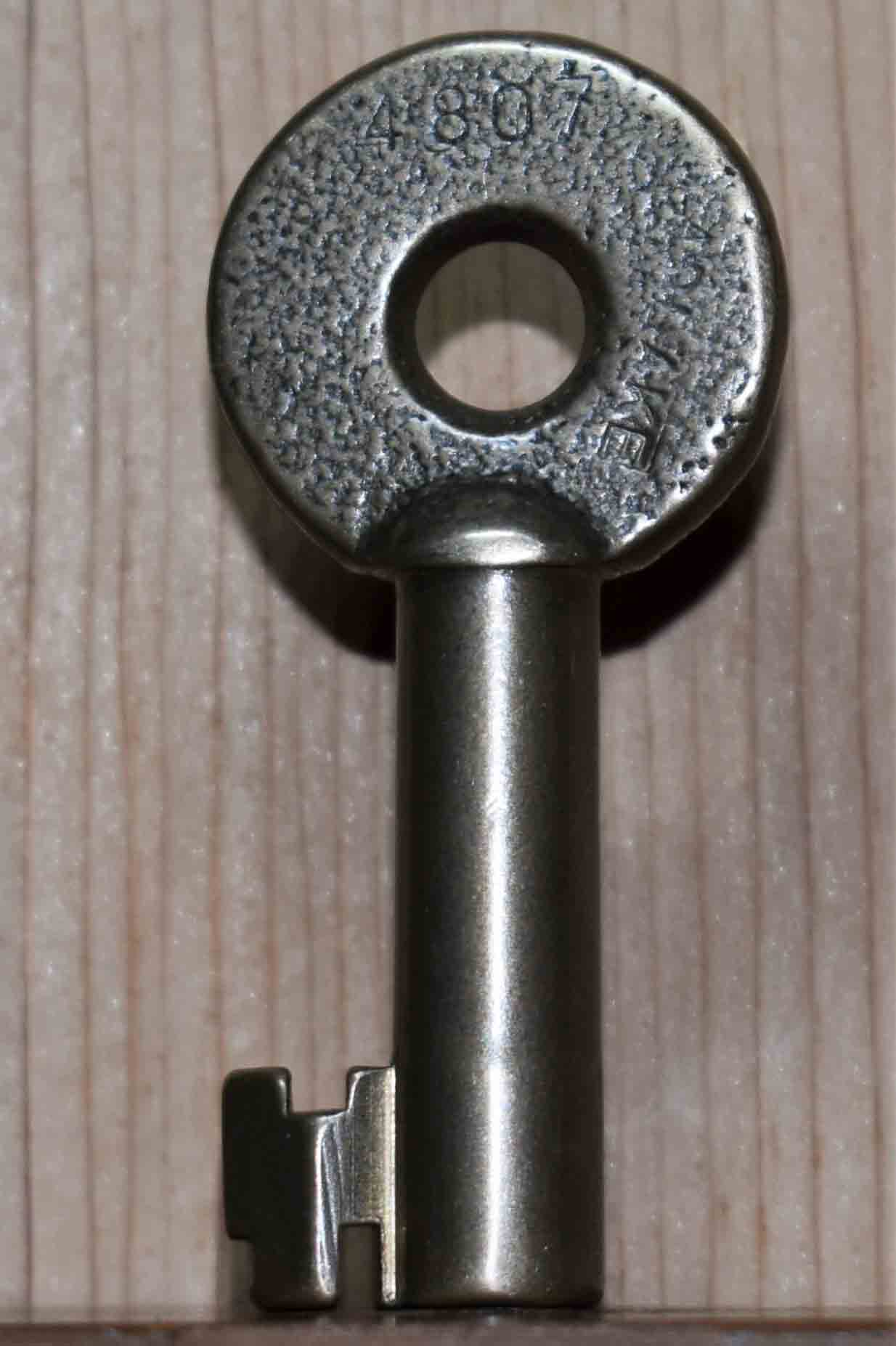
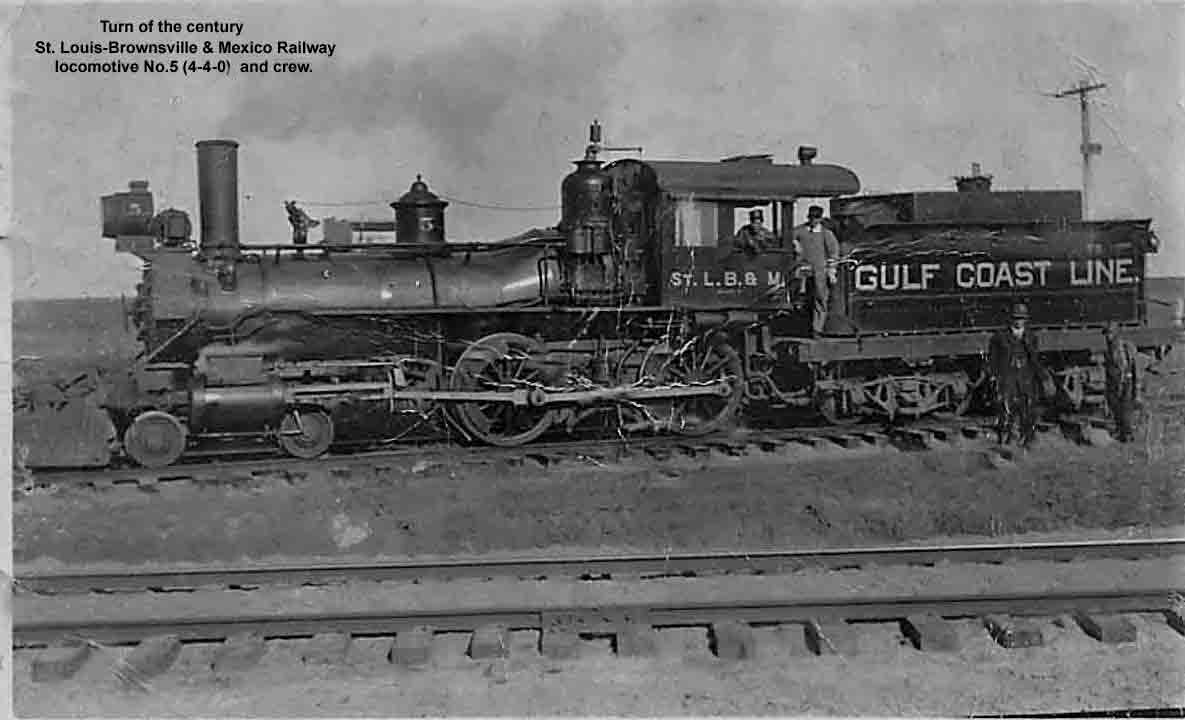
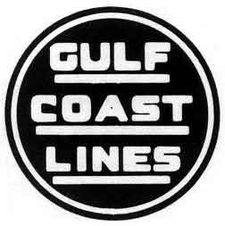

St. Louis, Brownsville & Mexico Railway
Item: 130-S Price: $145.00 $125.00
Remarks: ca. mid-1900s
Forged by the Adlake Co.
Nice stamp marks and gold patina.
Given the moniker, "The Brownie."
History
Chartered on June 6, 1903, the St. Louis, Brownsville & Mexico Railway (also known as the Brownie) was a 200-mile U.S. railroad that operated from Brownsville, Texas, to Gulf Coast Junction in Houston, Texas. It served numerous towns and cities along its routes and operated a rail bridge between Brownsville and Matamoros, Tamaulipas, in junction with the Mexican government. The Brownie connected the citizens of Brownsville to nearby Corpus Christi for the first time on land rather than using water transportation.
After 13 years of trusteeship - the longest of its kind in North American history - the StLB&M (as well as the other Gulf Coast Lines subsidiaries) were reorganized and merged away into the Missouri Pacific (under the presidency of Paul J. Neff) on March 1, 1956, when the United States District Court of St. Louis terminated the trusteeship. Shortly after the merger, the name of 'StLB&M' and Gulf Coast Lines quickly disappeared as various feeder/branch lines were aggressively being abandoned.
Click on image to view larger picture

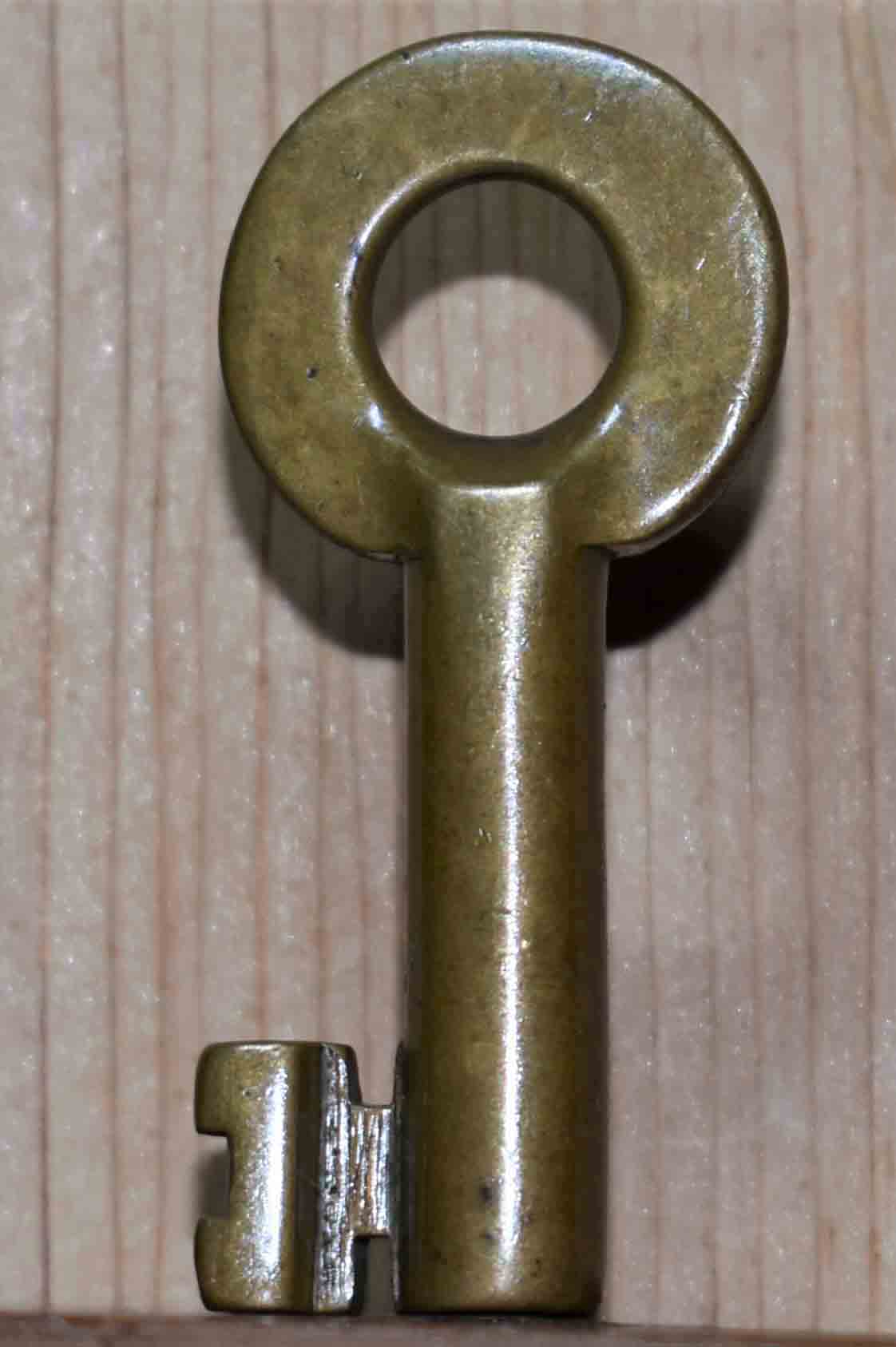
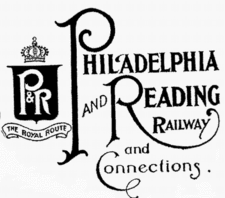
Stony Creek Railroad
Item: 132-S Price: $145.00
Remarks: ca. early 1900s
Superb serif stamp marks and patina.
100 year+ centenarian and a rare beauty!
History
The Stony Creek Railroad was incorporated on April 14, 1868, to build south from the North Pennsylvania Railroad main line at Lansdale along Stony Creek to Norristown, Pennsylvania. The line, 10.3 miles (16.6 km) long, opened on December 30, 1873, under the control of the North Pennsylvania. Its Norristown station was located at Main and Markley, the present site of Norristown-Main Street.
The Stony Creek Railroad was one of twelve railroads merged into the Reading Company effective December 31, 1945. On the Reading's final bankruptcy in 1976 the branch was conveyed to SEPTA, with Conrail retaining trackage rights. Today, CSX Transportation, Norfolk Southern Railway, and the Pennsylvania Northeastern Railroad have trackage rights on the branch.
Click on image to view larger picture
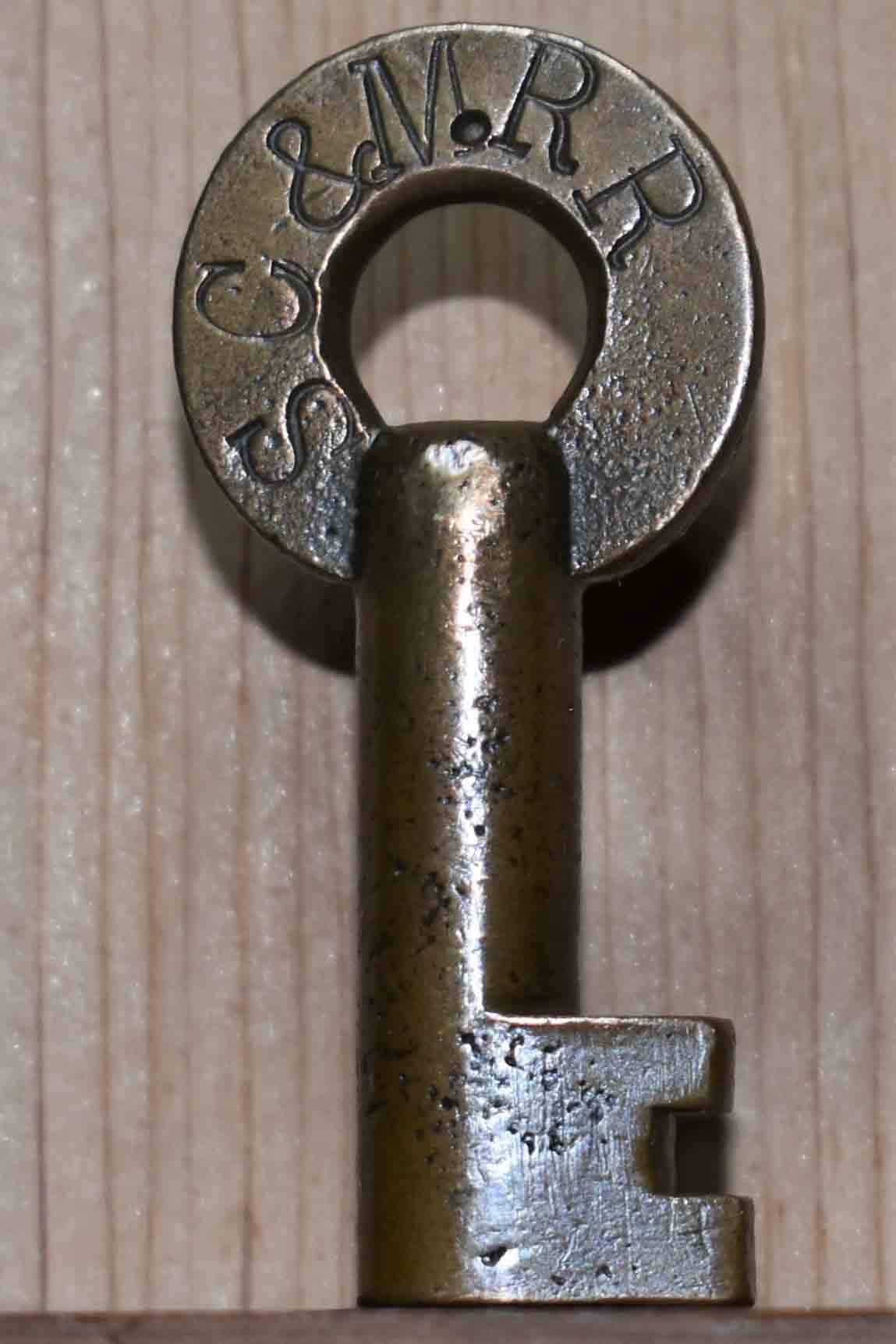


Strouds Creek & Muddlety Railroad
Item: 134-S West Virginia short line Price: $115.00
Remarks: chartered in 1905
Superb serif stamp marks and copper patina.
80 year+ octogenarian!
History
Located in southeastern West Virginia, the SC&M was incorporated on June 14, 1904, under general laws of West Virginia, for the purpose of building a railroad from Allingdale, in a general northwesterly direction, to Delphi, a distance of 8.437 miles. The carrier also owned 2.474 miles of yard tracks and sidings. Its road thus once embraced 10.911 miles of all tracks owned and used. In addition to its owned property, the carrier leased from The Birch Valley Lumber Company certain shop buildings located at Tioga, W. Va., one motor car and all of its equipment. The SC&M granted trackage rights to The Birch Valley Lumber Company for the operation of log trains between Tioga and Delphi, W. Va., a distance of about 2 miles. The SC&M once shared jointly with the Baltimore & Ohio Railroad Company the latter's station facilities at Allingdale, W. Va. An industrial railroad, it was controlled by the Tioga Lumber Company. The road principally served as an outlet for the timber of The Birch Valley Lumber Company, a corporation which purchased the timber property formerly owned by the Tioga Lumber Company. Most if not all of the line was abandoned in the late 1900's.
Click on image to view larger picture
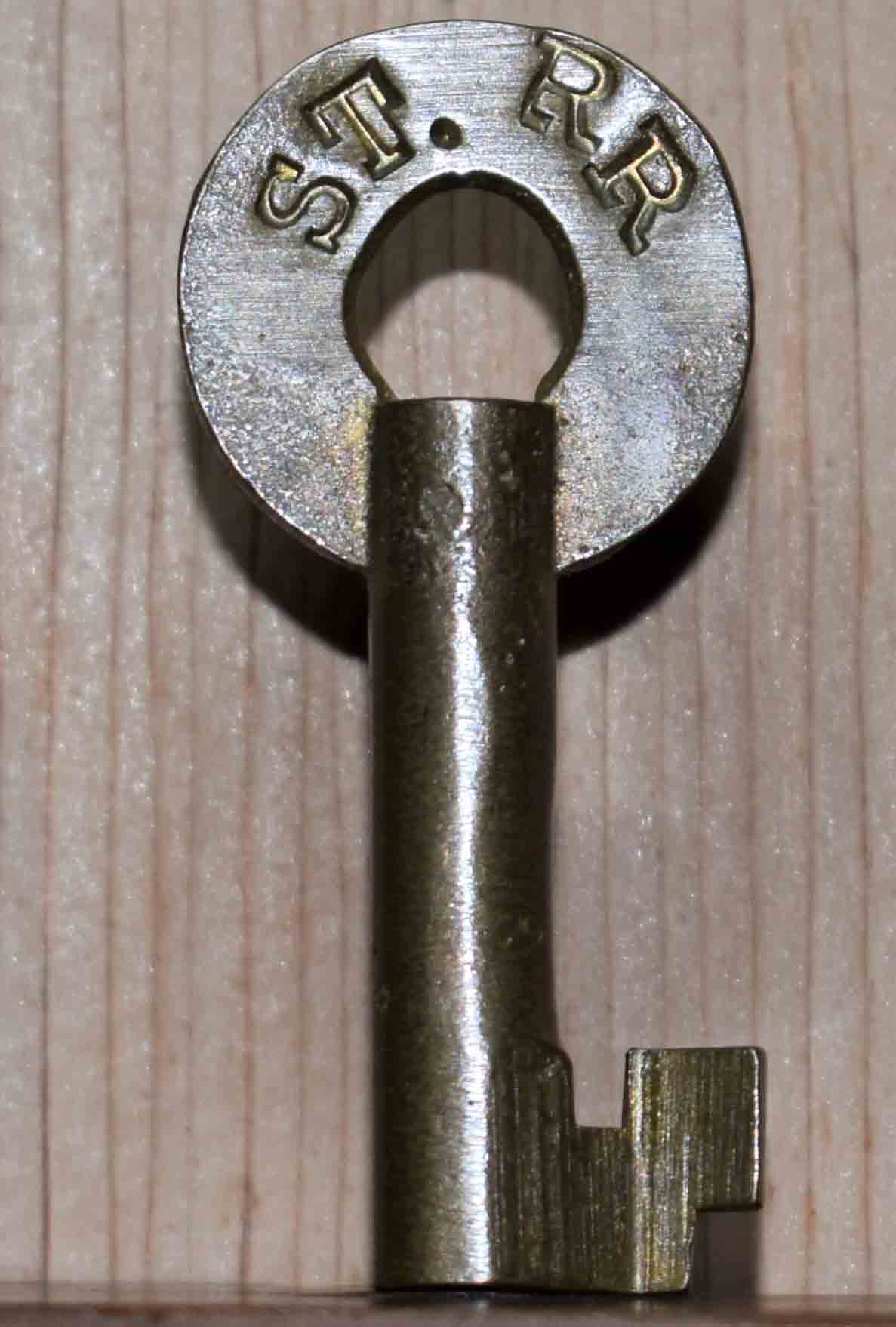


Strasburg Railroad
Remarks: ca. 1904-21
Forged by the S.R. Slaymaker Co.
Superb serif lettering and gold patina.
Key listed in the
"American Railway's Switch Key Directory."
100 year+ centenarian!
History
The Strasburg Rail Road is the oldest continuously operating railroad in the western hemisphere and the oldest public utility in the Commonwealth of Pennsylvania. Chartered in 1832, the Strasburg Rail Road continues to operate under its original charter and original name (Strasburg Rail Road Company).
The Strasburg Rail Road is also one of the few railroads in the United States to occasionally use steam locomotives to haul revenue freight trains.
Click on image to view larger picture

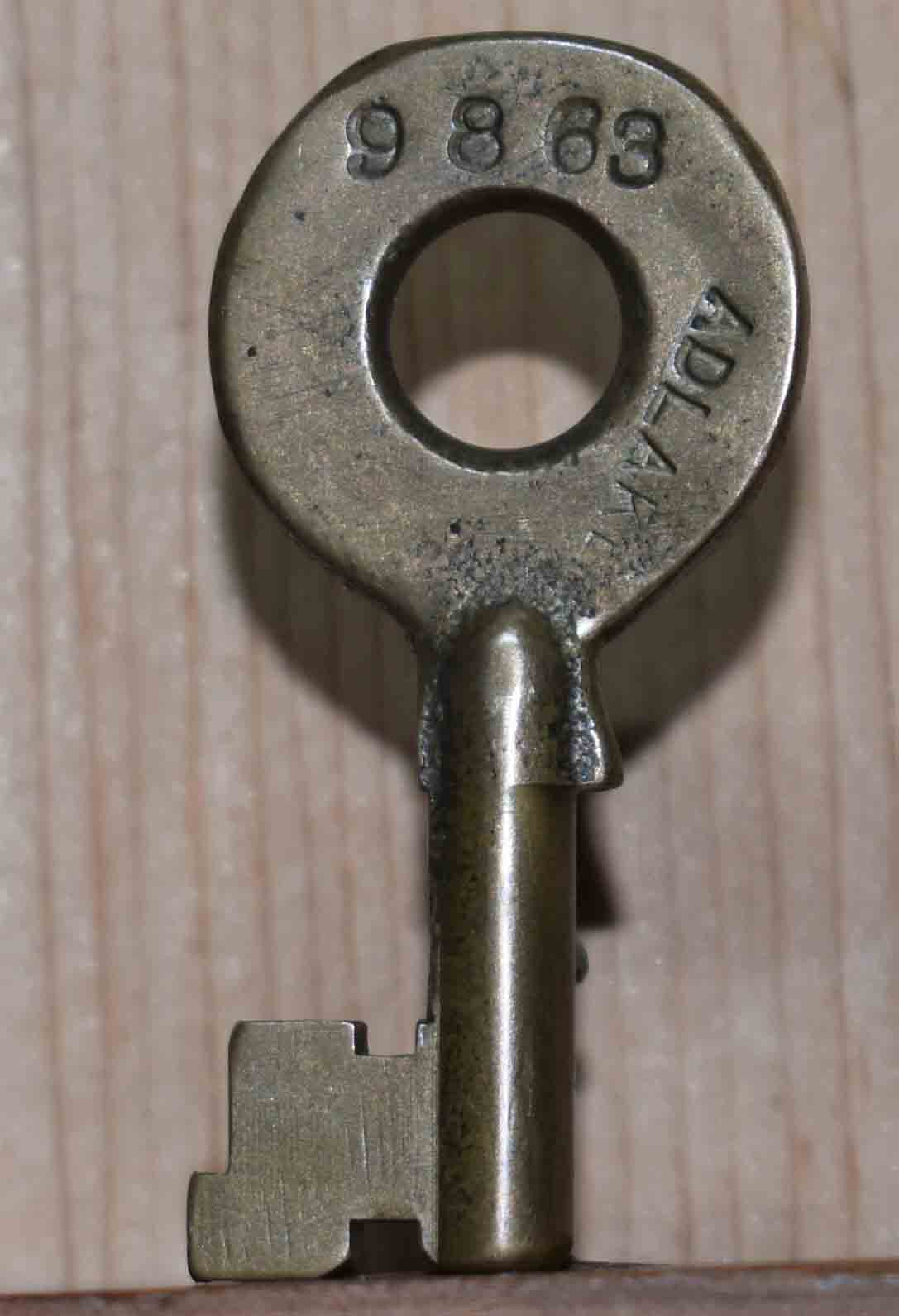

St. Louis & Southwestern Railroad
Item: 138-S Price: $75.00 $60.00
Remarks: ca. early/mid-1900s
Forged by the Adlake Co.
Nice stamp marks and caramel patina.
Given the moniker, "The Cotton Belt Route."
80 year+ octogenarian!
History
The Cotton Belt was part of the railroad empire acquired by financier Jay Gould in the last quarter of the 19th century. By 1890 Gould owned the Missouri Pacific, the Texas and Pacific, the St. Louis Southwestern, and the International-Great Northern, one-half of the mileage in the Southwest, the Handbook of Texas wrote.
The railroad was organized on January 15, 1891, although it had its origins in a series of short lines founded in Tyler, Texas, in 1870 that connected northeastern Texas to Arkansas and southeastern Missouri. Construction of the original Tyler Tap Railroad began in the summer of 1875.
Click on image to view larger picture


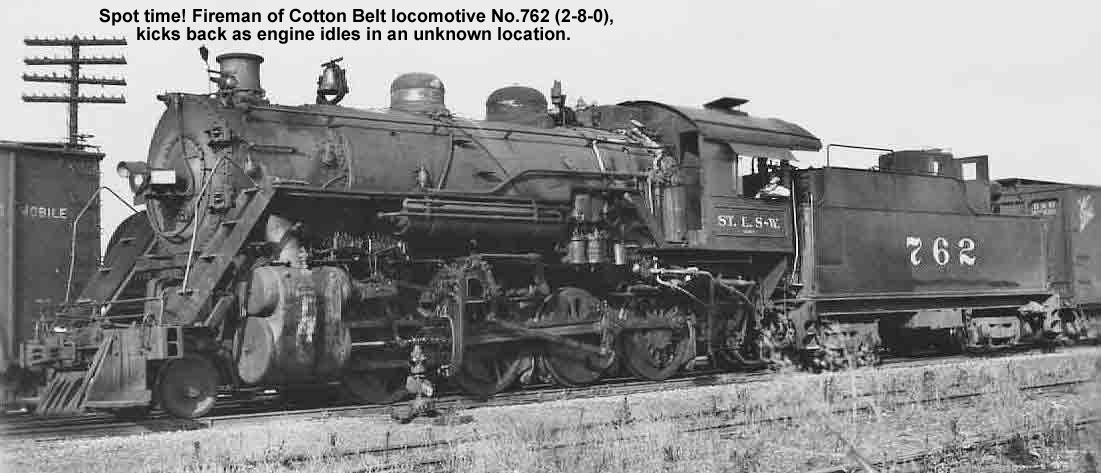

St. Louis & Southwestern Railway Co.
Item: 139-S Price: $115.00
Remarks: ca. early/mid-1900s
Attractive brass/steel combo.
Superb stamp marks.
Key listed in the
"American Railway's Switch Key Directory."
80 year+ octogenarian!
History - continued from above
On October 18, 1903, the Cotton Belt gained trackage rights over the Missouri Pacific Railroad along the eastern shore of the Mississippi River to reach East St. Louis, Illinois, and then used Terminal Railroad Association trackage rights into St. Louis.
The Cotton Belt operated a freight station in downtown St. Louis, but its main base of operations in the area was its yard and a locomotive servicing facility in East St. Louis, just east of Valley Junction, and south of Alton and Southern Railroad's Gateway Yard, and north of Kansas City Southern's East St. Louis Yard. Union Pacific Railroad now operates Cotton Belt Yard, although the engine servicing facilities have been demolished.
Click on image to view larger picture

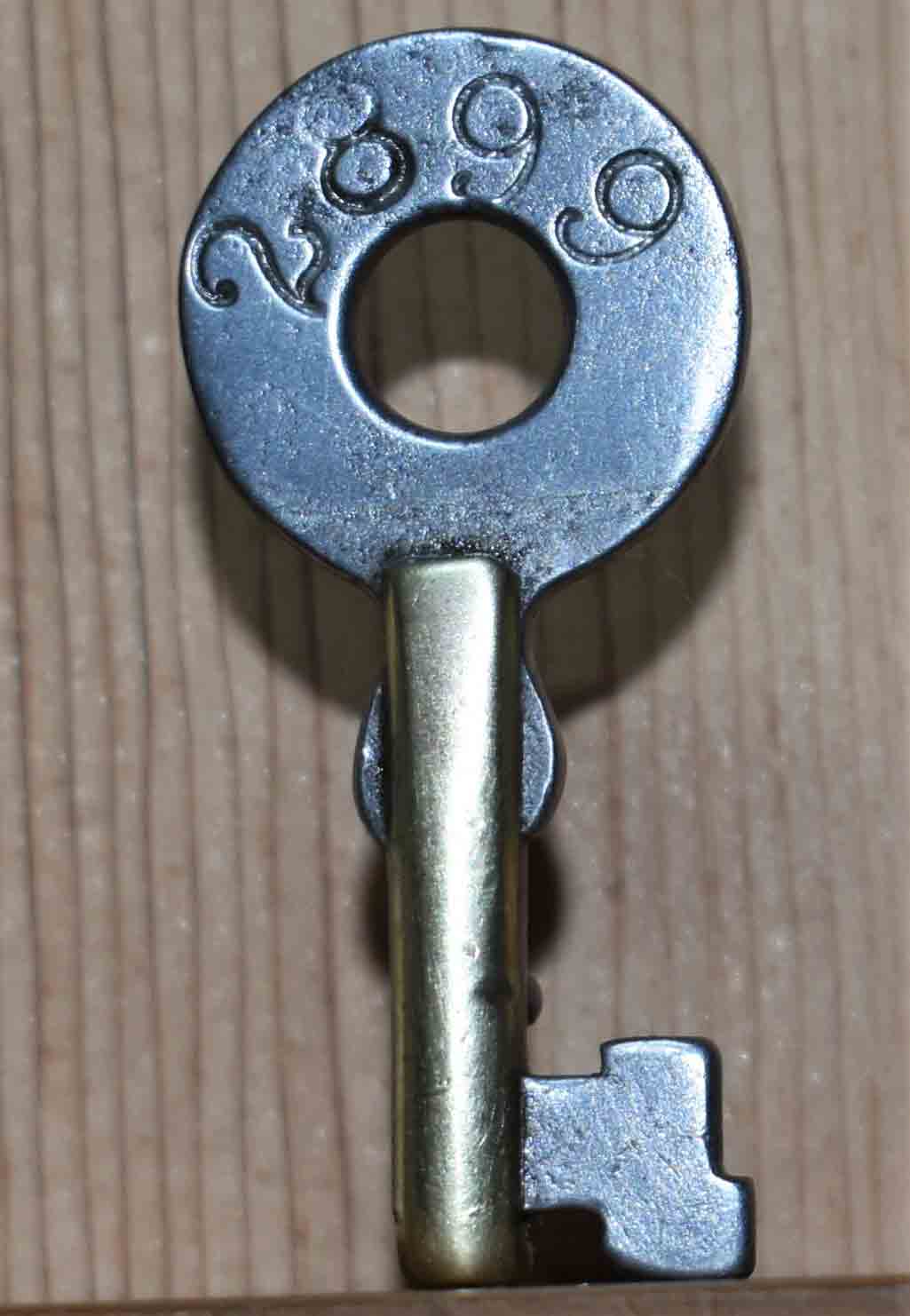

St. Louis & Southwestern Railway Co.
Item: 140-S Price: $115.00
Remarks: ca. early/mid-1900s
Attractive brass/steel combo.
Superb stamp marks.
80 year+ octogenarian!
History - continued from above
The Cotton Belt and its subsidiary St. Louis Southwestern Railway of Texas operated 1,607 miles of road in 1945; 1,555 miles in 1965; and 2,115 miles in 1981 after taking over the Rock Island's Golden State Route. In 1925, SSW and SSW of Texas reported a total of 1,474 million net ton-miles of revenue freight and 75 million passenger-miles; in 1970 it carried 8,650 million ton-miles and no passengers.
Click on image to view larger picture


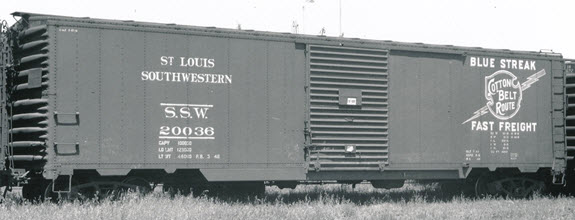
St. Louis & Southwestern Railroad
Remarks: ca. early 1900s
Superb serif lettering and gold patina.
80 year+ octogenarian!!
Item of Interest
The Texas Midland was sold to the Southern Pacific Railroad on April 1, 1928. The Southern Pacific leased the Texas Midland to the Texas and New Orleans Railroad for operation. The Texas Midland was dissolved on June 30, 1934 when the Southern Pacific sold it to the Texas and New Orleans Railroad. Not to forget, the Southern Pacific Railroad owned the Cotton Belt (SSW).
Click on image to view larger picture
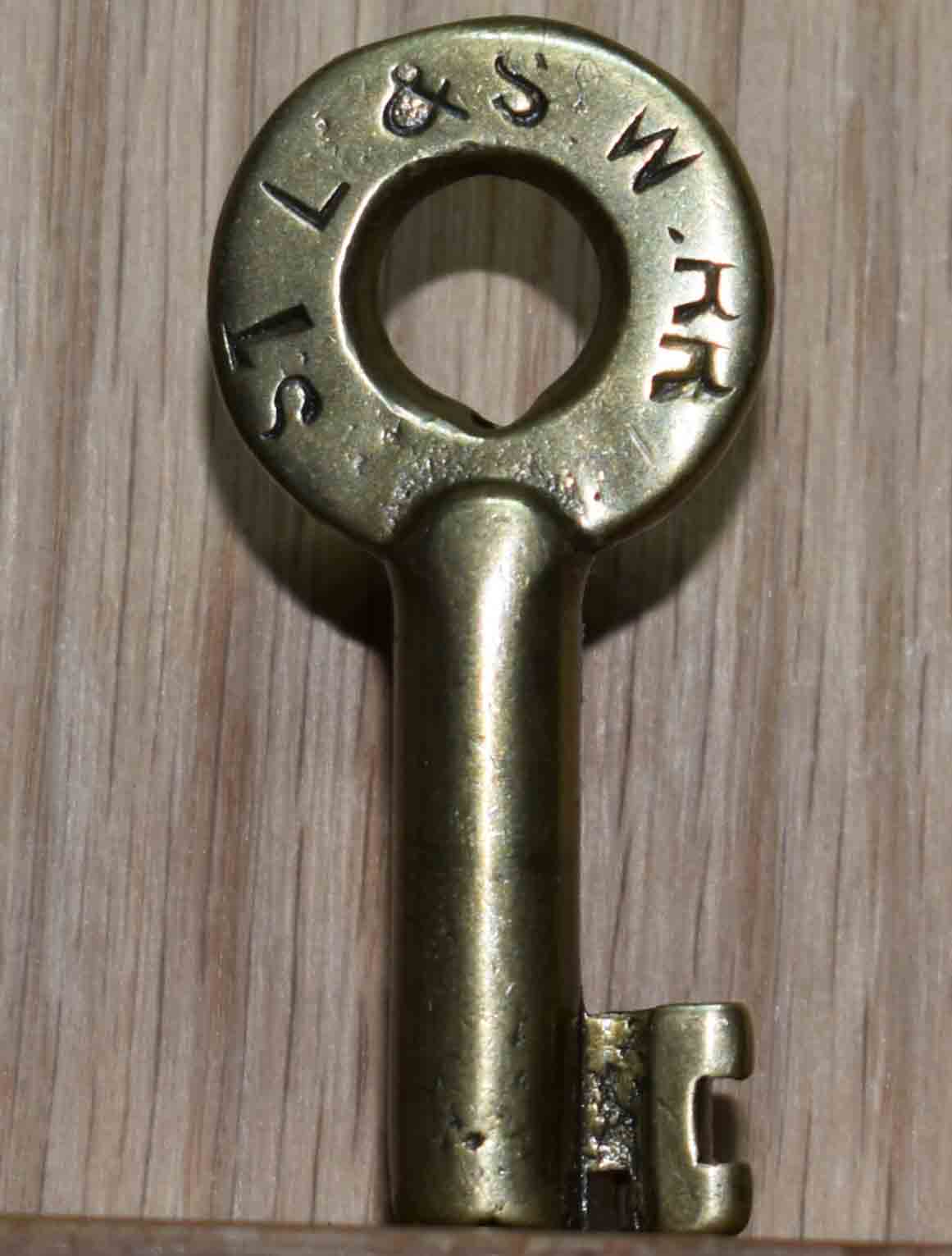


St. Louis & Southwestern Railroad
Remarks: ca. late 1800s
Forged by the Adams & Westlake Co.
Nice stamp marks and gold patina.
This much older relic has a smaller barrel opening
then key above. 125 year+ centenarian!
History - continued from above
The Southern Pacific Railroad (SP) assumed control of the SSW on April 14, 1932 and operated it as a subsidiary of SP until 1992, when the Southern Pacific consolidated the Cotton Belt's operations into the parent company. Southern Pacific merged with Union Pacific Railroad in 1996.
Click on image to view larger picture



St. Louis, Arkansas and Texas Railway
Item: 144-S New Listing Price: $175.00
Remarks: ca. late 1800s
Superb stamp marks and patina.
Gobbled up by the Cotton Belt.
125 year+ centenarian!
History
The St. Louis, Arkansas and Texas Railway Company in Texas was chartered on January 29, 1886, to acquire the properties of the Texas and St. Louis Railway Company in Texas, which had been sold under foreclosure.
On May 13, 1889, S. W. Fordyce was appointed receiver of both the St. Louis, Arkansas and Texas Railway Company in Texas and the property formerly belonging to the Kansas and Gulf Short Line. The receiver operated the properties until June 1, 1891, when they were turned over to new companies, namely the St. Louis Southwestern Railway Company of Texas and the Tyler Southeastern Railway Company.
Click on image to view larger picture


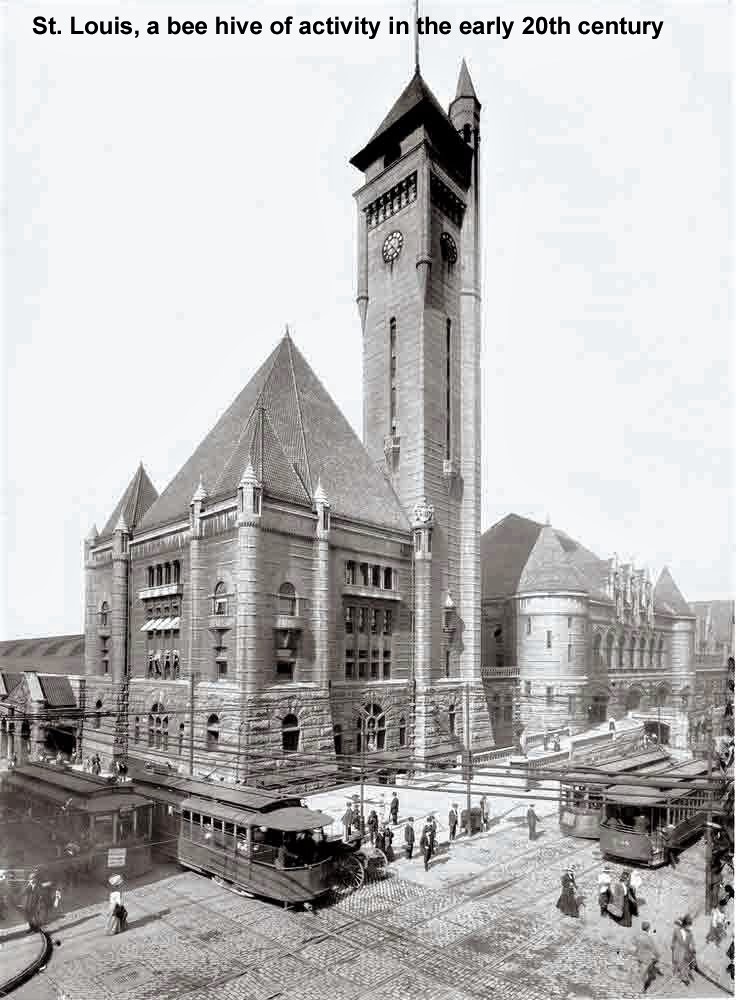
St. Louis & O'Fallon Railway
Item: 146-S Price: $95.00 $75.00
Remarks: ca. early 1900s
Key listed in the
"American Railway's Switch Key Directory."
Nine mile Illinois short line.
Rustic gold patina.
History
St. Louis & O"Fallon, a short line built at the suggestion of the city of St. Louis to provide an additional outlet for freight. The StL&O'F right of way paralleled the present Metrolink eastern extension at St. Clair Avenue. The carrier was incorporated June 1, 1896, under the general laws of Illinois. The owned main line extends eastwardly from East St. Louis to O'Fallon Mine No. 2, a distance of 8.939 miles. The carrier also owns and uses 11.131 miles of yard tracks and sidings. Its road thus embraces 20.070 miles of all tracks owned.
John O'Fallon (1791-December 17, 1865) was a businessman, philanthropist, and military officer. During the 19th century he rose to become the wealthiest person in St. Louis, Missouri. He is the namesake of O'Fallon, Illinois, (incorporated in 1874) as well as O'Fallon, Missouri and the nephew of William Clark.
He was especially active in railroad-building. O'Fallon presided over the 1849 committee which formed the Pacific Railroad (now Missouri Pacific Railroad); was the first president of the Ohio and Mississippi Railroad (now Baltimore and Ohio Railroad) and in 1850 became president of and the North Missouri Railroad (nee - Wabash Railroad).
Click on image to view larger picture
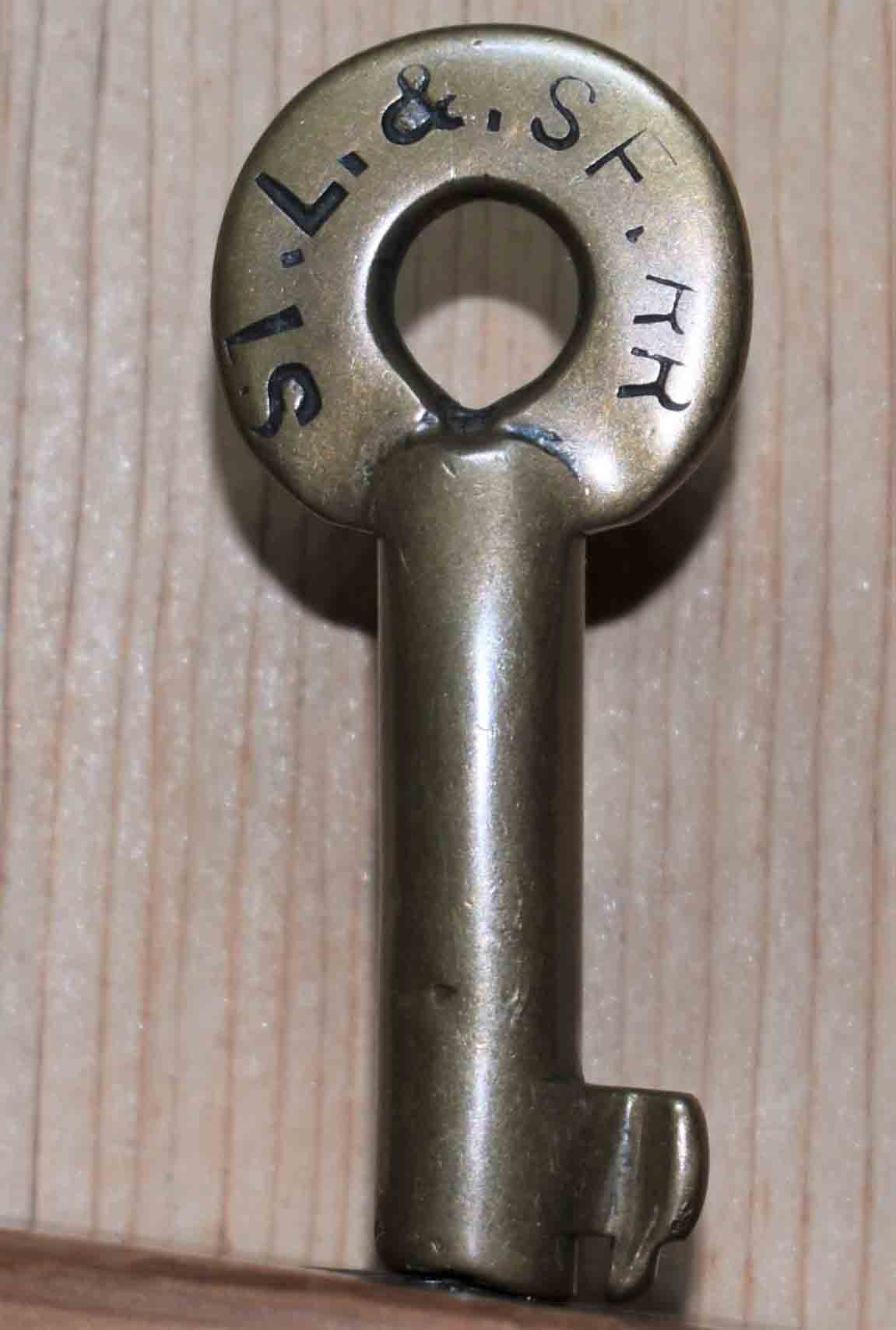


St. Louis San Francisco Railroad
aka "The Frisco"
Item: 148-S Price: $110.00 $95.00
Remarks: ca. early 1900s
Forged by the Adams & Westlake Co.
Very nice stamp marks and superb gold patina!
Unique style key has a smaller barrel opening
than all Frisco keys below. This key stamped
"RR" + key below stamped "RY" = nice set.
80 year+ octogenarian!
History
The St. Louis & San Francisco Railway aka, "Frisco," was a railroad that operated in the Midwest and South Central U.S. from 1876 to April 17, 1980. Incorporated in Missouri on September 7, 1876. It was formed from the Missouri Division and Central Division of the Atlantic & Pacific Railroad. The Acheson, Topeka & Santa Fe Railroad, interested in the A & P right of way across the Mojave Desert to California, took the road over until the larger road went bankrupt in 1893; the receivers retained the western right of way but divested the ATSF of the St. Louis San Francisco mileage on the great plains. The St. Louis San Francisco Railway had two main lines: St. Louis Tulsa-Oklahoma City and Kansas City-Memphis-Birmingham. The junction of the two lines was in Springfield, Missouri, home to the company's main shop facility and headquarters.
Click on image to view larger picture

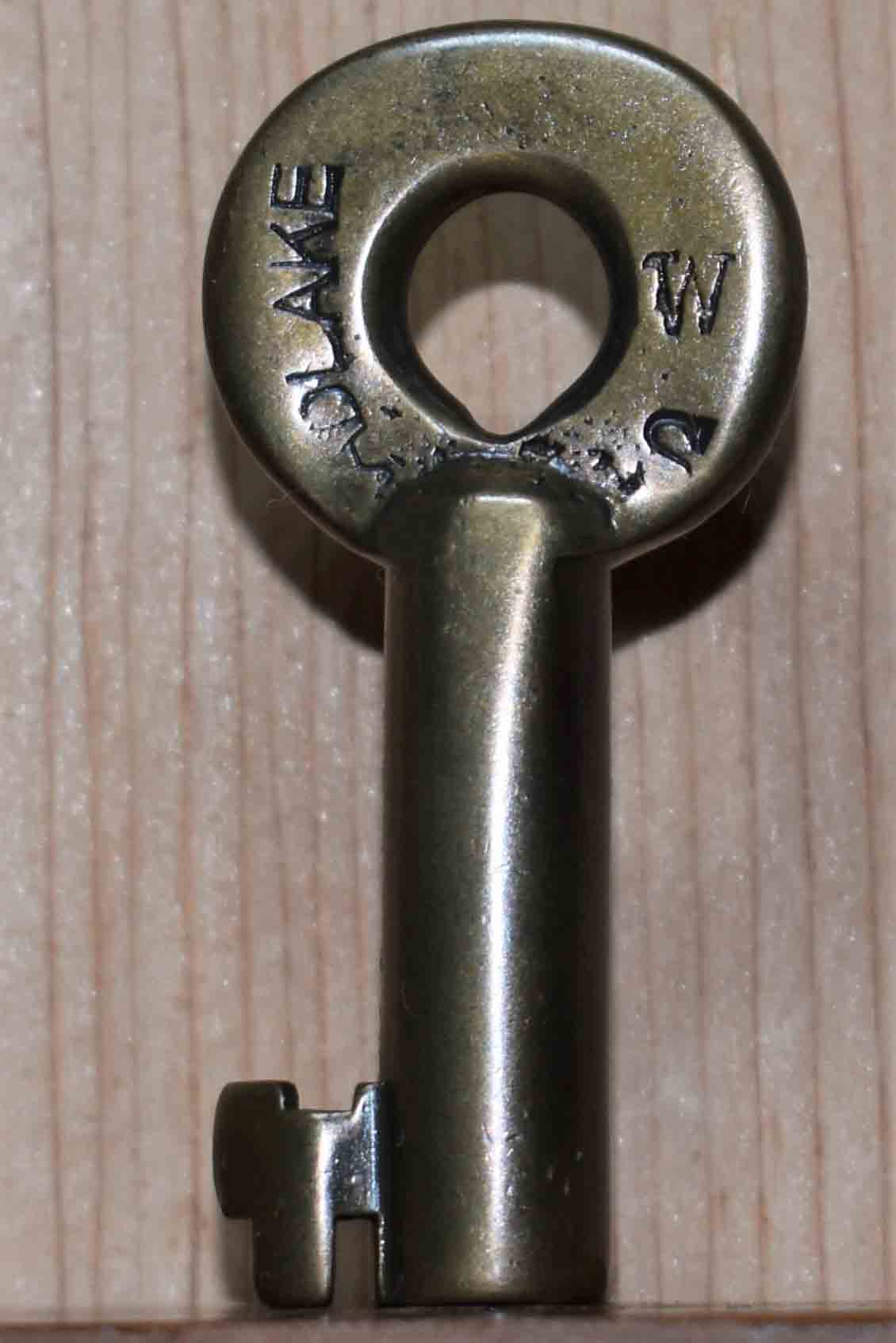

St. Louis San Francisco Railway
aka "The Frisco"
Item: 149-S Price: $110.00 $95.00
Remarks: ca. early 1900s
Forged by the Adlake Co.
Nice pocket worn lettering and gold patina.
W = passenger train "Will Rogers"
(Wichita Line) Oklahoma City to Wichita.
This key + key below = nice set!
80 year+ octogenarian!
History - continued from above
The Atlantic & Pacific Railroad (A&P) was chartered in 1866 to build west from Springfield, Missouri, along the 35th parallel of latitude (approximately through Amarillo, Texas, and Albuquerque, New Mexico) to a junction with the SP at the Colorado River. The infant A&P had no rail connections. The line that was to become the St. Louis San Francisco Railway.
Click on image to view larger picture


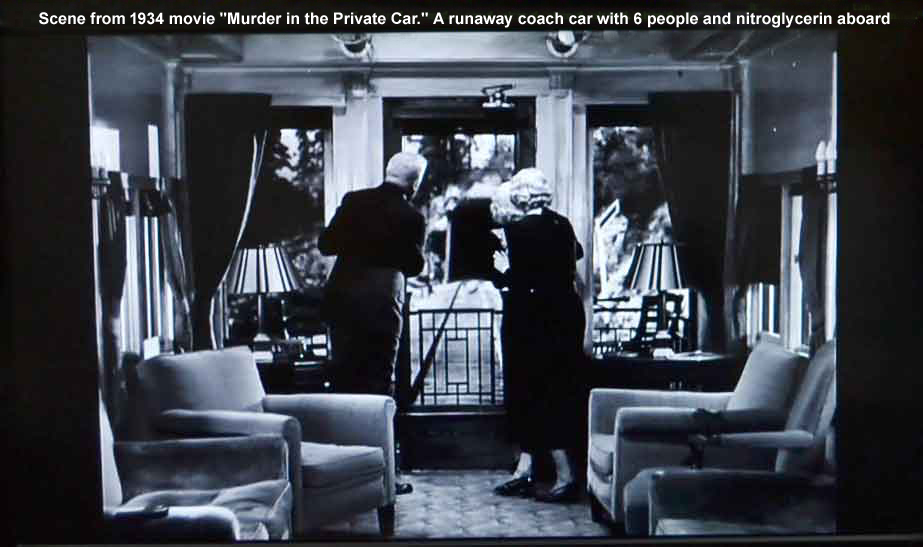

St. Louis San Francisco Railway
aka "The Frisco"
Item: 150-S Price: $110.00 $95.00
Remarks: ca. early 1900s
Forged by the Adlake Co.
Nice pocket-wear and gold patina.
T = passenger train "Texas Flash"
(Tulsa Line) Tulsa to Dallas.
Unique "CO" stamp mark.
80 year+ octogenarian!
History - continued from above
The city of Frisco,Texas was named after the railroad and uses the former railroad's logo as its own logo. The logo is modeled after a stretched-out raccoon skin (giving rise to Frisco High School's mascot, the Fighting Raccoons). From March, 1917, through January, 1959, Frisco, in a joint venture with the Missouri, Kansas, and Texas Railroad, operated the Texas Special. This luxurious train, a streamliner from 1947, ran from St. Louis to Dallas,Texas, Ft. Worth, Texas and San Antonio, Texas. While the Texas Special was the most famous passenger train Frisco ever operated, it also rostered an entire fleet of (11) named trains. Due to the harsh economic conditions of that era, the Frisco merged into the Burlington Northern Railroad on November 21, 1980.
Click on image to view larger picture


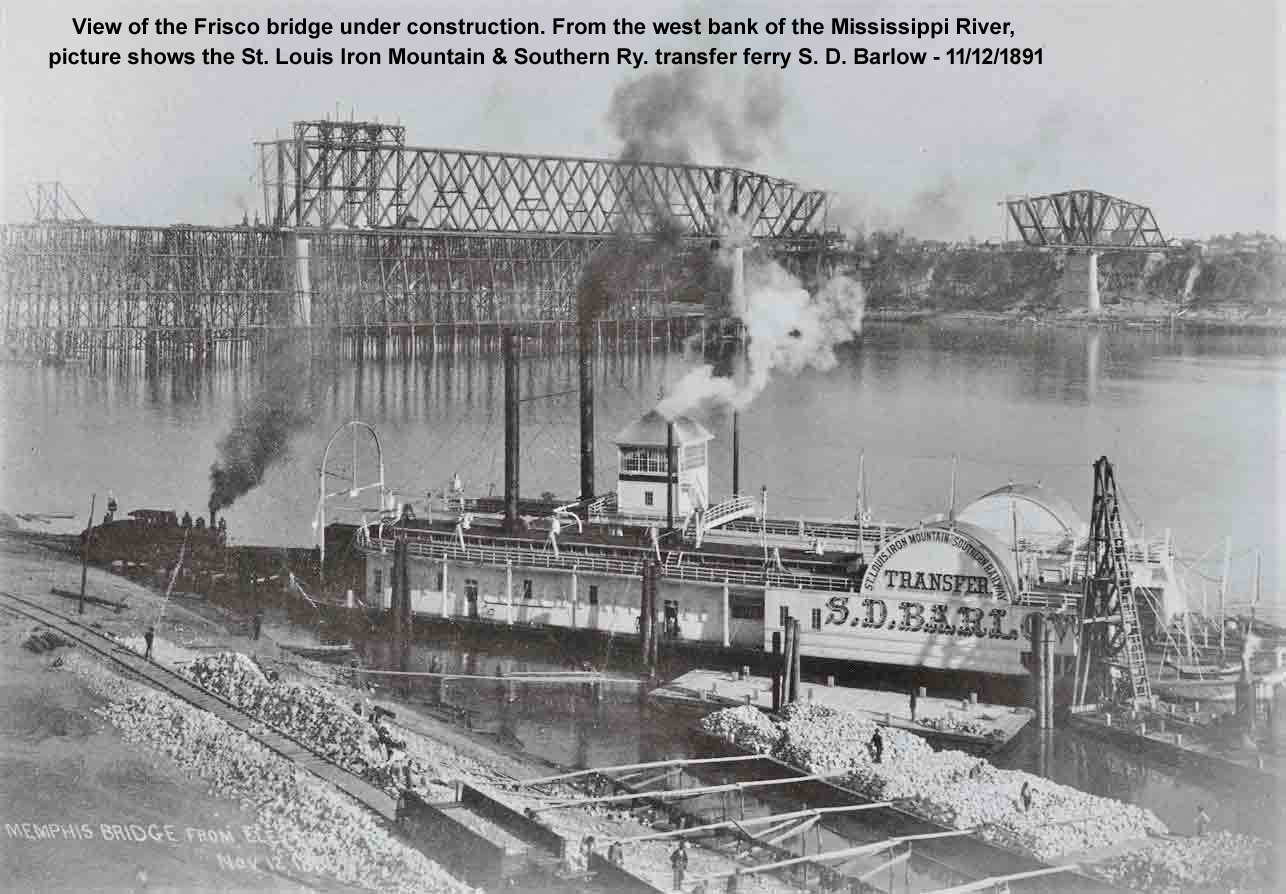
St. Louis San Francisco Railway
aka "The Frisco"
Item: 151-S Price: $145.00
Remarks: ca. late 1800s
Forged by the Adams & Westlake Co.
Early A&W hex stamp = 1st series.
Superb stamp marks and gold patina.
125 year+ centenarian!
Click on image to view larger picture

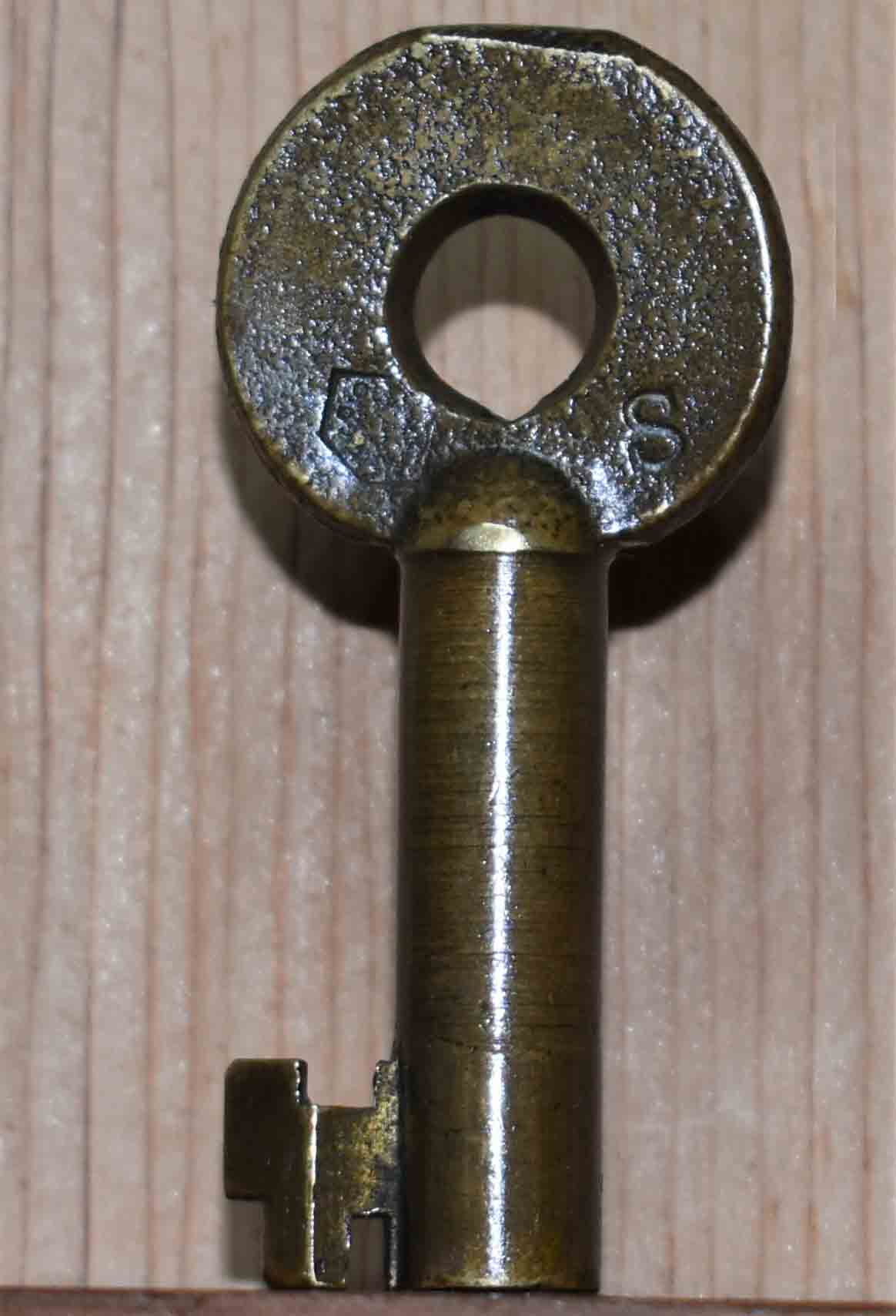

St. Louis San Francisco Railway
aka "The Frisco"
Item: 152-S Price: $125.00
Remarks: ca. late 1800s
Forged by the Adams & Westlake Co.
Early A&W hex stamp = 1st series.
Superb stamp marks and dark carmel patina.
125 year+ centenarian!
Click on image to view larger picture

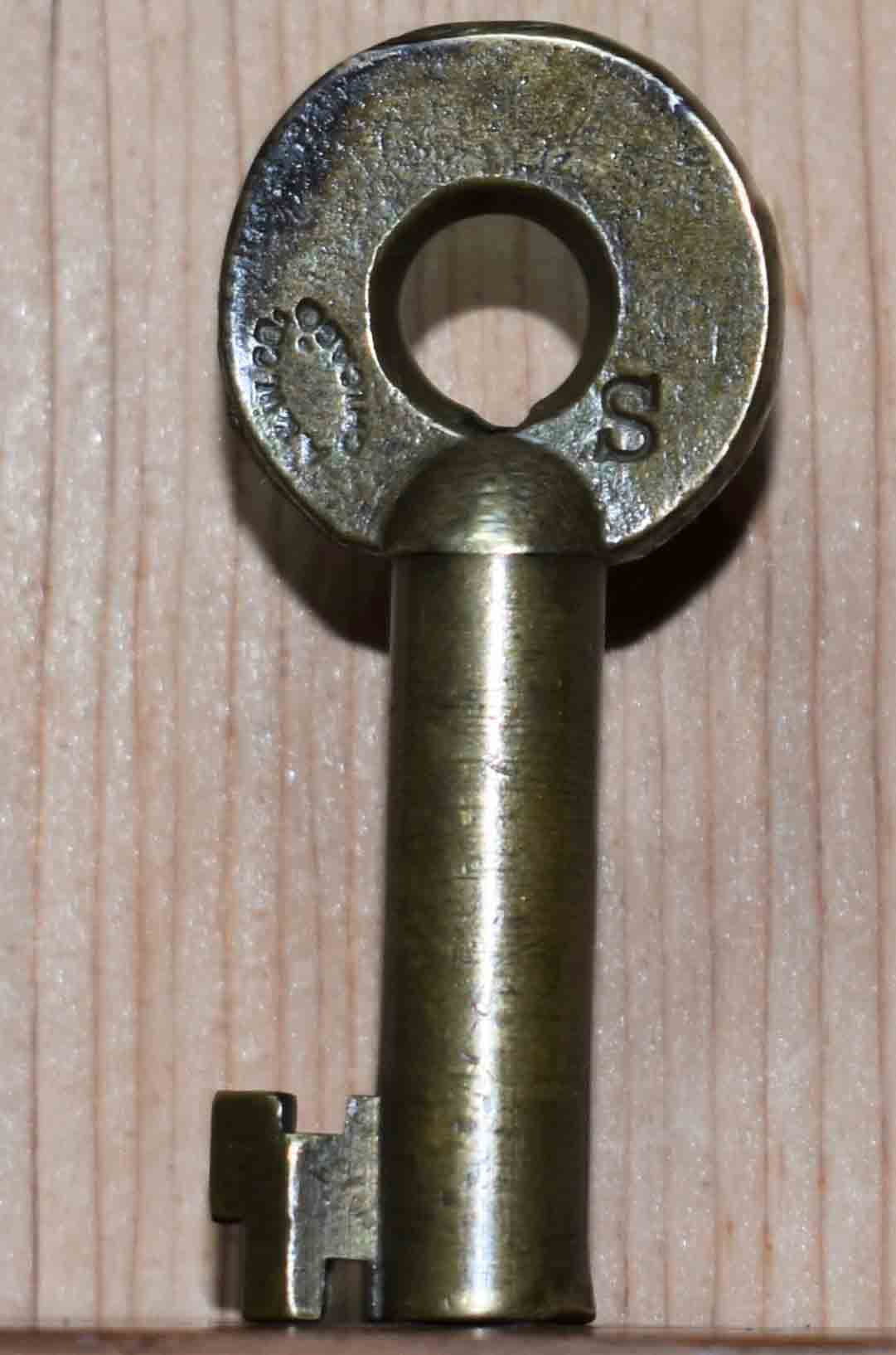
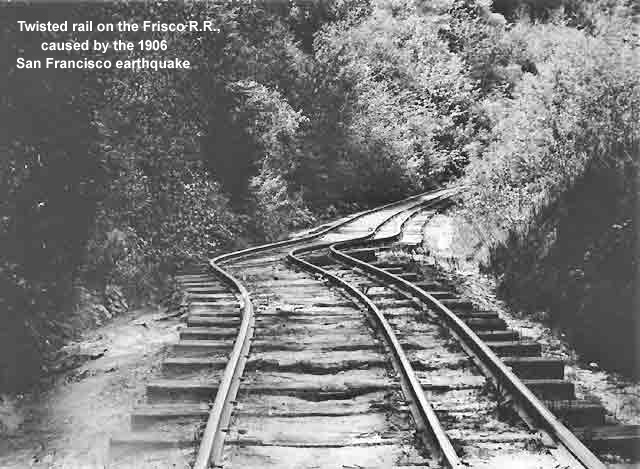
St. Louis San Francisco Railway
aka "The Frisco"
Item: 153-S Price: $125.00
Remarks: ca. early 1900s
Forged by the Adams & Westlake Co.
Superb stamp marks and dark gold patina.
100 year+ centenarian!
A subject of interest:
Copper, one of the two main alloy's in brass (the other being zinc), is the predominant alloy in this Frisco key. Along with the right conditions, as the copper ages, it bleeds off a greenish hue. You will see this green color (light and dark) on many 1800 and very early 1900 era switch keys. I have more than a few "greenies" listed on my website; here's another example: Union Pacific Key It would be my guess, that copper was more available than zinc in that era of time. There is an exception, the Keyline foundry still uses this 60/40 (a guess) formula whereas, the older foundries such as Adlake, evolved to a formula of browns (light and dark), which are the colors of brass we're accustomed to seeing today. There is one other switch key color, which is yellow brass. This is basically a copper alloy that comprises about 60-70% copper, 30-40% of zinc, tin, and tiny amounts of lead. There are key examples of yellow brass where you will sometimes notice a "silver smudge" on the key. This is the tin or zinc, or both, bleeding through the copper. Whichever formula the foundries used, the process is what gives countless railroad switch keys, the great looking patina on them today.
Click on image to view larger picture
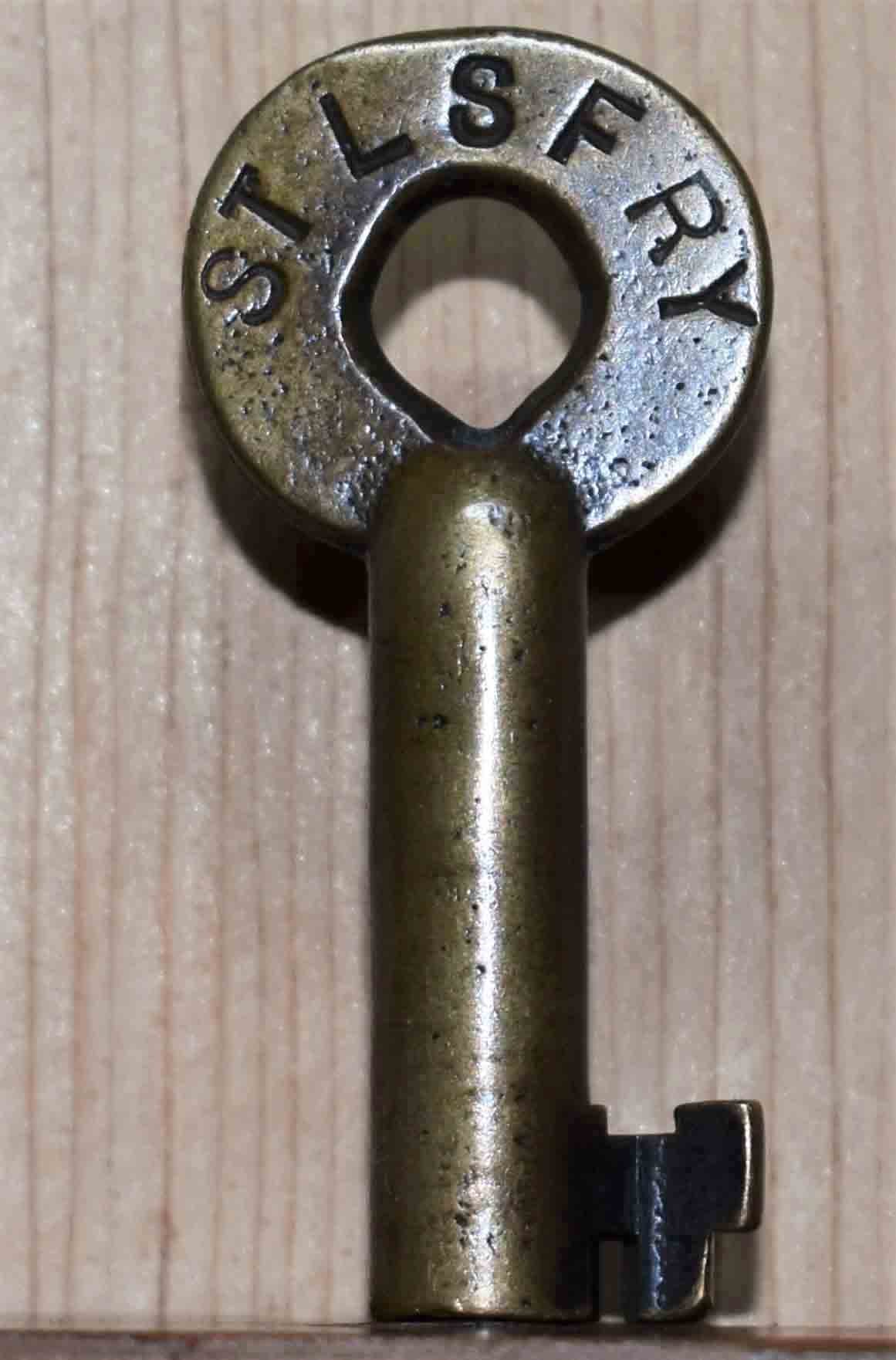
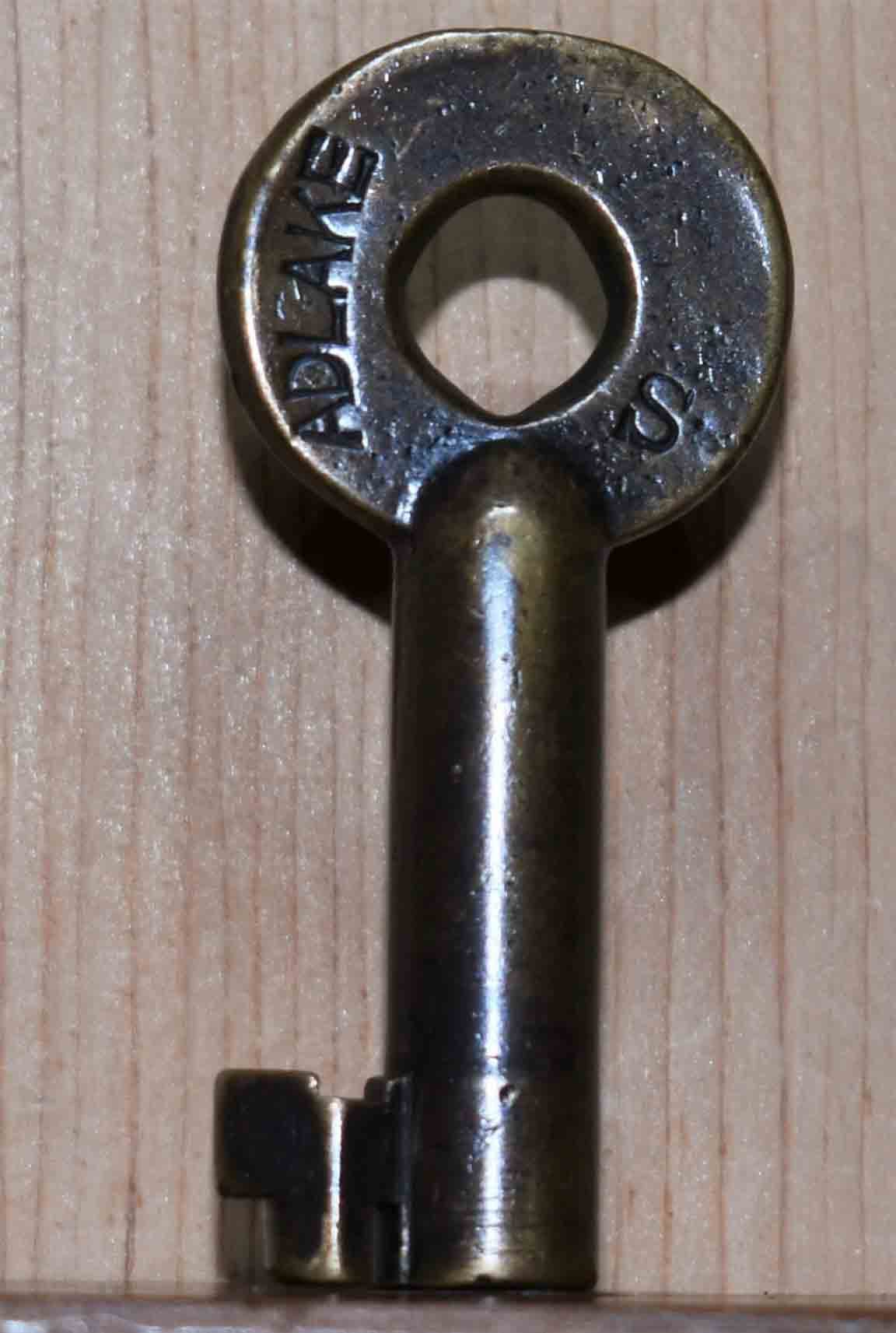

St. Louis San Francisco Railway
aka "The Frisco"
Item: 154-S Price: $75.00
Remarks: ca. mid-1900s.
Forged by the Adlake Co.
Superb stamp marks and two-tone patina.
Click on image to view larger picture



St. Louis San Francisco Railway
aka "The Frisco"
Item: 155-S Price: $150.00
Remarks: ca. late 1800s
Forged by the Adams & Westlake Co.
Early A&W hex stamp = 1st series.
Superb stamp marks and gold patina.
125 year+ centenarian!
Click on image to view larger picture

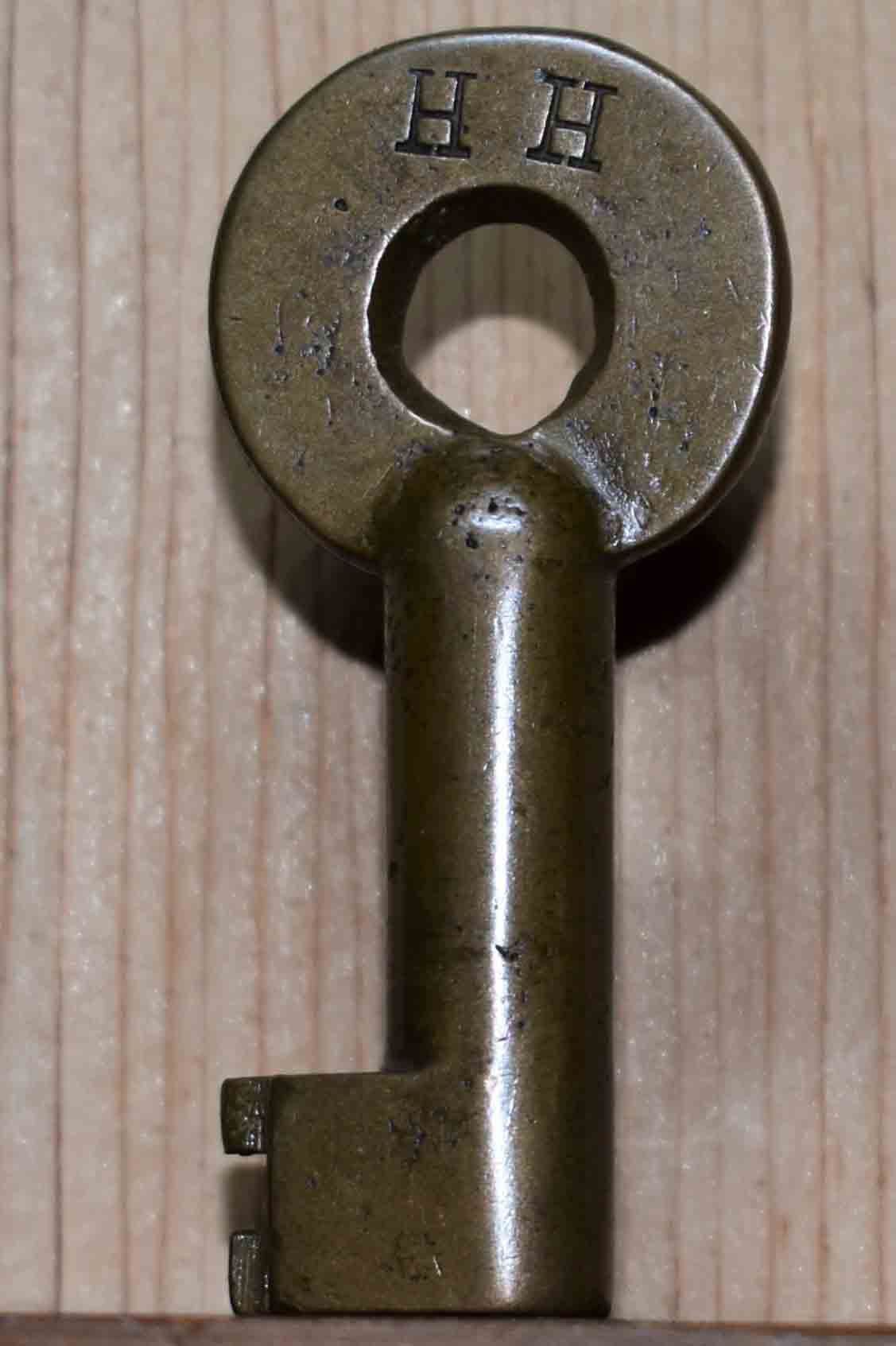


St. Louis National Stock Yards
Item: 157-S hog house key Price: $155.00
Remarks: ca. early 1900s
Great stamp marks and caramel patina.
100 year+ centenarian!
History
National City was a suburb of East St. Louis, Illinois. Incorporated in 1907, it was a company town for the St. Louis National Stockyards Company. In 1996, the company, which owned all residential property in the town, evicted all of its residents. The following year, because it had no residents, National City was dissolved by court order. Its site was subsequently annexed by nearby Fairmont City, Illinois.
Click on image to view larger picture
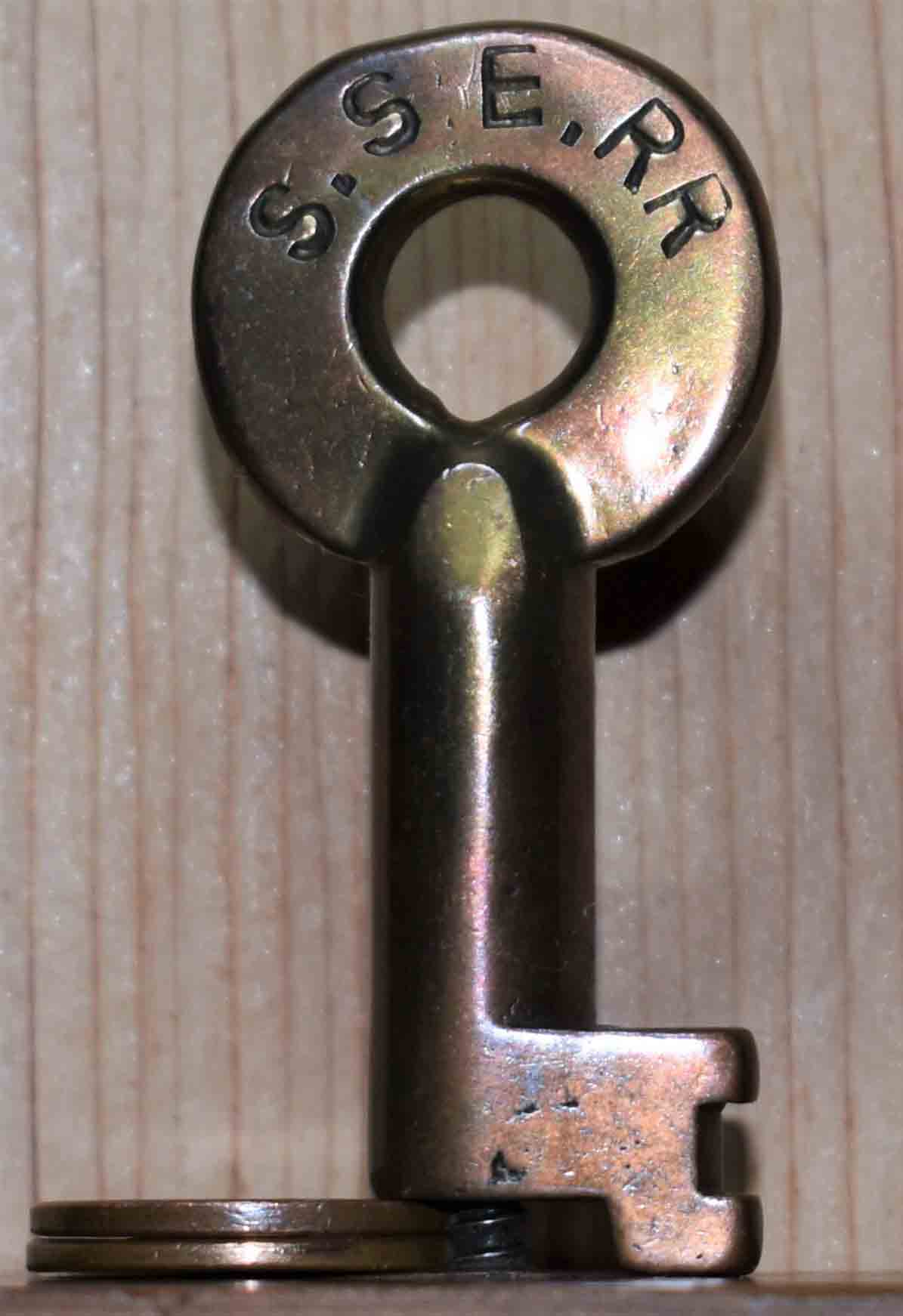
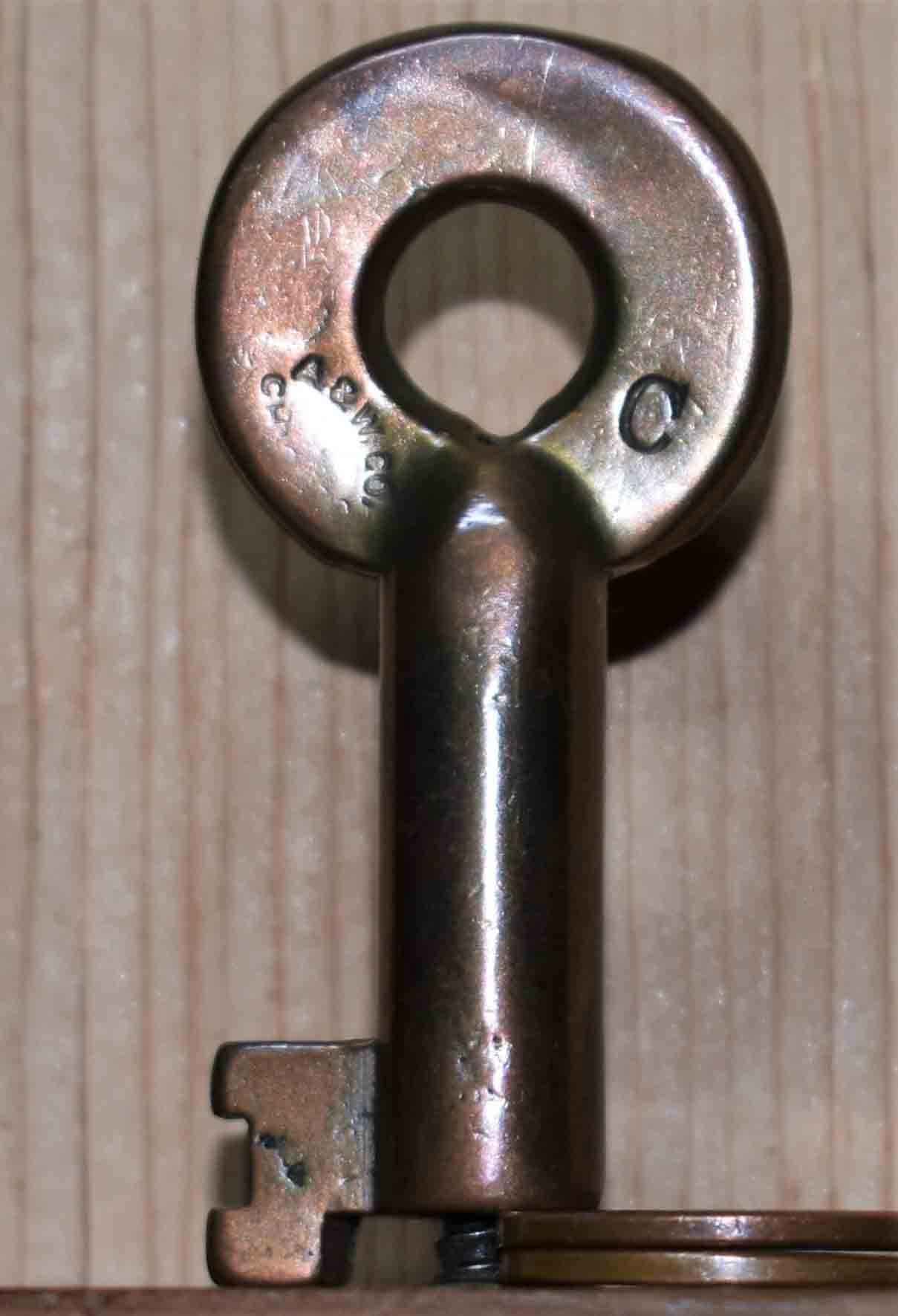

South Side Elevated Railroad
Item: 159-S car key Price: $155.00
Remarks: ca. pre-1913
Forged by the Adams & Westlake Co.
Superb stamp marks and copper patina.
100 year+ centenarian!
History
The South Side Elevated Railroad (originally Chicago & South Side Rapid Transit Railroad) was the first elevated rapid transit line in Chicago, Illinois. The line ran from downtown Chicago to Jackson Park, with branches to Englewood, Normal Park, Kenwood, and the Union Stock Yards. The first 3.6 miles of the line opened on June 6, 1892, and much of its route is still used today as part of the Chicago 'L' system.
The South Side Elevated railroad provided 24-hour service, a major advantage when compared to Chicago's cable railroads, which required daily overnight shutdown for cable maintenance. After midnight, two trains ran on the line, providing service every 20 minutes. In contrast, rush-hour service required 18 trains to maintain a schedule with a 3-minute headway.
Click on image to view larger picture
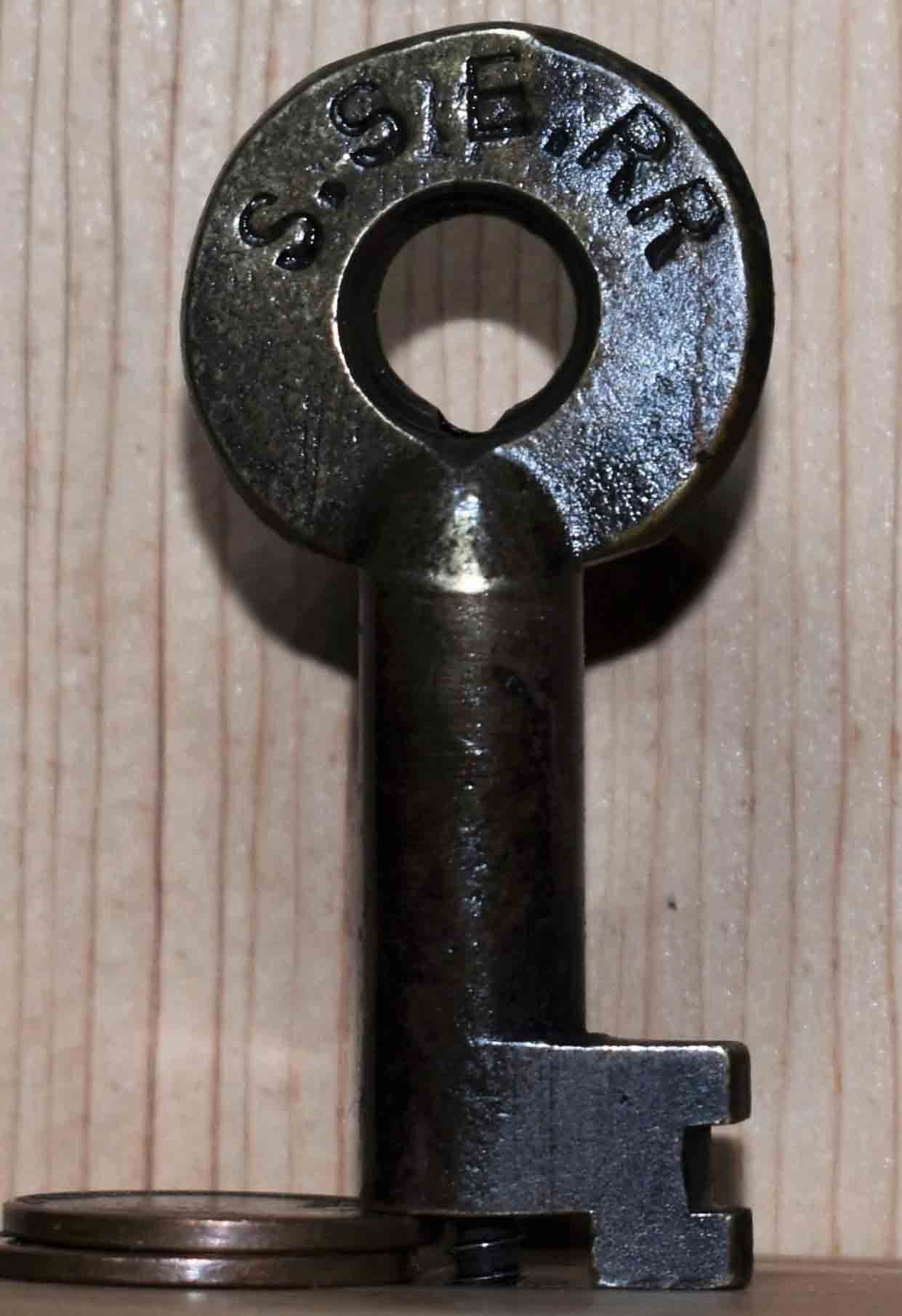

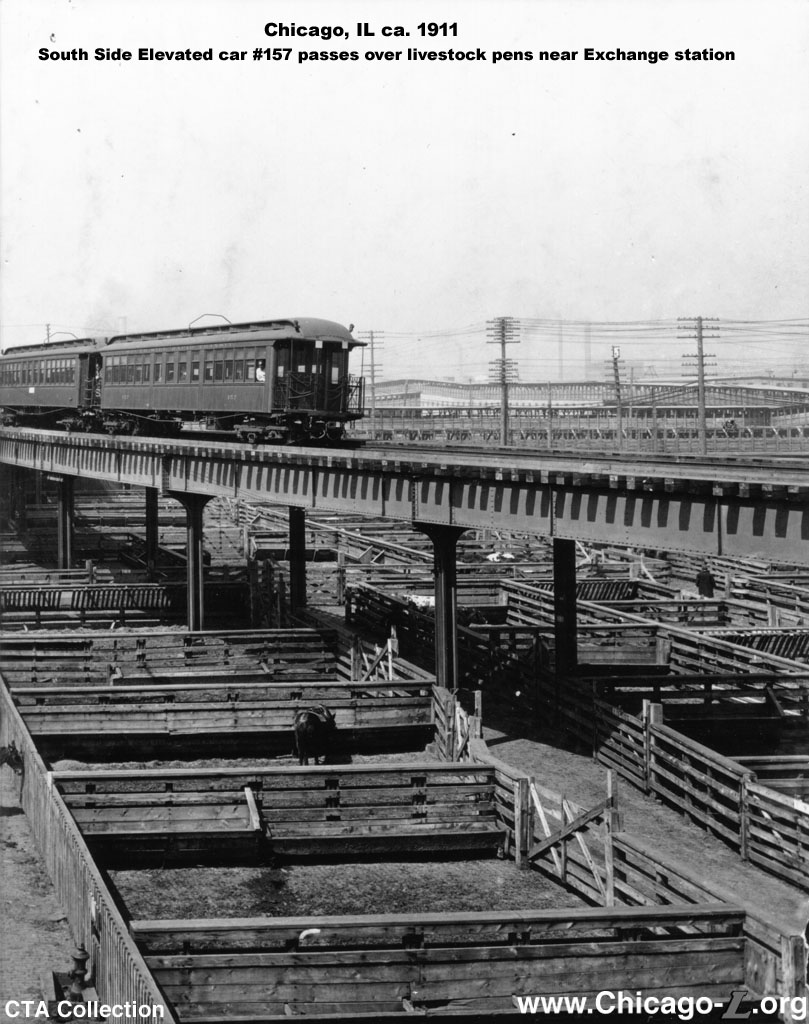
South Side Elevated Railroad
Item: 160-S car key Price: $155.00
Remarks: ca. pre-1913
Forged by the Adams & Westlake Co.
Superb stamp marks and chocolate patina.
100 year+ centenarian!
History - continued from above
When the World's Columbian Exposition closed, lack of development along the southern portion of the route led to plummeting passenger numbers. The Chicago and South Side Rapid Transit Railroad Company went into receivership in 1895 and was sold under foreclosure in September 1896 for $4,100,100. The South Side Elevated Railroad was formed to take over the route in 1897.
In 1913, Chicago's four elevated railroad companies came together to form the Chicago Elevated Railways Collateral Trust establishing crosstown services for the first time. In 1924 all four companies were formally united to form the Chicago Rapid Transit Company.
Click on image to view larger picture


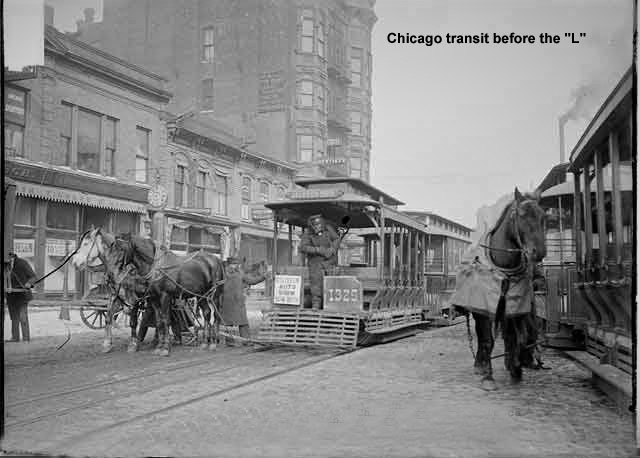
South Side Elevated Railroad
Item: 161-S switch key Price: $225.00
Remarks: ca. pre-1913
Forged by the Adams & Westlake Co.
Superb stamp marks and patina.
100 year+ centenarian!
History - continued from above
Other companies used third rail electrification to power their trains; so the South Side Elevated Railroad enlisted Frank Julian Sprague to convert its rolling stock to electrical power. Sprague used his previously untested system of multiple-unit train control (MU) whereby multiple self-powered cars could be linked together and controlled by a single person, making the South Side Elevated Railroad the first in the world to use MU operation.
Click on image to view larger picture



Sunbury Hazleton & Wilkes-Barre Railway
Item: 163-S Pennsy coal hauler Price: $225.00
Remarks: ca. late 1800s
Attractive ring tapered barrel.
Nice stamp marks and patina.
Great serial #99! @143 years young!
History
The Danville, Hazleton & Wilkes-Barre Railroad began in April 1859 as the Wilkes-Barre & Pittston Railroad. Their plan was to build a railroad along the east side of the Susquehanna River from above Pittston to Danville or Sunbury. It was renamed the Danville-Hazleton & Wilkes-Barre Railroad in 1867. Railroad construction began in late 1867 or early 1868. Simon P. Kase was a critical force in the building of the railroad. In 1870 an anthracite-burning locomotive was built for the railroad. By 1870, the Danville-Hazleton & Wilkes-Barre Railroad linked Sunbury and Danville. By 1871, the railroad extended 43 miles from Sunbury to Tomhicken. In 1872, the Philadelphia & Erie Railroad started to operate the Danville-Hazleton & Wilkes-Barre tracks. In 1878, the railroad was sold under foreclosure and the name was changed to the Sunbury Hazleton & Wilkesbarre Railroad.
The Sunbury Line was once owned by the Pennsylvania Railroad connecting its core system with the other anthracite rail lines in and around Wilkes-Barre, Pennsylvania. It is presently owned and operated by Norfolk Southern Railway.
Click on image to view larger picture


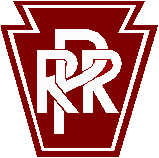
Susquehanna, Bloomsburg & Berwick Railroad
Item: 165-S Price: $175.00 $160.00
Remarks: ca. 1879-1917
Operated 1902-1918
Forged by the E.T. Fraim Co.
Superb serif lettering and caramel patina.
Also given the moniker, "Sweet By and By."
125 year+ centenarian!
History
The SB&B Railroad or the Weak and Weary Railroad, which referred to the fact that it was not a financial success, was a railroad in northeastern Pennsylvania until 1918. The route ran from Watsontown, Pennsylvania to Berwick, Pennsylvania.
The Susquehanna, Bloomsburg and Berwick began as the Wilkes-Barre and Western Railway, incorporated on June 22, 1886 to build from Watsontown to Shickshinny. It opened 22 miles of line from Watsontown to Millville in 1887, and in 1891, opened an additional 9 miles from Millville Junction, just south of Millville, to Orangeville. What remains of it is currently a subsidiary of the Norfolk Southern Railroad (nee Conrail/PRR).
Click on image to view larger picture
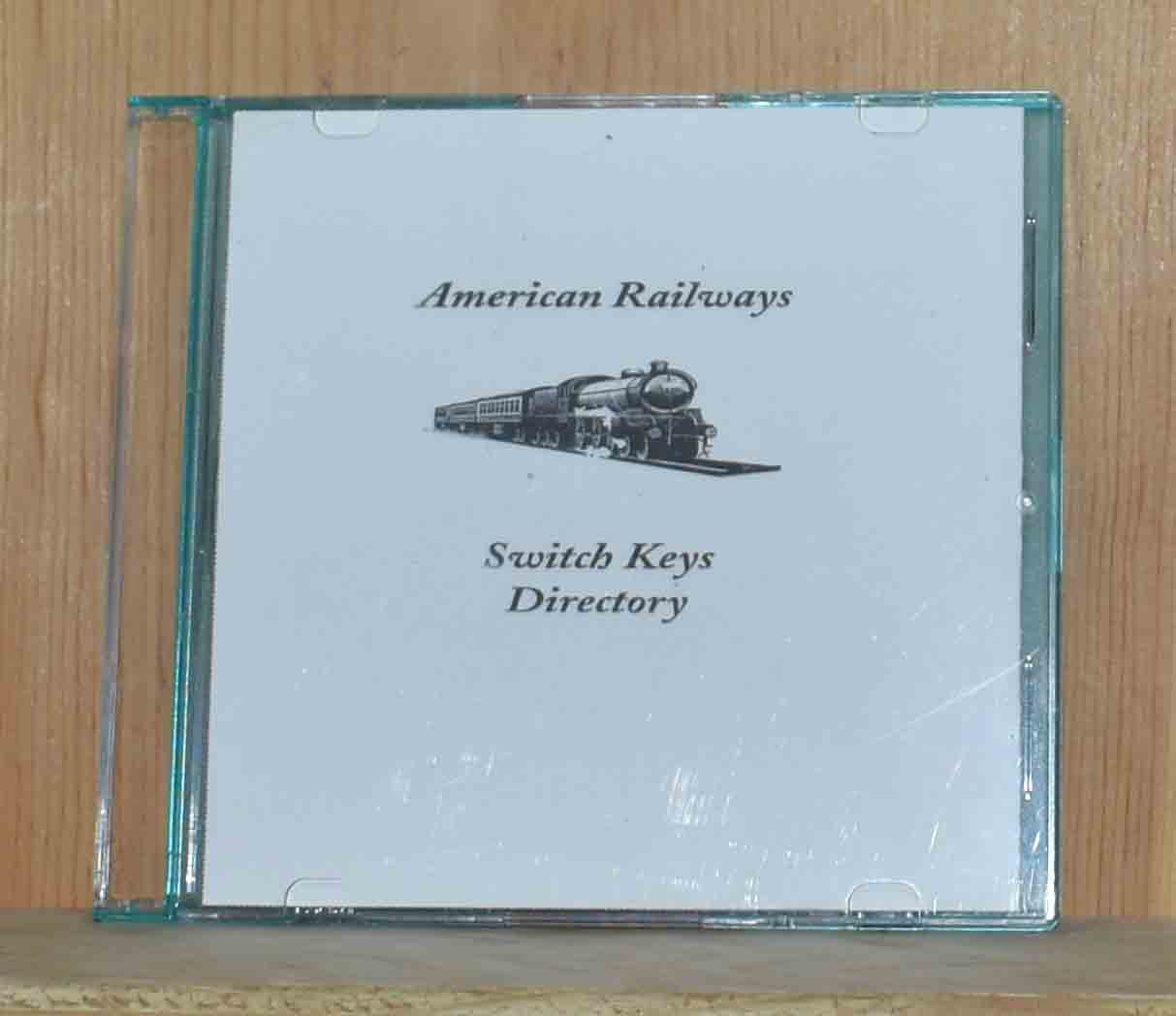

Switch Key Directory
American Railway's Switch Key Directory
Price: HC-$25.00 | CD-$35
Whether your just starting out collecting switch key's or you have been a collector for many years, this 44 page switch key directory is a useful tool. Although, it does not list every railroad key there is, the directory has a 3-D diagram for the most common railroad keys in the collectors circle. With a CD, you can copy the directory to your hard drive and view and enlarge the pages on your computer screen. Price does not include shipping fees.
Upon request, I will "three ring" the pages for a book binder.
Click on image to view larger picture


Don Stewart's Railroad Switch Keys and Padlocks
Switch Keys and Locks Directory
Price: HC-$65.00 | CD-$55
One of the lesser known railroad directories is Don Stewart's Railroad Switch Keys and Padlocks Directory. The book includes 56 pages of switch key pictures, 12 pages of switch lock pictures, 12 supplemental pages including, 2 Canadian key picture pages and 32 pages of railroad names. It's another handy tool for beginners and even veteran collectors. The book contains 117 pages in all and is a ink jet printed copy of the original book. As noted, the CD copy is less expensive than a hard copy. The reason; printer ink and paper prices. With a CD, you can copy the directory to your hard drive and view and enlarge the pages on your computer screen. Price does not include shipping fees.
Upon request, I will "three ring" the pages for a book binder.
Click on image to view larger picture
Dates quoted for keys are approximate dates. Railroad switch keys initials (reporting mark) are assumed to be correct and accurate.
Comments on any railroad initials origin, including (typos), are welcome. Last update 07/15/2025
|



